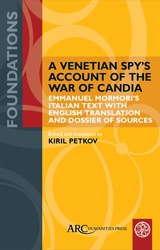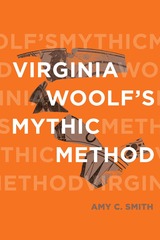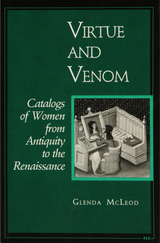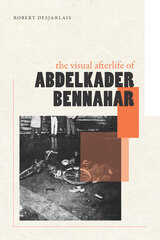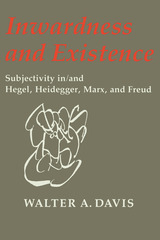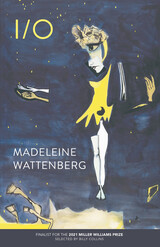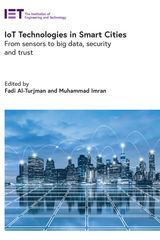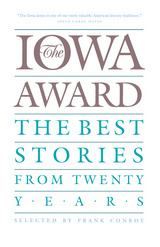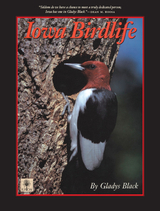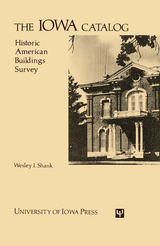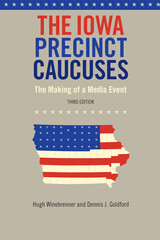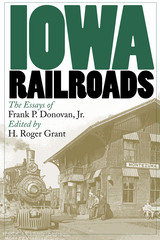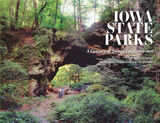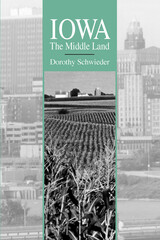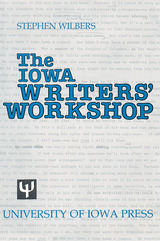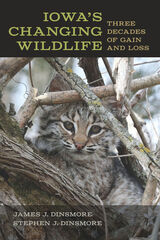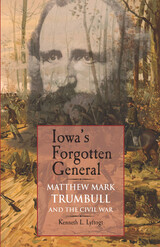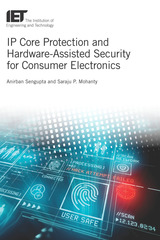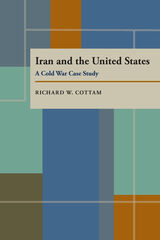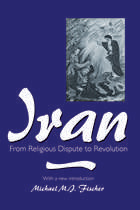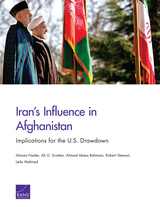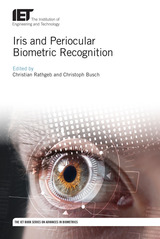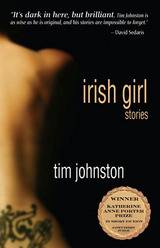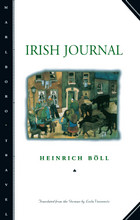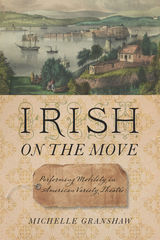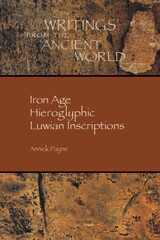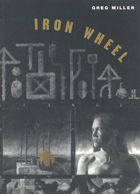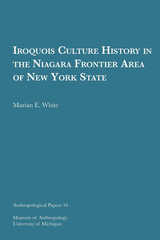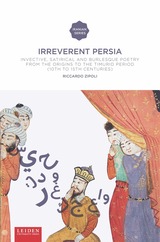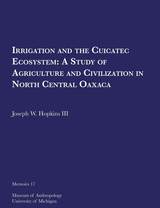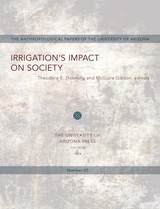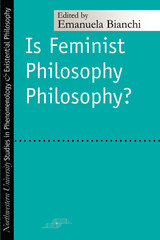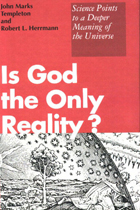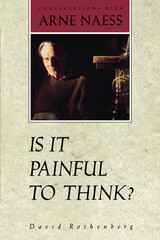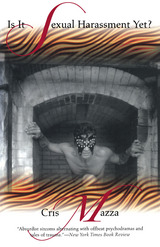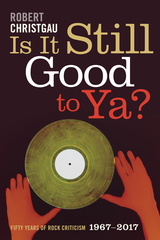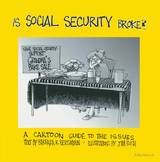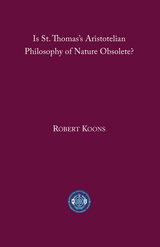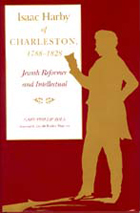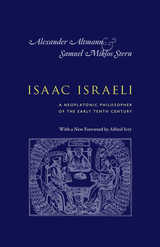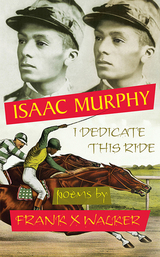Inwardness and Existence: Subjectivity in/and Hegel, Heidegger, Marx, and Freud
Walter A. Davis
University of Wisconsin Press, 1989 A profound, challenging, wide-ranging book, back in print for a new generation “Inwardness and Existence accomplishes what no book before or after has even approximated: it demonstrates with great lucidity and insight the shared philosophical project that animates psychoanalysis, Marxism, existentialism, and Hegelian dialectics. Davis roots the reader in the enterprise of questioning what is given and probing beyond what is safe in order to demonstrate that psychoanalytic inquiry, Marxist politics, existential reflection, and dialectical connection all move within the same orbit. No one who reads it will ever think about existence itself in the same way again. Davis’s landmark work will profoundly transform anyone who reads it.”—Todd McGowan, author of The Real Gaze: Film Theory after Lacan
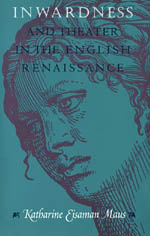 Inwardness and Theater in the English Renaissance
Katharine Eisaman Maus
University of Chicago Press, 1995 Katharine Eisaman Maus explores Renaissance writers' uneasy preoccupation with the inwardness and invisibility of truth. The perceived discrepancy between a person's outward appearance and inward disposition, she argues, deeply influenced the ways English Renaissance dramatists and poets conceived of the theater, imagined dramatic characters, and reflected upon their own creativity.
Reading works by Kyd, Marlowe, Shakespeare, Jonson, and Milton in conjuction with sectarian polemics, gynecological treatises, and accounts of criminal prosecutions, Maus delineates unexplored connections among religious, legal, sexual, and theatrical ideas of inward truth. She reveals what was at stake—ethically, politically, epistemologically, and theologically—when a writer in early modern England appealed to the difference between external show and interior authenticity. Challenging the recent tendency to see early modern selfhood as defined in wholly public terms, Maus argues that Renaissance dramatists continually payed homage to aspects of inner life they felt could never be manifested onstage.
I/O
Madeleine Wattenberg
University of Arkansas Press, 2021 Finalist for the 2021 Miller Williams Poetry Prize. Madeleine Wattenberg’s debut collection I/O, finalist for the 2021 Miller Williams Poetry Prize, alternates between epistolary poems to the mythical figure Io and lyrical interrogations of science, myth, and the historical record. Wattenberg casts Io—the priestess of Hera who was turned into a heifer—as a woman struggling to navigate the terrain between choice and coercion. Accompanying the letters to Io are poems whose explorations range from laboratories to airships in their pursuit of answers. Here the poetic imagination emerges as its own laboratory, drawing inspiration as much from ancient myth as from science and steampunk as it refuses to be constrained by a final conclusion.
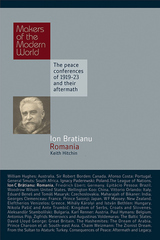 Ionel Bratianu: Romania
Keith Hitchins
Haus Publishing, 2011 At the beginning of 1918 the British War Cabinet endorsed the view of the Prime Minister, David Lloyd George, that after the war "Austria-Hungary should be in a position to exercise a powerful influence in south-east Europe." These reassuring professions were the essence of hypocrisy, since the Allies had already given away, at least on paper, large chunks of Austro-Hungarian territory as bribes to potential allies. In 1916 Romania was promised the whole of Transylvania, the Banat - both components of historic Hungary - and the Bukovina in return for her entry into the war. These promises persuaded the Romanian Prime Minister Ion Bratianu (1864-1927) to intervene in the war on the side of the Allies in 1916. He lead the Romanian delegation to the Paris Peace Conference, where he insisted on those promises to be fulfilled. His often-strained relations with the Big Four and the Supreme Council were further eroded when Romania invaded Hungary. Romania, however, in the end signed and adhered to the Treaty of Saint-Germain-en-Laye with Austria, Neuilly-sur-Seine with Bulgaria, the Treaty of Paris (1920), the Treaty of Trianon with Hungary, and the minorities treaty.
 Ionospheric Radio
Kenneth Davies
The Institution of Engineering and Technology, 1990 Ionospheric Radio replaces an earlier publication Ionospheric Propogation and is aimed at professional scientists, engineers, and students who need an intermediate-level reference and/or text. Students of aeronomy and radio wave propogation are introduced to basic wave theory in absorbing, anisotropic and dispersive media, and to the physics of production, loss and movement of plasma in the ionosphere in the presence of the geomagnetic field. Various radio techniques are described, and applications to the interpretation of ionospheric structures and dynamics are presented. The application of ionospheric data to radio communications problems includes the use of numerical and physical models and prediction techniques, and methods for calculating signal strengths are presented. Topics include Earth-space propagation, ionospheric modification, ionospheric disturbances, propagation by scattering from plasma irregularities, topside sounding, and propagation on frequencies from the extremely low to the super high. Reference lists are extensive and a section of questions tests the reader's understanding of the material.
IoT Technologies in Smart-Cities: From sensors to big data, security and trust
Fadi Al-Turjman
The Institution of Engineering and Technology, 2020 Smart City and sensing platforms are considered some of the most significant topics in the Internet of Things (IoT). Sensors are at the heart of the IoT, and their development is a key issue if such concepts are to achieve their full potential.
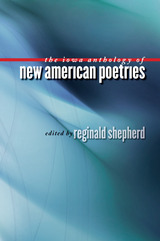 The Iowa Anthology of New American Poetries
Reginald Shepherd
University of Iowa Press, 2004 This landmark collection features emerging poets who combine a commitment to innovation and experimentation with a love for the lyric tradition, whose poetry transcends “mainstream” and avant-garde practice to create new and exciting poetic territories. These new American poetries for the twenty-first century and beyond reach back toward the Modernists and even earlier lyric poetries (such as those of Wyatt, Donne, Keats, and Dickinson) and, simultaneously, reach forward to poetic possibilities not yet realized or even imagined. Most of the poets included here have won publication prizes, awards, and fellowships, and some have had their work anthologized. Others are at earlier stages of recognition but have published in major journals. All are writing highly accomplished work that will soon find a wider audience. One distinguishing feature of this collection is the inclusion of substantial artistic statements from each contributor, in which the poets discuss their works, their influences, their aims, and their poetics. These statements are invaluable in giving readers a point of entry to the poems and can contribute to the development of a conversation among American poets that transcends questions of “craft” to address fundamental issues of poetry as an artistic practice. Shepherd, a leading poet, essayist, and literary critic, is uniquely situated to bring us this important collection: young enough to feel the spirit of newer poets and yet established enough to bring a more experienced eye and a wider view to this groundbreaking project.The Iowa Anthology of New American Poetries highlights some of the most exciting, vital, and productive tendencies in contemporary American poetry and will be a significant milestone for students and teachers of poetry as well as for the general reader.
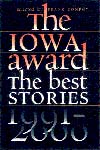 The Iowa Award: The Best Stories, 1991-2000
Frank Conroy
University of Iowa Press, 2001 According to the New York Times Book Review, the Iowa Short Fiction Award is among the most prestigious literary prizes America offers, and the Chicago Tribune has called the honor "a respected prize that annually introduces readers to a writer whose work is little known outside the circle of literary magazine and university publications." In 1991, to both celebrate the stories discovered by the Iowa Short Fiction Award and its companion, the John Simmons Short Fiction Award, and to further acquaint readers with the prize-winning authors, Frank Conroy compiled The Iowa Award: The Best Stories from Twenty Years. He follows that now with The Iowa Award: The Best Stories, 1991-2000, a collection of twenty-one winning selections.
Whether hurtling toward Earth in a disabled airplane, sharing silence with a prostitute, fantasizing about the Manson family, or hiding disgust for a dying friend, the characters in this new collection engage and captivate readers. The authors--from 1991 winners Elizabeth Harris and Sondra Spatt Olsen to newcomers John McNally and Elizabeth Oness--explore the nuances of love, lust, youth, old age, illness, nostalgia, obsession, idiosyncrasy, and surprise.
Their work--judged by such accomplished writers as Ethan Canin, Francine Prose, Ann Beattie, and Stuart Dybek--and the selections Conroy has chosen to share exemplify remarkable writing. Moreover, each writer achieves the expectations of the Iowa Short Fiction Award, established in 1969 to provide a forum for the publication of a uniquely American literary form.
IOWA SHORT FICTION AWARD WINNERS, 1991-2000
David Borofka
Mark Brazaitis
Kathryn Chetkovich
Tereze Glück
Ann Harleman
Elizabeth Harris
Jim Henry
Lisa Lenzo
John McNally
Renée Manfredi
Susan Onthank Mates
Rod Val Moore
Thisbe Nissen
Sondra Spatt Olsen
Elizabeth Oness
Nancy Reisman
Elizabeth Searle
Enid Shomer
Lex Williford
Charles Wyatt
Don Zancanella
Frank Conroy is the director of the Iowa Writers' Workshop at the University of Iowa. He is the author of Midair and Stop-Time, and his short stories and articles have appeared in numerous anthologies and publications.
Iowa Breeding Bird Atlas
Laura Spess Jackson
University of Iowa Press, 1996
The Iowa Breeding Bird Atlas—the first comprehensive statewide survey of Iowa's breeding birds—provides a detailed record of the composition and distribution of the avifauna of the Hawkeye State. The atlas documents the presence of 199 species, 158 of which were confirmed breeding. This landmark volume will alert Iowans to the limited distribution of numerous species and serve as a guide to the management practices—such as forest and wetland management, set-aside programs, reduction in farm chemical use, and crop diversity—which could help insure that many future changes are positive ones. The Iowa Breeding Bird Atlas provides a welcome and much-needed baseline for future comparisons of changes in Iowa's birdlife and, by extension, the lives of all animals in the state.
The Iowa Catalog: Historic American Buildings Survey
Wesley I. Shank
University of Iowa Press, 1979 Preservation enthusiasts, architectural historians, and anyone caught up in chronicles of life in early Iowa will find much to treasure in Wesley Shank's catalog of the state's historical buildings. Heavily illustrated and clearly indexed, it offers a concise essay on development of the building arts from the first log cabins through the Prairie School structures of Frank Lloyd Wright and his followers. Well over 100 private and public buildings are indexed by city and structure. Emeritus professor Wesley Shank of Iowa State University's Department of Architecture highlights design and construction features, historical associations, and details of ownership, using measured drawings, photographs, and written documentation from the Historic American Buildings Survey.
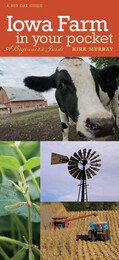 Iowa Farm in Your Pocket: A Beginner's Guide
Kirk Murray
University of Iowa Press, 2010 Newcomers to Iowa are always amazed at the yearly changes in the heights of fields. The landscape expands from ground level to ten feet tall and back again every year: from frozen bare ground in winter to light green sprouts in late spring to dark green corn in late summer to acre upon acre of dry cornstalks at harvest time. Slow and unwieldy machines take up more than their share of the roads, clouds of black or yellow dust cover the fields in spring and fall, pigs (or are they hogs?) in various colors look out from fences, huge tractors with complicated add-ons lumber through the fields, shiny silos linked with tentacles tower above tidy white farmhouses dwarfed by huge red barns. What are the names of all these animals and crops and buildings and machines? As an introduction to the practical magic of Iowa farmscapes, Iowa Farm in Your Pocket won’t tell you everything you should know to be a true Iowan, but it will tell you enough that you can survive a day at the state fair without embarrassing yourself. Iowa ranks first in the U.S. in the number of hogs, egg layers, and pullets and in the production of corn and soybeans. Yes, the number of farms is shrinking, and their size is increasing. Yes, most Iowans now live in towns, compared to a hundred years ago, when the majority lived on farms. But despite urbanization and the rise of corporate farming, the family farm—more than 77,000 of them at last count—is still a vital part of Iowa’s identity. Fly over the state in summertime or drive across it in fall, when the headlights of tractors shine from the fields at night and golden mountains of corn are stacked around elevators, and it’s easy to see that an enormous percentage is farmland—more than 85 percent, in fact. Kirk Murray’s loving and endearing photographs make this guide the perfect companion for drives in the countryside in all seasons. They celebrate the rich activities and varied beauties of each season on the farm, from the starkness of winter whites to the pale and rich greens of spring and summer to the rust-reds and golds of fall. Murray’s photos of sprouting corn at dawn, a summer sun shining on a farm pond, and a full moon over a silver silo echo Grant Wood and Vincent Van Gogh; his photos of tilling, planting, and harvesting are bright and energizing; his scenes of barnyards and fields and farmsteads are colorful and luminous; and his photos of farm animals are just plain fun. With eighty full-color photographs of the most common animals, activities, crops, and buildings that you can expect to see whenever you pass a family farmstead, Iowa Farm in Your Pocket will be a treat for all newcomers to a state where corn and beans and hogs rule, for both urban and rural children and their parents, and for all those who want to revisit memories of growing up on a farm.
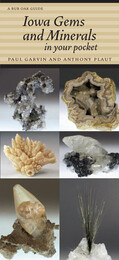 Iowa Gems and Minerals in Your Pocket
Paul Garvin and Anthony Plaut
University of Iowa Press, 2012 From the spiky teeth of a geode containing sparkling quartz crystals, the rich browns and golds of smoky quartz and goethite needles on calcite, and the coral-like branches of plumose barite to the abstract reds and whites of polished agate cabochons, world-class mineral crystals are harvested from the rocks of the Hawkeye State. Collecting these high-quality crystals requires access to active mines, pits, and quarries, and individual collectors are rarely allowed entrance to these facilities. With information about each specimen’s type, source, size, and current location, Paul Garvin and Anthony Plaut’s Iowa Gems and Minerals in Your Pocket provides access to the glittering, gleaming world of Iowa crystals. Most, if not all, of Iowa’s gems and minerals are products of crystallization in underground cavities that filled with water containing dissolved chemicals. The famed Iowa geodes (Iowa’s state rock) are products of a complex process of replacement and cavity-filling in the Warsaw Shale. Armored by a rind of tough chalcedonic quartz, these spheroidal masses, which range up to more than a meter across, weather out of the host rock and accumulate along streams in the southeastern part of the state. During the Pleistocene Epoch, large masses of glacial ice rafted the ultra-fine-grained variety of quartz called Lake Superior agates, which had previously weathered out of their host rocks, southward into Iowa. They can be found in the gravels that have accumulated along major streams in the eastern half of the state. Iowa’s long record of mining lead, coal, gypsum, and limestone contains a rich history; the forty-seven mineral specimens inIowa Gems and Minerals in Your Pocketmake up a fascinating illustrated guide to that history. Carefully lit and photographed to reveal both maximum detail and maximum beauty, each specimen becomes a work of art.
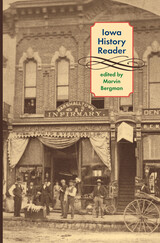 Iowa History Reader
Marvin Bergman
University of Iowa Press, 1996 In 1978 historian Joseph Wall wrote that Iowa was “still seeking to assert its own identity. . . . It has no real center where the elite of either power, wealth, or culture may congregate. Iowa, in short, is middle America.” In this collection of well-written and accessible essays, originally published in 1996, seventeen of the Hawkeye State’s most accomplished historians reflect upon the dramatic and not-so-dramatic shifts in the middle land’s history in the nineteenth and twentieth centuries.
Marvin Bergman has drawn upon his years of editing the Annals of Iowa to gather contributors who cross disciplines, model the craft of writing a historical essay, cover more than one significant topic, and above all interpret history rather than recite it. In his preface to this new printing, he calls attention to publications that begin to fill the gaps noted in the 1996 edition.
Rather than survey the basic facts, the essayists engage readers in the actual making of Iowa’s history by trying to understand the meaning of its past. By providing comprehensive accounts of topics in Iowa history that embrace the broader historiographical issues in American history, such as the nature of Progressivism and Populism, the debate over whether women’s expanded roles in wartime carried over to postwar periods, and the place of quantification in history, the essayists contribute substantially to debates at the national level at the same time that they interpret Iowa’s distinctive culture.
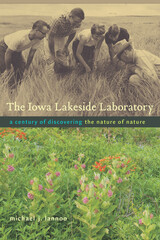 The Iowa Lakeside Laboratory: A Century of Discovering the Nature of Nature
Michael J. Lannoo
University of Iowa Press, 2012 Imagine a place dedicated to the long-term study of nature in nature, a permanent biological field station, a teaching and research laboratory that promotes complete immersion in the natural world. Lakeside Laboratory, founded on the shore of Lake Okoboji in northwestern Iowa in 1909, is just such a place. In this remarkable and insightful book, Michael Lannoo sets the story of Lakeside Lab within the larger story of the primacy of fieldwork, the emergence of conservation biology, and the ability of field stations to address such growing problems as pollution, disease, habitat loss, invasive species, and climate change. At the intersection of major ecosystems with distinct plant and animal communities and surrounded by what, ironically, may be the most intensely cultivated landscape on earth, Lakeside has a long history of rubber-boot biologists saturated in the spirit that grounds the new discipline of conservation biology, and Lannoo brings this history to life with his descriptions of the people and ideas that shaped it. Lakeside’s continuing commitment to bringing the laboratory to the field rather than bringing the field to the lab has supported a focus on mammalogy, ornithology, herpetology, ichthyology, invertebrate biology, parasitology, limnology, and algology, subjects rarely taught now on university campuses but crucial to the planet’s health. Today’s huge array of environmental problems can best be solved by people who have learned about nature within nature at a place with a long history of research and observation, people who thoroughly understand and appreciate nature’s cogs and wheels. Lakeside Lab and biological research stations like it have never been more relevant to science and to society at large than they are today. Michael Lannoo convinces us that while Lakeside’s past is commendable, its future, grounded in ecological principles, will help shape a more sustainable society.
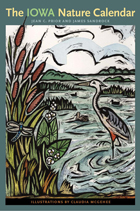 The Iowa Nature Calendar
Jean C. Prior
University of Iowa Press, 2007
One of the joys of midwestern living is the variety brought by the changing seasons. The lyrical text of The Iowa Nature Calendar brings a year to life—perpetually—through a daily appreciation of the chirping, blooming, singing details of Iowa’s natural world.
Because keeping track of past years’ observations will enrich your enjoyment of the current year, each month has ample room to add your own notes on blooming wildflowers, nesting birds, semaphoring ?reflies, and clicking cricket frogs as well as birthdays, anniversaries, and other annual celebrations.
The authors, both long-time Iowa naturalists, have included birth dates of notable Iowa conservationists, nature-related events from Bald Eagle Days to Christmas Bird Counts to the annual Frog and Toad Survey, and the names of the full moons from January’s Wolf Moon to December’s Long Night Moon. Particularly user-friendly are their suggestions for visits to state parks and preserves; for example, look for bison calves at Neal Smith National Wildlife Refuge in June and spectacular flocks of migrating snow geese at DeSoto Bend Wildlife Refuge in October. They also remind you to put up purple martin houses and bat boxes in the spring, sign up for a class at Lakeside Laboratory in the summer, clean out your bluebird boxes in the fall, and watch for the glow of the aurora borealis in wintertime. Throughout they present intriguing, well-chosen information certain to appeal to all nature lovers from amateur gardeners to professional botanists.
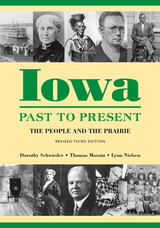 Iowa Past to Present: The People and the Prairie, Revised Third Edition
Dorothy Schwieder
University of Iowa Press, 2011 In Iowa Past to Present, originally published in 1989, Dorothy Schwieder, Thomas Morain, and Lynn Nielsen combine their extensive knowledge of Iowa’s history with years of experience addressing the educational needs of elementary and middle-school students. Their skillful and accessible narrative brings alive the people and events that populate Iowa’s rich heritage. This revised edition brings the story into the twenty-first century and makes a paperback edition available for the first time. Beginning with Iowa’s changing geological landforms, the authors progress to historical, political, and social aspects of life in Iowa through the present day. The chapters explore such topics as the native peoples of the region; pioneer settlements on the prairie; the building of the railroad; the Civil War; the influence of immigrants; the formation of the state government and development of the current politic system; education; the Great Depression; religion (including a separate chapter on Mennonites and the Old Order Amish); life on the farm; business, industry, and economics; and the turmoil caused by World War I, World War II, and the Vietnam War. A new chapter written specifically for this edition explains the impact of 9/11 on Iowa, discusses the roles played by Iowa soldiers in Iraq and Afghanistan, and updates information on the newest immigrant populations of the state. The authors have teamed with Iowa Public Television's Iowa Pathways project to create a new Iowa Past to Present teacher's guide available online at < http://iptv.org/iowapathways>. This guide includes additional articles, videos, links, and curriculum resources to support the textbook. Iowa Past to Present, its inviting format enhanced by hundreds of illustrations, is informed by three of the state’s most respected historians. The latest revision continues to be an important part of the curriculum for teachers and parents wanting their children to know all about Iowa history.
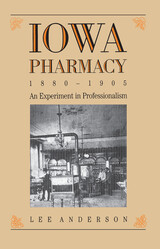 Iowa Pharmacy, 1880-1905: Experiment In Professionalism
Lee Anderson
University of Iowa Press, 1989
Popular culture remembers the settling of the Midwest as a golden era of unbounded opportunity, a time when every farm was a family farm and every farmer glowed with health. Pioneers in nineteenth-century Iowa, however, had to battle a formidable host of diseases during this golden era—malaria was endemic, smallpox and dysentery occurred in widespread epidemics, and typhoid, cholera, scarlet fever, and diphtheria had their seasons. Physicians in the growing Hawkeye State had little of the status and skill they command today, and herbalists, hydropaths, eclectics, Thomsonians, and homeopaths competed with purveyors of home remedies and patent medicines for their services.
The druggists of pioneer Iowa were artisan producers who compounded and prescribed botanical and chemical medicines, sold a variety of other merchandise from perfumes to paints, and dispensed the secret concoctions known as patent medicines, guaranteed to cure any condition, however alarming. In this compelling study, Lee Anderson tells the story of these early pharmacists and their hard-fought quest to legitimize their profession. While he confronts the politics of professionalism and the purpose of the pharmaceutical science and education, he also illuminates the mutual role of physicians and pharmacists in frontier health care.
With skill and humor, Anderson recreates an exciting time in midwestern history and provides insights into national issues of professionalism in medicine. His study will appeal to scholars in the history of medicine, pharmacy, and professionalism and to everyone interested in the history of the Midwest.
Iowa Railroads: The Essays of Frank P. Donovan, Jr.
H. Roger Grant
University of Iowa Press, 2000 What began as a study of the Minneapolis & St. Louis Railway stretched into more than a dozen contributions on Hawkeye state railroad topics. By 1969 Donovan had examined Iowa's “Little Three”: Chicago Great Western, Illinois Central, and Minneapolis & St. Paul as well as the state's “Big Four”: Chicago & North Western; Chicago, Burlington & Quincy; Chicago, Milwaukee, St. Paul & Pacific; and Chicago, Rock Island & Pacific. In addition to these seven core carriers, Donovan covered the state's less prominent railroads: Atchison, Topeka & Santa Fe; Great Northern; and Union Pacific and Wabash. Moreover, he contributed an issue on Iowa's principal interurbans, most of which survived into the 1950s as electric-powered freight-only short lines. In uniting Donovan's articles into a single volume, Iowa Railroads provides the most complete history of Iowa's rail heritage.
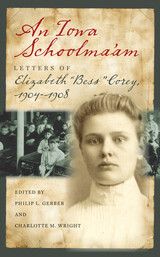 An Iowa Schoolma’am: Letters of Elizabeth “Bess” Corey, 1904–1908
Philip L. Gerber
University of Iowa Press, 2011 Readers everywhere fell for Elizabeth Corey, the irrepressible, independent, and fearless Bachelor Bess, whose letters home to Iowa gave us a firsthand account of her adventures on a South Dakota homestead from 1909 to 1919. Now, through the letters she wrote home between 1904 and 1908, readers can make the acquaintance of a younger Bess facing the realities of life in an Iowa country school system with energy, enthusiasm, and ambition. Sixteen-year-old Bess wrote her early letters when she was away from the family farm, trying to complete the ninth grade so she could become a teacher. That schooling was cut short in 1905, when her father died and she returned home to help her mother. Later that year, she received a provisional certificate allowing her to teach, which she did from 1905 to 1909 in a succession of rural schools across Shelby and Cass counties in Iowa. Initially a reluctant teacher, she had an infinite capacity for productive work that propelled her toward success in the classroom. A determinedly lighthearted attitude toward life, a talent for making congenial friends and for making herself at home as she boarded with one family after another, a relentless devotion to her own family, and a drive to communicate all combine to animate her letters home. Always colorful and colloquial, unusually detailed and frank, Bess’s letters are authentic documents of a discrete American time and place. Full of puns, hyperbole, drama, and above all else honesty and authenticity, the eighty-three letters describe barefooted pupils, cantankerous and cooperative parents and school board members, classroom activities, and school picnics against a frugal background of early twentieth-century chores, social occasions, party lines for telephones, chautauquas, church suppers and revivals, new ribbons for second-hand clothes, and buggy and train rides—all seen through the eyes of this talented teenage farm girl not much older than some of her students. Of notable value is the light Bess casts upon the teaching profession as it was practiced in isolated midwestern areas at the moment when our nation determined that, come what may, every American child was going to have access to a basic grammar-school education. Beyond the pleasure of listening to a straight-talker who pulls no punches, one who expects to receive “some of the praise most of the work and all of the cussing” in return for her efforts, Bess’s letters create a veritable concordance of teaching in a one-room rural schoolhouse, a chapter of daily American life all but lost.
 The Iowa State Fair
Kurt Ullrich
University of Iowa Press, 2014 Every year in early August, a breeze borne by silent messengers from another time blows through Iowa. It carries a whiff of something wonderful, something far off and a bit unclear, yet oddly familiar. It's a reminder that an extraordinary annual event is about to take place, just as it has for more than 150 years: the Iowa State Fair.
In 2013, Kurt Ullrich set out to chronicle the magic of the Iowa State Fair in words and photographs. Join him as August days and nights blow warm and easy over the fairgrounds, brushing lightly against fellow travelers on this earth, both human and not. He captures precious moments of extreme joy and unbridled delight in these beautiful black-and-white images, celebrating the brash rural energy of the fair, from Big Wheel races to people-watching goats, fair queen contestants to arm wrestlers, Percherons to ponies. Prize pigs, prize sheep, prize apples, and the famous butter cow all have their moment in the limelight. Iowa’s very best ear of corn and old friends reminiscing outside their RVs draw the photographer’s fond eye, as do brightly lit beer stands and the brilliant arc of the Ferris wheel against the night sky.
If you always go to the Iowa State Fair, this book is for you. If you’ve never been, it will show you what you’re missing—and you’ll understand why it’s well past time you dropped by.
Iowa State Parks: A Century of Stewardship, 1920-2020
Rebecca Conard, Angela Corio, and Jim Scheffler
University of Iowa Press, 2020 In 1920, Iowa dedicated its first two state parks. In the century since, the Iowa State Parks system has evolved into a broad array of lands and waters that represent a legacy of tireless stewardship. Iowa State Parks commemorates the origins of our state parks and the riches they offer in the present.
The photo essays at the heart of this book feature the artistry of well-known nature photographers such as Carl Kurtz, Brian Gibbs, Don Poggensee, and Larry Stone. The images help tell the stories of Iowa’s state parks, recreation areas, preserves, and forests. A historical overview sets the stage, followed by essays on key aspects of our park system.
Iowa: The Middle Land
Dorothy Schwieder
University of Iowa Press, 1996 In this engrossing history of the Hawkeye State, Dorothy Schweider reveals a place of fascinating grassroots politics, economic troubles and triumphs, surprising cultural diversity, and unsung natural beauty. Above all, this is the history of the people of Iowa and the lives they have led—the accomplishments of both ordinary and not-so-ordinary Iowans.
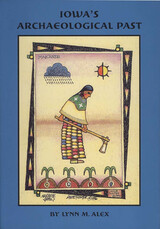 Iowa's Archaeological Past
Lynn M. Alex
University of Iowa Press, 2000 Iowa has more than eighteen thousand archaeological sites, and research in the past few decades has transformed our knowledge of the state's human past. Drawing on the discoveries of many avocational and professional scientists, Lynn Alex describes Iowa's unique archaeological record as well as the challenges faced by today's researchers, armed with innovative techniques for the discovery and recovery of archaeological remains and increasingly refined frameworks for interpretation.
The core of this book—which includes many historic photographs and maps as well as numerous new maps and drawings and a generous selection of color photos—explores in detail what archaeologists have learned from studying the state's material remains and their contexts. Examining the projectile points, potsherds, and patterns that make up the archaeological record, Alex describes the nature of the earliest settlements in Iowa, the development of farming cultures, the role of the environment and environmental change, geomorphology and the burial of sites, interaction among native societies, tribal affiliation of early historic groups, and the arrival and impact of Euro-Americans. In a final chapter, she examines the question of stewardship and the protection of Iowa's many archaeological resources.
Iowa's Changing Wildlife: Three Decades of Gain and Loss
James J. Dinsmore
University of Iowa Press, 2023 Much has changed with Iowa’s wildlife in the years 1990 to 2020. Some species such as Canada goose, wild turkey, and white-tailed deer that once were rare in Iowa are now common, and others like sandhill crane, river otter, and trumpeter swan are becoming increasingly abundant. Iowa’s Changing Wildlife provides an up-to-date, scientifically based summary of changes in the distribution, status, conservation needs, and future prospects of about sixty species of Iowa’s birds and mammals whose populations have increased or decreased in the past three decades. Readers will learn more about familiar species, become acquainted with the status of less familiar species, and find out how many of the species around them have fared during this era of transformation.
Iowa's Forgotten General: Matthew Mark Trumbull and the Civil War
Kenneth L. Lyftogt
University of Iowa Press, 2005 Matthew Mark Trumbull was a Londoner who immigrated at the age of twenty. Within ten years of his arrival in America, he had become a lawyer in Butler County, Iowa; two years later a member of the state legislature; and two years after that a captain in the Union Army. By the end of the Civil War, he was a brevet brigadier general, and in his later years he was an author and lecturer. Kenneth Lyftogt’s biography details the amazing life of this remarkable man, also shedding light on the histories of the Third Iowa Volunteer Infantry and the Ninth Iowa Volunteer Cavalry.
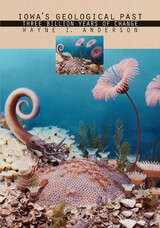 Iowa's Geological Past: Three Billion Years Of Change
Wayne I. Anderson
University of Iowa Press, 1998 Iowa's rock record is the product of more than three billion years of geological processes. The state endured multiple episodes of continental glaciation during the Pleistocene Ice Age, and the last glacier retreated from Iowa a mere (geologically speaking) twelve thousand years ago. Prior to that, dozens of seas came and went, leaving behind limestone beds with rich fossil records. Lush coal swamps, salty lagoons, briny basins, enormous alluvial plains, ancient rifts, and rugged Precambrian mountain belts all left their mark. In Iowa's Geological Past, Wayne Anderson gives us an up-to-date and well-informed account of the state's vast geological history from the Precambrian through the end of the Great Ice Age. Anderson takes us on a journey backward into time to explore Iowa's rock-and-sediment record. In the distant past, prehistoric Iowa was covered with shallow seas; coniferous forests flourished in areas beyond the continental glaciers; and a wide variety of animals existed, including mastodon, mammoth, musk ox, giant beaver, camel, and giant sloth. The presence of humans can be traced back to the Paleo-Indian interval, 9,500 to 7,500 years ago. Iowa in Paleozoic time experienced numerous coastal plain and shallow marine environments. Early in the Precambrian, Iowa was part of ancient mountain belts in which granite and other rocks were formed well below the earth's surface. The hills and valleys of the Hawkeye State are not everlasting when viewed from the perspective of geologic time. Overall, Iowa's geologic column records an extraordinary transformation over more than three billion years. Wayne Anderson's profusely illustrated volume provides a comprehensive and accessible survey of the state's remarkable geological past.
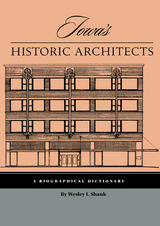 Iowa's Historic Architects: A Biographical Dictionary
Wesley I. Shank
University of Iowa Press, 1998 Who were Iowa's historic architects? In this extensively researched dictionary, Wesley Shank answers that question by providing biographies of more than two hundred architects who practiced in Iowa before 1950 and who maintained an office in the state for at least part of their careers.
Among the prominent Iowa architects of the late nineteenth and early twentieth centuries were a remarkable few who had little training in architecture; their natural talents and their capacity for hard work made up for their lack of experience. Beginning in 1927, however, an Iowa architect had to meet state requirements of experience and training in order to practice. Shank includes an introduction to the history of the profession in Iowa: the development of professional education and training, the founding of professional societies and their roles, the different personalities and talents of the architects, the demography of architectural offices in the state, and the relative importance of Iowa architects both statewide and nationally.
For each architect Shank has gathered as much personal and professional information as possible: dates and places of birth and death; parents, spouses, and children; education and professional training; personality and competency; when and where they practiced, with whom, and when their partnerships began and ended; what roles they played in their communities and their profession; and the representative buildings they designed.
As a reflection of both national and state history, Iowa's Historic Architects will be valuable to professionals in the fields of architecture, American history, and historic preservation as well as to general readers.
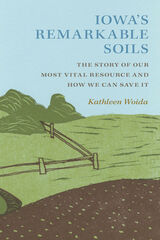 Iowa's Remarkable Soils: The Story of Our Most Vital Resource and How We Can Save It
Kathleen Woida
University of Iowa Press, 2021 Sometimes called “black gold,” Iowa’s deep, rich soils are a treasure that formed over thousands of years under the very best of the world’s grasslands—the tallgrass prairie. The soils are diverse and complex and hold within them a record not only of Iowa’s prehistoric past, but also of the changes that took place after settlers utterly transformed the land, as well as the ongoing adjustments taking place today due to climate change. In language that is scientifically sound but accessible to the layperson, Kathleen Woida explains how soils formed and have changed over centuries and millennia in the land between two rivers.
Its soils are what make Iowa a premier agricultural state, both in terms of acres planted and bushels harvested. But in the last hundred years, large-scale intensive agriculture and urban development have severely degraded most of our soils. However, as Woida documents, some innovative Iowans are beginning to repair and regenerate their soils by treating them as the living ecosystem and vast carbon store that they are. To paraphrase Aldo Leopold, these new pioneers are beginning to see their soils as part of a community to which they and their descendants belong, rather than commodities belonging to them.
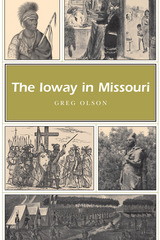 The Ioway in Missouri
Greg Olson
University of Missouri Press, 2008 Although their ancestors came from the Great Lakes region and they now live in several midwestern states, the Ioway (Baxoje) people claim a rich history in Missouri dating back to the eighteenth century. Living alongside white settlers while retaining their traditional way of life, the tribe eventually had to make difficult choices in order to survive—choices that included unlikely alliances, resistance, and even violence. This is the first book on the Ioway to appear in thirty years and the first to focus on their role in Missouri’s colonial and early statehood periods. Greg Olson tells how the Ioway were attracted to the rich land between the Mississippi and Missouri rivers as a place in which they could peacefully reside. But it was here that they ended up facing the greatest challenges to their survival as a people, with leaders like White Cloud and Great Walker rising to meet those demands. Olson draws on interviews with contemporary tribal members to convey an understanding of Ioway beliefs, practices, and history, and he incorporates reports of Indian agents and speeches of past Ioway leaders to illuminate the changes that took place in the tribe’s traditional ways of life. He tells of their oral traditions and creation stories, their farming and hunting practices, and their alliances with neighboring Indians, incoming settlers, and the U.S. government. In describing these alliances, he shows that the Ioway did not always agree among themselves on the direction they should take as they navigated the crosscurrents of a changing world, and that the attempts of some Ioway leaders to adapt to white society did not prevent the tribe’s descent into poverty and despair or their ultimate removal from their lands. As modern Ioway in Kansas and Oklahoma work to recover the history of their people—and as local historians recognize their important place in Missouri history—Olson’s book offers a balanced account of the profound effects on the Ioway of other tribes, explorers, and settlers who began to move into their homelands after the Louisiana Purchase. Written for a general audience, it is a useful, accessible introduction to the changing fortunes of the Ioway people in the era of exploration, colonialism, and early statehood.
IP Core Protection and Hardware-Assisted Security for Consumer Electronics
Anirban Sengupta
The Institution of Engineering and Technology, 2019 IP Core Protection and Hardware-Assisted Security for Consumer Electronics presents established and novel solutions for security and protection problems related to IP cores (especially those based on DSP/multimedia applications) in consumer electronics. The topic is important to researchers in various areas of specialization, encompassing overlapping topics such as EDA-CAD, hardware design security, VLSI design, IP core protection, optimization using evolutionary computing, system-on-chip design and application specific processor/hardware accelerator design.
 Parisiana poetria
John of Garland
Harvard University Press, 2020 The Parisiana poetria, first published around 1220, expounds the medieval theory of poetry (ars poetica) and summarizes early thirteenth-century thought about writing. While the text draws on predecessors such as the Rhetorica ad Herennium, Horace’s Ars poetica, and work by Geoffrey of Vinsauf, its style and content reveal the unique experience of its author, John of Garland, a prominent teacher of the language arts at the University of Paris. John was also a well-read poet with broad tastes, and his passion for poetry, as well as for fine prose composition, is on display throughout the Parisiana poetria. This treatise is the only thoroughgoing attempt to unite three distinct arts—quantitative poetry, rhythmic poetry, and prose composition, especially of letters—under a single set of rules. The sections on low, middle, and high style, illustrated by his “Wheel of Virgil,” have attracted wide attention; and his long account of rhymed poetry is the most complete that has survived. This volume presents the most authoritative edition of the Latin text alongside a fresh English translation.
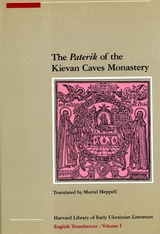 The Paterik of the Kievan Caves Monastery
Muriel Heppell
Harvard University Press The Kievan Caves Monastery was for centuries the most important Ukrainian monastic establishment. It was the outstanding center of literary production, and its monks served throughout the territory of Rus’ as bishops and monastic superiors. The most detailed source for the monastery early history is its Paterik, a thirteenth-century compilation containing stories reaching back to the monastery’s foundation in the mid-eleventh century. Muriel Heppell now makes available the first complete English translation of the Paterik. With an introduction, map, and several appendices, Heppell discusses the work’s Byzantine background and also sets it in its historical context.
The Harvard Library of Early Ukrainian Literature is one portion of the Harvard Project in Commemoration of the Millennium of Christianity in Rus’-Ukraine sponsored by the Ukrainian Research Institute of Harvard University. The Library encompasses literary activity in Rus’-Ukraine from its beginning in the mid-eleventh century through the end of the eighteenth century. Included are ecclesiastical and secular works written in a variety of languages, such as Church Slavonic, Old Rus’, Ruthenian (Middle Ukrainian), Polish, and Latin. This linguistic diversity reflects the cultural pluralism of Ukrainian intellectual life in the medieval and early-modern periods. The Library consists of three parts: Texts, which publishes original works, in facsimile whenever appropriate; English Translations; and Ukrainian Translations. Each volume begins with an introductory essay by a specialist. The two translation series also include maps, appendices, and indices. A cumulative index to the entire Library is planned.
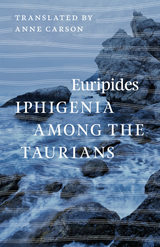 Iphigenia among the Taurians
Euripides
University of Chicago Press, 2014 I am Iphigenia, daughter of the daughter of Tyndareus
My father killed me
Few contemporary poets elicit such powerful responses from readers and critics as Anne Carson. The New York Times Book Review calls her work “personal, necessary, and important,” while Publishers Weekly says she is “nothing less than brilliant.” Her poetry—enigmatic yet approachable, deeply personal yet universal in scope, wildly mutable yet always recognizable as her distinct voice—invests contemporary concerns with the epic resonance and power of the Greek classics that she has studied, taught, and translated for decades.
Iphigenia among the Taurians is the latest in Carson’s series of translations of the plays of Euripides. Originally published as part of the third edition of Chicago’s Complete Greek Tragedies, it is published here as a stand-alone volume for the first time. In Carson’s stunning translation, Euripides’s play—full of mistaken identities, dangerous misunderstandings, and unexpected interventions by gods and men—is as fierce and fresh as any contemporary drama. Carson has accomplished one of the rarest feats of translation: maintaining fidelity to a writer’s words even as she inflects them with her own unique poetic voice.
Destined to become the standard translation of the play, Iphigenia among the Taurians is a remarkable accomplishment, and an unforgettable work of poetic drama.
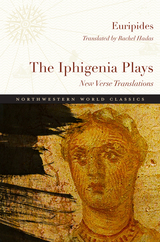 The Iphigenia Plays: New Verse Translations
Euripides, Translated by Rachel Hadas
Northwestern University Press, 2018 At the heart of Iphigenia’s enduring story are an ambitious, opportunistic, and indecisive leader and the daughter whose life he is willing to sacrifice. In The Iphigenia Plays, poet Rachel Hadas offers a new generation of readers a graceful, clear, and powerful translation of Euripides’s two spellbinding (and very different) plays drawn from this legend: Iphigenia in Aulis and Iphigenia among the Taurians.
Even for readers unfamiliar with Greek mythology or drama, these plays are suspenseful, poignant, and haunting. Euripides’s ability to evoke emotion and raise difficult questions has long engaged viewers and readers alike. Taken together, the two plays illuminate timeless human conflicts, showcasing individuals and families ensnared by the fury of war, of politics, of religion, and of ambition. Euripidean characters are always second-guessing themselves; now new readers can also ponder their dilemmas.
Poet and translator Rachel Hadas highlights the lyricism, emotion, and sheer humanity of Euripides’s plays. Mordant humor is here; so are heartbreak and tenderness. Hadas offers an Iphigenia story that resonates with our own troubled times and demonstrates anew the genius of one of the world’s supreme dramatists.
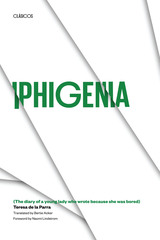 Iphigenia: (The diary of a young lady who wrote because she was bored)
By Teresa de la Parra
University of Texas Press, 1994 Winner, Harvey L. Johnson Award, Southwest Council on Latin American Studies, 1994 "...I didn't want to tell you the truth for anything in the world, because it seemed very humiliating to me..." The truth is that Iphigenia is bored and, more than bored, buried alive in her grandmother's house in Caracas, Venezuela. After the excitement of being a beautiful, unchaperoned young woman in Paris, her father's death has sent her back to a forgotten homeland, where rigid decorum governs. Two men—the married man she adores and the wealthy fiancé she abhors—offer her escape from her prison. Which of these impossible suitors will she choose? Iphigenia was first published in 1924 in Venezuela, where it hit patriarchal society like a bomb. Teresa de la Parra was accused of undermining the morals of young women with this tale of a passionate woman who lacks the money to establish herself in the liberated, bohemian society she craves. Yet readers have kept the novel alive for decades, and this first English translation now introduces its heroine to a wider audience.
 Pneumonia by R. Heffron, Introduction by Maxwell Finland. The Biology of Pneumococcus by B. White, New Foreword by Robert Austin
Roderick Heffron and Benjamin White
Harvard University Press, 1979 The search for effective immunization against pneumonia was a principal avenue of investigation before the advent of The search for effective immunization against pneumonia was a principal avenue of investigation before the advent of antibiotics made such an effort appear unnecessary. Recently, however, the limitations of antibiotic therapy have become increasingly evident, and interest has been renewed in many of the threads of research which have all but lain dormant since the 1930s. In 1978, a pneumococcal vaccine was licensed by the F.D.A., merely as evidence of a renaissance in pneumococcal research which is now taking place. We are pleased to be reissuing two classic volumes which provide a unique repository of data amassed prior to the time when penicillin precluded further exhaustive observation of the unmodified infection.
Heffron’s Pneumonia is a compilation and analysis of all aspects of pneumococcal disease, including the distribution of pneumococcal types, the pathology of pneumonia, its epidemiology, symptoms, signs, complications, diagnosis, prognosis, and immunology. With a complete cross-reference index and an extensive bibliography, Heffron’s book is still the definitive work on pneumococcal infections.
White’s Biology of Pneumococcus contains the wealth of information acquired in the first six decades following the discovery of the pneumococcus. With a bibliography drawing together some 1593 papers, White’s volume is of unquestionable significance as a historical record and the basis for further study.
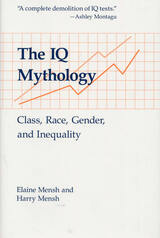 The IQ Mythology: Class, Race, Gender, and Inequality
Elaine Mensh and Harry Mensh
Southern Illinois University Press, 1991
Ever since Alfred Binet carried out a 1904 commission from France’s minister of public instruction to devise a means for deciding which pupils should be sent to what would now be called special education classes, IQ scores have been used to label and track children. Those same scores have been cited as "proof" that different races, classes, and genders are of superior and inferior intelligence.
The Menshes make clear that from the beginning IQ tests have been fundamentally biased. Offered as a means for seeking solutions to social problems, the actual measurements have been used to maintain the status quo. Often the most telling comments are from the test-makers themselves, whether Binet ("little girls weak in orthography are strong in sewing and capable in the instruction concerning housekeeping; and, all things considered, this is more important for their future") or Wigdor and Garner ("naive use of intelligence tests . . . to place children of linguistic or racial minority status in special education programs will not be defensible in court").
Among the disturbing facts that the authors share is that there is mounting political pressure for more tests and testing despite a court trial in which the judge stated that "defendants’ expert witnesses, even those clearly affiliated with the companies that devise and distribute the standardized intelligence tests, agreed, with one exception, that we cannot truly define, much less measure, intelligence." The testing firms have responded to this carefully orchestrated need with new products that extend even to the IQ testing of three-month-old infants. The authors stress that, if the testers prevail, there is little doubt that these and similar tests would be used "ad infinitum to justify superior and inferior education along class and racial lines."
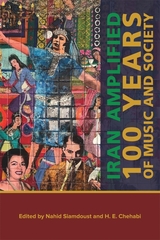 Iran Amplified: One Hundred Years of Music and Society
Nahid Siamdoust and H. E. Chehabi
Harvard University Press Iran Amplified: One Hundred Years of Music and Society, the first edited volume on music in modern Iran, presents a cross-genre collection of compelling scholarship, musician narratives, and primary sources. This groundbreaking volume, seizing on this burgeoning academic field, offers historiography and critical examination of music’s significant role in social and political mediation in Iran spanning the twentieth century. It also investigates central analytical vectors such as Islam, gender, media technology, alterity, transnational flows, and diasporic communities. As demonstrated at critical moments in Iranian history—from the Constitutional Revolution of 1906–1911 to 1960s and 1970s Third-Worldist activism, the 1979 Revolution, the Iran-Iraq War, the 2009 Green Movement, the 2022 Woman, Life, Freedom Uprising and beyond—music has played a pivotal role in mediating and expressing social and political discourses. Music has also been significant in coalescing sentiments and subjectivities throughout seemingly quieter periods of nation-building during the Pahlavi era, the post-WWII period of Great Power machinations, the cosmopolitan 1970s era, and the post-war reconstruction period of the 1990s. This timely volume, compiled by two leading readers of Iranian culture, finally affords music its important place in the scholarship of modern Iran.
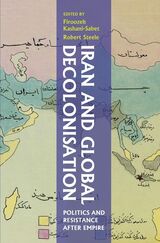 Iran and Global Decolonisation: Politics and Resistance After Empire
Edited by Robert Steele and Firoozeh Kashani-Sabet
Gingko, 2023 A presentation of scholarly work that investigates Iran's experiences with colonialism and decolonization from a variety of perspectives.
How did Iran’s unique position in the world affect and define its treatment of decolonization? During the final decades of Pahlavi rule in the late 1970s, the country sought to establish close relationships with newly independent counterparts in the Global South. Most scholarly work focused on this period is centered around the Cold War and Iran's relations with the United States, Russia, and Europe. Little attention has been paid to how the country interacted with other regions, such as Africa, Asia, and the Americas. Adding to an important and growing body of literature that discusses the profound and lasting impact of decolonization, Iran and Global Decolonisation contributes to the theoretical debates around the re-shaping of the world brought about by the end of an empire. It considers not only the impact of global decolonization on movements and ideas within Iran but also how Iran’s own experiences of imperialism shaped how these ideas were received and developed.
Iran and the United States: A Cold War Case Study
Richard W. Cottam
University of Pittsburgh Press, 1989
Richard Cottam served in the U.S. embassy in Tehran from 1956 to 1958 and was consulted by the Department of State during the 1979 hostage crisis. This book draws upon his expert personal knowledge of Iranian politics to describe the spiraling decline of U.S.-Iranian relations since the cold war and the political consequences of those years U.S. policy, he argues, is flawed by ignorance, inertia, the tenacity of a cold war mentality, a quixotic tilt toward Iraq, and the blatant inconsistency of the Reagan administration's arms-for-hostages scheme that produced the Iran-contra scandal.
Iran: From Religious Dispute to Revolution
Michael M. J. Fischer
University of Wisconsin Press, 2003 Unlike much of the instant analysis that appeared at the time of the Iranian revolution, Iran: From Religious Dispute to Revolution is based upon extensive fieldwork carried out in Iran. Michael M. J. Fischer draws upon his rich experience with the mullahs and their students in the holy city of Qum, composing a picture of Iranian society from the inside—the lives of ordinary people, the way that each class interprets Islam, and the role of religion and religious education in the culture. Fischer’s book, with its new introduction updating arguments for the post-Revolutionary period, brings a dynamic view of a society undergoing metamorphosis, which remains fundamental to understanding Iranian society in the early twenty-first century.
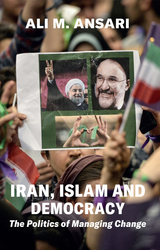 Iran, Islam and Democracy: The Politics of Managing Change
Ali M. Ansari
Gingko, 2019 The surprise election of Hasan Rouhani in 2013 has refocused attention on the dynamics between Islam and democracy in Iran after the hiatus of the Ahmadinejad presidency. With comparisons being drawn between Rouhani and his predecessor, the late Reformist President Mohammad Khatami, there has never been a better time for a close look at the rise and fall of the Reform movement in Iran, situating it within the context of the “politics of managing change.” This revised and updated edition incorporates recent work on the presidential election crisis of 2009, along with the election of Rouhani in 2013, and an additional essay on the idea of reformism in Iran in historical context. The study remains then most comprehensive account of the politics of reform and, in situating the Rouhani presidency within that context, it shines a clear light on the pressures and pitfalls Iran faces in politics and international relations.
 Iran on the Brink: Rising Workers and Threats of War
Andreas Malm and Shora Esmailian
Pluto Press, 2007 While the world keeps its eyes riveted on Iran's nuclear programme, the Islamic Republic has gone through a crisis of its own. This book shows how soaring unemployment and poverty has given way to social protest. A new labour movement has come to the fore. Although strikes are banned, workers are beginning to organise and underground networks are challenging the rule of the mullahs from within.
The authors offer a unique portrait of the social upheaval, why it is happening and where it may take the country. Following the fall of reformism, the rise of Ahmadinejad and the recent outbursts of ethnic violence, this book provides rare insights into the inner contradictions of the Islamic Republic.
The second part of the book deals with the international issues facing Iran - in particular the nuclear question, Iran's oil reserves and the serious threat of invasion. It is a sobering account of the realities of life in Iran, and the threat that war poses to the democratic aspirations of the Iranian people.
Iranian Cinema and Globalization: National, Transnational, and Islamic Dimensions
Shahab Esfandiary
Intellect Books, 2012 Despite critical acclaim and a recent surge of popularity with Western audiences, Iranian cinema has been the subject of lamentably few academic studies—and those have by and large been limited to the films and filmmakers most visible on the international film circuit. Iranian Cinema and Globalization seeks to broaden readers’ exposure to other dimensions of Iranian cinema, including the works of the many prolific filmmakers whose films have received little outside attention despite being widely popular within Iran. Combining theories of globalization and national cinema with in-depth, interdisciplinary analyses of individual films, this volume expands the current literature on Iranian cinema with insights into the social, and religious political contexts involved.
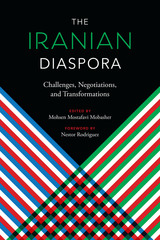 The Iranian Diaspora: Challenges, Negotiations, and Transformations
Edited by Mohsen Mostafavi Mobasher
University of Texas Press, 2018 The Iranian revolution of 1978–1979 uprooted and globally dispersed an enormous number of Iranians from all walks of life. Bitter political relations between Iran and the West have since caused those immigrants to be stigmatized, marginalized, and politicized, which, in turn, has discredited and distorted Iranian migrants’ social identity; subjected them to various subtle and overt forms of prejudice, discrimination, and social injustice; and pushed them to the edges of their host societies. The Iranian Diaspora presents the first global overview of Iranian migrants’ experiences since the revolution, highlighting the similarities and differences in their experiences of adjustment and integration in North America, Europe, Australia, and the Middle East. Written by leading scholars of the Iranian diaspora, the original essays in this volume seek to understand and describe how Iranians in diaspora (re)define and maintain their ethno-national identity and (re)construct and preserve Iranian culture. They also explore the integration challenges the Iranian immigrants experience in a very negative context of reception. Combining theory and case studies, as well as a variety of methodological strategies and disciplinary perspectives, the essays offer needed insights into some of the most urgent and consequential issues and problem areas of immigration studies, including national, ethnic, and racial identity construction; dual citizenship and dual nationality maintenance; familial and religious transformation; politics of citizenship; integration; ethnic and cultural maintenance in diaspora; and the link between politics and the integration of immigrants, particularly Muslim immigrants.
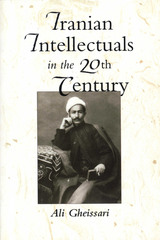 Iranian Intellectuals in the Twentieth Century
By Ali Gheissari
University of Texas Press, 1997 Since the middle of the nineteenth century, Iranian intellectuals have been preoccupied by issues of political and social reform, Iran's relation with the modern West, and autocracy, or arbitrary rule. Drawing from a close reading of a broad array of primary sources, this book offers a thematic account of the Iranian intelligentsia from the Constitutional movement of 1905 to the post-1979 revolution. Ali Gheissari shows how in Iran, as in many other countries, intellectuals have been the prime mediators between the forces of tradition and modernity and have contributed significantly to the formation of the modern Iranian self image. His analysis of intellectuals' response to a number of fundamental questions, such as nationalism, identity, and the relation between Islam and modern politics, sheds new light on the factors that led to the Iranian Revolution—the twentieth century's first major departure from Western political ideals—and helps explain the complexities surrounding the reception of Western ideologies in the Middle East.
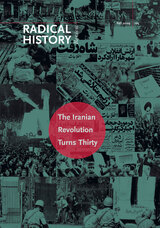 The Iranian Revolution Turns Thirty, Volume 2009
Behrooz Ghamari-Tabrizi, Mansour Bonakdarian, Nasrin Rahimieh, Ahmad Sadri, and Ervand Abrahamian, eds.
Duke University Press This special issue of Radical History Review marks the thirtieth anniversary of the Iranian revolution, an event that reverberated across the globe, causing rifts and realignments in international relations, as well as radical changes in Iranian political, social, and cultural institutions. The Iranian revolution of 1979 was a historical inevitability neither in its inception nor in its outcome; however, its continued domestic and global significance—often misunderstood and misinterpreted—remains indisputable. The issue explores the complex and evolving nature of the postrevolutionary dynamics in Iran and calls for renewed reflection on the roots of the revolution, the processes leading to its proponents’ victory, and its impact on the Muslim world and the global balance of power. The articles in this interdisciplinary issue take up the legacy of the revolution within and outside the borders of Iran and offer critical evaluation and new insights into the transformations that Iran experienced as a result of the revolution. One essay discusses the role of the crowd in the revolution, while another traces the genealogy of the discourse of anti-Zionism in Iranian circles. Other articles explore the treatment of the revolution in the Egyptian press and illustrate how the trauma of the revolution is portrayed in diasporic Iranian women’s biographies. The issue also features a “Reflections” section, which includes eight short essays that provide snapshots of postrevolutionary politics, economics, literature, cinema, and visual arts, demonstrating both radical changes and continuities in Iranian society.
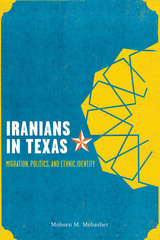 Iranians in Texas: Migration, Politics, and Ethnic Identity
By Mohsen M. Mobasher
University of Texas Press, 2012 Thousands of Iranians fled their homeland when the 1978–1979 revolution ended the fifty-year reign of the Pahlavi Dynasty. Some fled to Europe and Canada, while others settled in the United States, where anti-Iranian sentiment flared as the hostage crisis unfolded. For those who chose America, Texas became the fourth-largest settlement area, ultimately proving to be a place of paradox for any Middle Easterner in exile. Iranians in Texas culls data, interviews, and participant observations in Iranian communities in Houston, Dallas, and Austin to reveal the difficult, private world of cultural pride, religious experience, marginality, culture clashes, and other aspects of the lives of these immigrants.
Examining the political nature of immigration and how the originating and receiving countries shape the prospects of integration, Mohsen Mobasher incorporates his own experience as a Texas scholar born in Iran. Tracing current anti-Muslim sentiment to the Iranian hostage crisis, two decades before 9/11, he observes a radically negative shift in American public opinion that forced thousands of Iranians in the United States to suddenly be subjected to stigmatization and viewed as enemies. The book also sheds light on the transformation of the Iranian family in exile and some of the major challenges that second-generation Iranians face in their interactions with their parents.
Bringing to life a unique population in the context of global politics, Iranians in Texas overturns stereotypes while echoing diverse voices.
 Iranians in Texas: Migration, Politics, and Ethnic Identity
Mohsen Mostafavi MobasherForeword by Nestor Rodriguez
University of Texas Press, 2025 An exploration of the link between politics of migration, prospects of integration, and ethnic identity among Iranian immigrants and their descendants in the United States, spanning from the 1970s to the present day. Thousands of Iranians fled their homeland when the 1978–1979 revolution ended the fifty-year reign of the Pahlavi dynasty. Some fled to Europe and Canada, while others settled in the United States, where anti-Iranian sentiment flared as the hostage crisis unfolded. For those who chose America, Texas became the fourth-largest settlement area. Iranians in Texas culls data, interviews, and participant observations in Iranian communities in Houston, Dallas, and Austin to reveal the difficult, private world of cultural pride, religious experience, marginality, culture clashes, and other aspects of the lives of these immigrants. Examining the political nature of immigration between Iran and the United States and social, cultural, and economic life for Iranian immigrants and their American-born children, Mohsen Mostafavi Mobasher incorporates his own experience as a Texas scholar born in Iran. In this revised edition, two new chapters and a new introduction and conclusion provide updates on what has happened in the Obama, Trump, and Biden administrations, including the Iran nuclear deal and resulting controversy, the Muslim ban, and the global protests over the death of twenty-two-year-old Mahsa Amini for not wearing a hijab. Bringing to life a unique immigrant population in the context of global politics, Iranians in Texas overturns stereotypes and echoes diverse voices.
 The Iran-Iraq War
Pierre Razoux
Harvard University Press, 2015 From 1980 to 1988, Iran and Iraq fought the longest conventional war of the twentieth century. The tragedies included the slaughter of child soldiers, the use of chemical weapons, the striking of civilian shipping in the Gulf, and the destruction of cities. The Iran-Iraq War offers an unflinching look at a conflict seared into the region’s collective memory but little understood in the West. Pierre Razoux shows why this war remains central to understanding Middle Eastern geopolitics, from the deep-rooted distrust between Sunni and Shia Muslims, to Iran’s obsession with nuclear power, to the continuing struggles in Iraq. He provides invaluable keys to decipher Iran’s behavior and internal struggle today.
Razoux’s account is based on unpublished military archives, oral histories, and interviews, as well as audio recordings seized by the U.S. Army detailing Saddam Hussein’s debates with his generals. Tracing the war’s shifting strategies and political dynamics—military operations, the jockeying of opposition forces within each regime, the impact on oil production so essential to both countries—Razoux also looks at the international picture. From the United States and Soviet Union to Israel, Europe, China, and the Arab powers, many nations meddled in this conflict, supporting one side or the other and sometimes switching allegiances.
The Iran-Iraq War answers questions that have puzzled historians. Why did Saddam embark on this expensive, ultimately fruitless conflict? Why did the war last eight years when it could have ended in months? Who, if anyone, was the true winner when so much was lost?
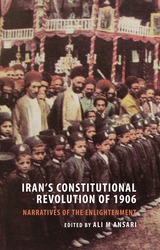 Iran's Constitutional Revolution of 1906 and Narratives of the Enlightenment
Edited by Ali Ansari
Gingko, 2016 The Constitutional Revolution of 1906 opened the way for enormous change in Persia, heralding the modern era and creating a model for later political and cultural movements in the region. Broad in its scope, this multidisciplinary volume brings together essays from leading scholars in Iranian Studies to explore the significance of this revolution, its origins, and the people who made it happen.
As the authors show, this period was one of unprecedented debate within Iran’s burgeoning press. Many different groups fought to shape the course of the Revolution, which opened up seemingly boundless possibilities for the country’s future and affected nearly every segment of its society. Exploring themes such as the role of women, the use of photography, and the uniqueness of the Revolution as an Iranian experience, the authors tell a story of immense transition, as the old order of the Shah subsided and was replaced by new institutions, new forms of expression, and a new social and political order.
Iran’s Influence in Afghanistan: Implications for the U.S. Drawdown
Alireza Nader
RAND Corporation, 2014 This study explores Iranian influence in Afghanistan and the implications for the United States after most U.S. forces depart Afghanistan in 2016. Iran has substantial economic, political, cultural, and religious leverage in Afghanistan. Although Iran will attempt to shape a post-2014 Afghanistan, Iran and the United States share core interests: to prevent the country from again becoming dominated by the Taliban and a safe haven for al Qaeda.
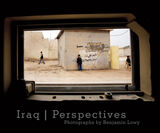 Iraq | Perspectives
Benjamin Lowy
Duke University Press, 2011 Selected by William Eggleston as Winner The Center for Documentary Studies / Honickman First Book Prize in Photography Benjamin Lowy’s powerful and arresting color photographs, taken over a six-year period through Humvee windows and military-issue night vision goggles, capture the desolation of a war-ravaged Iraq as well as the tension and anxiety of both U.S. soldiers and Iraqi civilians. To photograph on the streets unprotected was impossible for Lowy, so he made images that illuminate this difficulty by shooting photographs through the windows and goggles meant to help him, and soldiers, to see. In doing so he provides us with a new way of looking at the war—an entirely different framework for regarding and thinking about the everyday activities of Iraqis in a devastated landscape and the movements of soldiers on patrol, as well as the alarm and apprehension of nighttime raids. “Iraq was a land of blast walls and barbed wire fences. I made my first image of a concrete blast wall through the window of my armored car. These pictures show a fragment of Iraqi daily life taken by a transient passenger in a Humvee; yet they are a window to a world where work, play, tension, grief, survival, and everything in between are as familiar as the events of our own lives. . . . [In] the ‘Nightvision’ images . . . as soldiers weave through the houses and bedrooms of civilians during nighttime military raids, they encounter the faces of their suspects as well as bystanders, many of whom are parents protecting their children. . . . I hope that these images provide the viewer with momentary illumination of the fear and desperation that is war.”—Benjamin Lowy
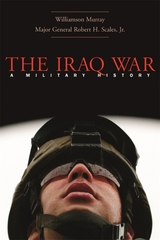 The Iraq War: A Military History
Williamson Murray and Major General Robert H. Scales, Jr.
Harvard University Press, 2005 In this unprecedented account of the intensive air and ground operations in Iraq, two of America’s most distinguished military historians bring clarity and depth to the first major war of the new millennium. Reaching beyond the blaring headlines, embedded videophone reports, and daily Centcom briefings, Williamson Murray and Robert Scales analyze events in light of past military experiences, present battleground realities, and future expectations.
The Iraq War puts the recent conflict into context. Drawing on their extensive military expertise, the authors assess the opposing aims of the Coalition forces and the Iraqi regime and explain the day-to-day tactical and logistical decisions of infantry and air command, as British and American troops moved into Basra and Baghdad. They simultaneously step back to examine long-running debates within the U.S. Defense Department about the proper uses of military power and probe the strategic implications of those debates for America’s buildup to this war. Surveying the immense changes that have occurred in America’s armed forces between the Gulf conflicts of 1991 and 2003—changes in doctrine as well as weapons—this volume reveals critical meanings and lessons about the new “American way of war” as it has unfolded in Iraq.
 The Iraqi Invasion of Kuwait: Religion, Identity and Otherness in the Analysis of War and Conflict
Hamdi A. Hassan
Pluto Press, 2005 Focusing on the 1990 Iraqi invasion of Kuwait, Hamdi Hassan offers a balanced examination of the motivation of the Iraqi polity and the conditions which accelerated and facilitated the decision to invade. Critical of the traditional approach of most Middle East studies, The Iraqi Invasion of Kuwait offers a counterpoint to Western interpretations of this key event in the contemporary history of the Middle East.
Hassan examines how Saddam Hussein assessed and responded to American and Israeli intentions after the invasion, the reaction of other Arab states, and the unprecedented grassroots support for the Iraqi leadership. In this context, the author examines the social structure of Iraqi society – families, clans and regional alliances – and the importance of Ba’athism. Hassan also examines the political structure of the country, relating the identity of Arabism – the religion and language which is associated closely with the Pan Arabist ideals – to Iraqi foreign policy.
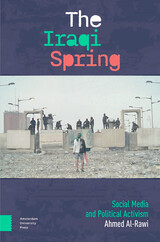 The Iraqi Spring: Social Media and Political Activism
Ahmed Al-Rawi
Amsterdam University Press, 2024 Since 2003 and following the U.S.-led invasion, Iraq witnessed tremendous changes to its political, social, and economic structures, and this book critically maps recent popular protests that engulfed the country and led to the death of thousands of civilian protesters. It delves into the nuances of the Iraqi socio-political context and offers a brief historical overview of political activism by investigating the internal structure of activism in the country as well as the regional and international dimensions. The study involves critical ethnographic research including interviews with Iraqi activists, social media analysis, Arabic and English news analysis, as well as in-depth assessment and contextualization of the Iraqi protests. The author argues that there is a need to call the protests an “Iraqi Spring” because of the country's unique historical, demographic, and political circumstances.
 Ireland and Irish Cultural Studies, Volume 95
John Paul Waters
Duke University Press Ireland and Irish Cultural Studies invites readers to a lively discussion among Irish, British, and American scholars who are deconstructing and reconstructing Irish culture of and for the 1990s. In voices as fresh as The Cranberries, they are not only joining the Irish conversation but holding it up to scrutiny—cutting through sentimental evocations of donkey carts and Celtic twilights, exposing the critically hailed “radical inversions” of The Crying Game as more conventionally romantic than they might appear, and disclosing Guinness’s efforts to attract gay and lesbian beer drinkers in 1995, the centenary of Oscar Wilde’s trial and imprisonment. The recent advent of postcolonial theory in the Irish academy, which sparked this special issue of SAQ, has had a profound effect on the Irish conversation and the turn it is taking today. As the island writes back, a rising faction in Irish studies is resisting what some see as yet another colonization, insisting that theory accommodate and respond to Ireland’s concerns and questions. Contributors. Guinn Batten, Joe Cleary, Luke Dodd, Luke Gibbons, Dillon Johnston, David Kellogg, Declan Keberd, Aine O’Brien, Lance Pettitt, Lawrence J. Taylor, John Paul Waters, Clair Wills
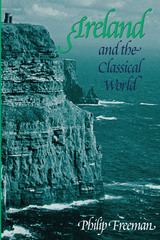 Ireland and the Classical World
By Philip Freeman
University of Texas Press, 2000 On the boundary of what the ancient Greeks and Romans considered the habitable world, Ireland was a land of myth and mystery in classical times. Classical authors frequently portrayed its people as savages—even as cannibals and devotees of incest—and evinced occasional uncertainty as to the island's shape, size, and actual location. Unlike neighboring Britain, Ireland never knew Roman occupation, yet literary and archaeological evidence prove that Iuverna was more than simply terra incognita in classical antiquity. In this book, Philip Freeman explores the relations between ancient Ireland and the classical world through a comprehensive survey of all Greek and Latin literary sources that mention Ireland. He analyzes passages (given in both the original language and English) from over thirty authors, including Julius Caesar, Strabo, Tacitus, Ptolemy, and St. Jerome. To amplify the literary sources, he also briefly reviews the archaeological and linguistic evidence for contact between Ireland and the Mediterranean world. Freeman's analysis of all these sources reveals that Ireland was known to the Greeks and Romans for hundreds of years and that Mediterranean goods and even travelers found their way to Ireland, while the Irish at least occasionally visited, traded, and raided in Roman lands. Everyone interested in ancient Irish history or Classics, whether scholar or enthusiast, will learn much from this pioneering book.
Ireland at the Polls 1981, 1982, and 1987: A Study of Four General Elections
Howard R. Penniman and Brian Farrell, eds.
Duke University Press, 1987 Ireland at the Polls, 1981, 1982, and 1987: A Study of four General Elections is another in the series of national election studies prepared by the American Enterprise Institute for Public Policy Research (AEI). Books in the series include volumes on some thirty national democratic elections around the world. Distinguished foreign and American scholars have contributed to the studies.
Ireland in the Empire, 1688-1770: A History of Ireland from the Williamite Wars to the Eve of the American Revolution
Frances Godwin James
Harvard University Press, 1973 Based on contemporary materials and a synthesis of the works of recent scholars, Frances Godwin James’s monograph clarifies the role of Ireland in the British Empire and compares Ireland with the American colonies. A large part of the book is devoted to political history and treats such subjects as the settlement of the Treaty of Limerick at the end of the war of 1689–1691, the shaping or Irish governmental structure during Anne’s reign, the growth of an Irish opposition group under George I, and imperial events during the reign of George II.
Ireland in the World Order: A History of Uneven Development
Maurice Coakley
Pluto Press, 2012 Ireland in the World Order examines Ireland’s development from the medieval to the modern era, comparing its unique trajectory with that of England, Scotland and Wales.
Maurice Coakley focuses on key elements that contributed to Ireland’s development, examining its bloody and violent incorporation into the British state, its refusal to embrace the Protestant Reformation and failure to industrialise in the 19th century. Coakley considers the crucial question of why Ireland’s national identity has come to rest on a mass movement for independence.
Cutting through many of the myths – imperialist and nationalist – which have obscured the real reasons for Ireland's course of development, Ireland in the World Order provides a new perspective for students and academics of Irish history.
 Ireland Now: Tales of Change from the Global Island
William Flanagan
University of Notre Dame Press, 2007
Ireland Now is an accessible guide to understanding how Ireland and the Irish people have changed during the past fifteen years. Largely as a result of the country's rapidly expanding economy, Ireland has been transformed from one of the poorest to one of the richest countries in the European Union. William Flanagan uses personal, first-hand stories from a wide range of Irish citizens, including the elderly, farmers, people in small towns and rural areas, and new immigrants, to illustrate how various segments of the population are coping with a shifting social landscape.
Flanagan skillfully weaves his stories of real people together to reflect themes of promise and loss attached to economic upheaval, the struggle to maintain traditional ways in the face of new social and moral orders, the effort to adapt to a country with an enhanced place in the world economy, and the challenge of remaining at home as the meaning of home becomes forever changed.
Based on years of Flanagan's personal experience and careful research in Ireland, this important book examines the nature of Irish character and the fusion of tradition and change. It will appeal to anyone with an interest in Ireland and Irish identity.
“William Flanagan has provided us with a terrific introduction to contemporary Ireland, its peoples, and its complex identities. At the heart of this highly original interdisciplinary study is the nuanced Irish voice speaking in multiple ways, and at various registers, of everyday life in Global Ireland.” —Eamonn Wall, Jefferson Smurfit Professor of Irish Studies, University of Missouri-St. Louis
“This book is valuable because it digs beneath the endlessly repeated litany of the rapid changes in modern Ireland, such as ‘globalization,’ ‘the Celtic Tiger,’ ‘Fourth highest per capita GDP in the world,’ ‘church in decline,’ ‘educated young people,’ and the list goes on. Ireland Now lays out the changing Ireland framework and the goal of finding how it plays out in the everyday life of the people in the book. Readers in sociology, cultural anthropology, and political science will find or recognize the pressures on people located in a kaleidoscopically changing environment.” —Richard B. Finnegan, Stonehill College
 Ireland: Social, Political, and Religious
Gustave de Beaumont
Harvard University Press, 2006 Paralleling his friend Alexis de Tocqueville's visit to America, Gustave de Beaumont traveled through Ireland in the mid-1830s to observe its people and society. In Ireland, he chronicles the history of the Irish and offers up a national portrait on the eve of the Great Famine. Published to acclaim in France, Ireland remained in print there until 1914. The English edition, translated by William Cooke Taylor and published in 1839, was not reprinted.
In a devastating critique of British policy in Ireland, Beaumont questioned why a government with such enlightened institutions tolerated such oppression. He was scathing in his depiction of the ruinous state of Ireland, noting the desperation of the Catholics, the misery of repeated famines, the unfair landlord system, and the faults of the aristocracy. It was not surprising the Irish were seen as loafers, drunks, and brutes when they had been reduced to living like beasts. Yet Beaumont held out hope that British liberal reforms could heal Ireland's wounds.
This rediscovered masterpiece, in a single volume for the first time, reproduces the nineteenth-century Taylor translation and includes an introduction on Beaumont and his world. This volume also presents Beaumont's impassioned preface to the 1863 French edition in which he portrays the appalling effects of the Great Famine.
A classic of nineteenth-century political and social commentary, Beaumont's singular portrait offers the compelling immediacy of an eyewitness to history.
 Ireland's Economic History: Crisis and Development in the North and South
Gerard McCann
Pluto Press, 2011 With clarity and depth, Gerard McCann explores the complex developments that have shaped Ireland’s economic development, north and south, and led to recurring crises and instability.
The Irish economy has been traditionally portrayed as a product of its political divisions and the colonial legacy, divided and analysed in terms of the hegemonic tensions that exist on the island. Influenced by these divisions, academics have tended to look at a two-region approach to economic development, without adequately acknowledging the interactive nature of the island economy as a source of the crises or as a solution to systemic divergence.
McCann's definitive and dynamic history of the Irish economy circumvents conventional analyses and investigates the economic development of the island economy as a whole, highlighting where aggressive differentiation has been divisive and destabilising. He concludes by considering an alternative integrated and cohesive process of economic development.
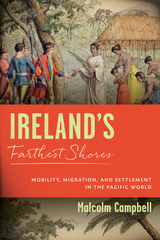 Ireland's Farthest Shores: Mobility, Migration, and Settlement in the Pacific World
Malcolm Campbell
University of Wisconsin Press, 2022 Irish people have had a long and complex engagement with the lands and waters encompassing the Pacific world. As the European presence in the Pacific intensified from the late eighteenth century, the Irish entered this oceanic space as beachcombers, missionaries, traders, and colonizers. During the nineteenth century, economic distress in Ireland and rapid population growth on the Pacific Ocean's eastern and western shores set in motion large-scale migration that exerted a deep political, social, and economic impact across the Pacific.
Malcolm Campbell examines the rich history of Irish experiences on land and at sea, offering new perspectives on migration and mobility in the Pacific world and of the Irish role in the establishment and maintenance of the British Empire. This volume investigates the extensive transnational connections that developed among Irish immigrants and their descendants across this vast and unique oceanic space, ties that illuminate how the Irish participated in the making of the Pacific world and how the Pacific world made them.
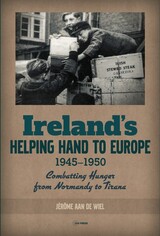 Ireland's Helping Hand to Europe: Combatting Hunger from Normandy to Tirana, 1945–1950
Jérôme Wiel
Central European University Press, 2021 Post-war Marshall Plan aid to Europe and indeed Ireland is well documented, but practically nothing is known about simultaneous Irish aid to Europe. This book provides a full record of the aid – mainly food but also clothes, blankets, medicines, etc. – that Ireland donated to continental Europe, including France, the Netherlands, Hungary, the Balkans, Italy, and zones of occupied Germany. Starting with Ireland’s neutral wartime record, often wrongly presented as pro-German when Ireland in fact unofficially favoured the western Allies, Jerome aan de Wiel explains why Éamon de Valera’s government sent humanitarian aid to the devastated continent. His book analyses the logistics of collection and distribution of supplies sent abroad as far as the Greek islands. Despite some alleged Cold-War hijacking of Irish relief – and this humanitarianism was not above the politics of that East-West confrontation – it became mostly a story of hope, generosity and European Christian solidarity. Rich archival records from Ireland and the European beneficiary countries, as well as contemporary local and national newspapers across Europe, allow the author to measure and describe not only the official but also the popular response to Irish relief schemes. This work is illustrated with contemporary photographs and some key graphs and tables that show the extent of the aid programme.
 Ireland's Magdalen Laundries and the Nation's Architecture of Containment
James M. Smith
University of Notre Dame Press, 2007
The Magdalen laundries were workhouses in which many Irish women and girls were effectively imprisoned because they were perceived to be a threat to the moral fiber of society. Mandated by the Irish state beginning in the eighteenth century, they were operated by various orders of the Catholic Church until the last laundry closed in 1996. A few years earlier, in 1993, an order of nuns in Dublin sold part of their Magdalen convent to a real estate developer. The remains of 155 inmates, buried in unmarked graves on the property, were exhumed, cremated, and buried elsewhere in a mass grave. This triggered a public scandal in Ireland and since then the Magdalen laundries have become an important issue in Irish culture, especially with the 2002 release of the film “The Magdalene Sisters.”
Focusing on the ten Catholic Magdalen laundries operating between 1922 and 1996, Ireland's Magdalen Laundries and the Nation's Architecture of Containment offers the first history of women entering these institutions in the twentieth century. Because the religious orders have not opened their archival records, Smith argues that Ireland's Magdalen institutions continue to exist in the public mind primarily at the level of story (cultural representation and survivor testimony) rather than history (archival history and documentation).
Addressed to academic and general readers alike, James M. Smith's book accomplishes three primary objectives. First, it connects what history we have of the Magdalen laundries to Ireland's “architecture of containment” that made undesirable segments of the female population such as illegitimate children, single mothers, and sexually promiscuous women literally invisible. Second, it critically evaluates cultural representations in drama and visual art of the laundries that have, over the past fifteen years, brought them significant attention in Irish culture. Finally, Smith challenges the nation—church, state, and society—to acknowledge its complicity in Ireland's Magdalen scandal and to offer redress for victims and survivors alike.
“This book offers at once a critical examination of society’s understanding of the Magdalen institutions and provides a means of refocusing attention on the ways in which memory, commemoration, and responsibility work in Irish society, especially in relation to these particular institutions. I have no doubt that this will be an important book. It will prove controversial, it will restart the debate on the Magdalen institutions in Ireland, and it should receive considerable publicity.” —Maria Luddy, University of Warwick
“Ireland's Magdalen Laundries is the story of young women locked away for a lifetime, without due process or appeal, for perceived sins of the flesh, a violation of a moral code established not by the government but by the most powerful force in the country, the Catholic Church. James M. Smith has provided the first comprehensive history of the magdalen laundries; unlocking the secrets, dispelling the myths, and providing the context for a most regrettable era that shocked and embarrassed not just the church, but the Irish people.” —Steve Kroft, correspondent, 60 Minutes
“Ireland's Magdalen Laundries is an important book, written with scrupulous attention to detail and impeccably researched. This is a dark and deeply emotional subject about which James M. Smith manages to be fair-minded and calm in his judgments. It is an essential book for anyone interested in the fear and cruelty surrounding women's sexuality in the Ireland of the recent past.” —Colm Tóibín
“This is a book about amnesia, acknowledgment and atonement. It weaves history, politics, and art together in one of the most compelling and best-written studies I’ve read in recent years. Smith is able to stand outside his subject, independent of affiliation, and he manages to resist the urge for cheap outrage. It is a serious, brilliant, art-driven examination of a story, or history, that needs to be told over and over and over again, lest it be forgotten or allowed to seep into the ambient noise.” —Colum McCann
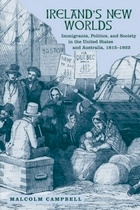 Ireland's New Worlds: Immigrants, Politics, and Society in the United States and Australia, 1815–1922
Malcolm Campbell
University of Wisconsin Press, 2007 In the century between the Napoleonic Wars and the Irish Civil War, more than seven million Irish men and women left their homeland to begin new lives abroad. While the majority settled in the United States, Irish emigrants dispersed across the globe, many of them finding their way to another “New World,” Australia.
Ireland’s New Worlds is the first book to compare Irish immigrants in the United States and Australia. In a profound challenge to the national histories that frame most accounts of the Irish diaspora, Malcolm Campbell highlights the ways that economic, social, and cultural conditions shaped distinct experiences for Irish immigrants in each country, and sometimes in different parts of the same country. From differences in the level of hostility that Irish immigrants faced to the contrasting economies of the United States and Australia, Campbell finds that there was much more to the experiences of Irish immigrants than their essential “Irishness.” America’s Irish, for example, were primarily drawn into the population of unskilled laborers congregating in cities, while Australia’s Irish, like their fellow colonialists, were more likely to engage in farming. Campbell shows how local conditions intersected with immigrants’ Irish backgrounds and traditions to create surprisingly varied experiences in Ireland’s new worlds. Outstanding Book, selected by the American Association of School Librarians, and Best Books for Special Interests, selected by the Public Library Association
“Well conceived and thoroughly researched . . . . This clearly written, thought-provoking work fulfills the considerable ambitions of comparative migration studies.”—Choice
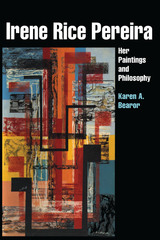 Irene Rice Pereira: Her Paintings and Philosophy
By Karen Bearor
University of Texas Press, 1993 Artist Irene Rice Pereira was a significant figure in the New York art world of the 1930s and 1940s, who shared an interest in Jungianism with the better-known Abstract Expressionists and with various women artists and writers seeking "archetypal" imagery. Yet her artistic philosophy and innovative imagery elude easy classification with her artistic contemporaries. In consequence, her work is rarely included in studies of the period and is almost unknown to the general public. This first intellectual history of the artist and her work seeks to change that. Karen A. Bearor thoroughly re-creates the artistic and philosophical milieu that nourished Pereira’s work. She examines the options available to Pereira as a woman artist in the first half of the twentieth century and explores how she used those options to contribute to the development of modernism in the United States. Bearor traces Pereira’s interest in the ideas of major thinkers of the period—among them, Spengler, Jung, Einstein, Cassirer, and Dewey—and shows how Pereira incorporated their ideas into her art. And she demonstrates how Pereira’s quest to understand something of the nature of ultimate reality led her from an early utopianism to a later interest in spiritualism and the occult. This lively intellectual history amplifies our knowledge of a time of creative ferment in American art and society. It will appeal to a wide range of readers interested in the modernist period.
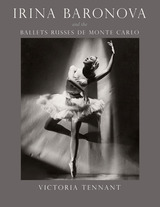 Irina Baronova and the Ballets Russes de Monte Carlo
Victoria Tennant
University of Chicago Press, 2014 In the 1930s and ’40s, the Ballets Russes de Monte Carlo toured the United States and the world, introducing many to ballet as an art form, while spreading the enduring image of the ballerina as an embodiment of feminine grace and sophistication. This sumptuous, illustrated history tells the story of the rise of modern ballet and its popularity through the life story of one of ballet’s most glamorous stars, Irina Baronova (1919–2008), prima ballerina for the Ballets Russes de Monte Carlo and later for Ballet Theatre in New York.
Drawing on letters, correspondence, oral histories, and interviews, Baronova’s daughter, the actress Victoria Tennant, warmly recounts Baronova’s dramatic life, from her earliest aspirations to her grueling time on tour to her later years in Australia as a pioneer of the art. She begins with the Baronov family’s flight from Russia during the Revolution, which led them to Romania and later Paris, where at the age of thirteen, Baronova became a star, chosen by the legendary George Balanchine to join the Ballets Russes, where she danced the lead in Swan Lake. Tennant provides an intimate account of Baronova’s life as a dancer and rare behind-the-scenes stories of life on the road with the stars of the company. Spectacular photographs, a mix of archival images and family snapshots, offer many rare views of rehearsals, costumes, set designs, and the dancers themselves both at their most dazzling and in their most everyday.
The story of Irina Baronova is also the story of the rise of ballet in America thanks to the Ballets Russes, who brought the magisterial beauty and star power of dance to big cities and small towns alike. Irina Baronova and the Ballet Russes de Monte Carlo offers a unique perspective on this history, sure to be treasured by dance patrons and aspiring stars.
 Irina Nakhova: Museum on the Edge
Jane A. Sharp
Rutgers University Press, 2019 Throughout her extensive career, Russian conceptual artist Irina Nakhova has frequently pushed the limits of what constitutes art and how we experience the art museum. One of her famous early pieces, for instance, transformed a room in her very own Moscow apartment into an art installation.
Released in conjunction with Nakhova’s first museum retrospective exhibition in the United States, this book includes many full-color illustrations of her work, spanning the entirety of her forty-year career and demonstrating her facility with a variety of media. It also includes essays by a variety of world-renowned curators and art historians, each cataloging Nakhova’s artistic innovations and exploring how she deals with themes of everyday life, memory, viewer engagement, and moral responsibility. It concludes with a new interview with Nakhova herself, giving new insight into her creative process and artistic goals. Irina Nakhova: Museum on the Edge provides a vivid look at the work of a visionary artist. Published in partnership with the Zimmerli Museum.
Iris and Periocular Biometric Recognition
Christian Rathgeb
The Institution of Engineering and Technology, 2017 Iris recognition technologies for identity management are already deployed globally in several large-scale nationwide biometric projects and are currently entering the mobile market. More recently, periocular recognition has been employed to augment the biometric performance of the iris in unconstrained environments where only the ocular region is present in the image.
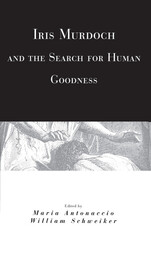 Iris Murdoch and the Search for Human Goodness
Edited by Maria Antonaccio and William Schweiker
University of Chicago Press, 1996 A noted philosopher and one of the most gifted and prolific novelists of the twentieth century, Iris Murdoch has anticipated and shaped many of the issues central to current ethics. These include the relation between human identity and ideas of the good, the effect of the modern critique of religion on moral thought, the relation between ethics and literature, and the contemporary debate about liberalism. In the most comprehensive engagement with Murdoch's work to date, this volume gathers contributions from philosophers, theologians, and a literary critic to explore the significance of her ideas for contemporary thought.
Inspired by Murdoch's tenacious wrestling with basic questions of human existence, these essays not only clarify her thoughts on human goodness, but also move beyond the academy to reflect on how we can and ought to undertake the human adventure in our daily lives.
Contributors are Charles Taylor, Martha Nussbaum, David Tracy, Cora Diamond, Maria Antonaccio, Elizabeth Dipple, Franklin I. Gamwell, Stanley Hauerwas, and William Schweiker. This volume also includes "Metaphysics and Ethics," a classic essay by Iris Murdoch.
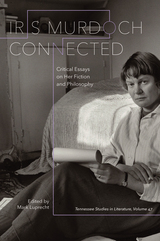 Iris Murdoch Connected: Critical Essays on Her Fiction and Philosophy
Mark Luprecht
University of Tennessee Press, 2014 This volume compiles twelve essays that reflect the surging interest in the Irish-born author Iris Murdoch as both a writer and philosopher. Beyond her impressive body of philosophical works, Murdoch produced twenty-six novels, several plays, and numerous poems, short stories, and essays during her multifaceted career. The prolific novelist-philosopher has drawn attention from scholars in multiple disciplines, which reflects her range of interests as well as the accessibility of her work from varied perspectives.
The first part of the collection focuses on Murdoch’s literary works and approach to art. Frances White’s opening essay examines the influence of Virginia Woolf on Murdoch, while Elaine Morley deals with attention and “unselfing” in the writer’s works. Much can be learned from Murdoch’s letters, as Miles Leeson and Anne Rowe demonstrate in their respective contributions. David James explores Murdoch’s influence on fellow Irish writer John Banville. Finally, Pamela Osborn and Rivka Isaacson offer vastly different perspectives on Murdoch’s fourth novel, The Bell, in the two essays that round out the literature-centric half of the collection.
Part two highlights concepts in and approaches to Murdoch’s philosophical thought. Tony Milligan writes of the meanings of puritanism and truthfulness in Murdoch’s philosophical writings and essays and in her novel A Fairly Honourable Defeat. Julián Jiménez Heffernan’s contribution centers on Murdoch’s confrontation with the notion of contingency. Using the philosophical lens of metaxu, Kate Larson suggests a new approach to Murdoch’s thought by looking at it in relation to that of Simone Weil. Paul Martens locates the similarities of structure in Murdoch’s The Black Prince and Søren Kierkegaard’s Fear and Trembling. Lastly, Matthew Martinuk delves into the affinity of thought between Charles Taylor and Murdoch.
By examining both Murdoch’s influences and those she has influenced, Iris Murdoch Connected constructs complex new understandings of this formidable writer’s vast contributions to literature and philosophy.
 Irish Classics
Declan Kiberd
Harvard University Press, 2001 A celebration of the tenacious life of the enduring Irish classics, this book by one of Irish writing's most eloquent readers offers a brilliant and accessible survey of the greatest works since 1600 in Gaelic and English, which together have shaped one of the world's most original literary cultures.
In the course of his discussion of the great seventeenth- and eighteenth-century Gaelic poems of dispossession, and of later work in that language that refuses to die, Declan Kiberd provides vivid and idiomatic translations that bring the Irish texts alive for the English-speaking reader.
Extending from the Irish poets who confronted modernity as a cataclysm, and who responded by using traditional forms in novel and radical ways, to the great modern practitioners of such paradoxically conservative and revolutionary writing, Kiberd's work embraces three sorts of Irish classics: those of awesome beauty and internal rigor, such as works by the Gaelic bards, Yeats, Synge, Beckett, and Joyce; those that generate a myth so powerful as to obscure the individual writer and unleash an almost superhuman force, such as the Cuchulain story, the lament for Art O'Laoghaire, and even Dracula; and those whose power exerts a palpable influence on the course of human action, such as Swift's Drapier's Letters, the speeches of Edmund Burke, or the autobiography of Wolfe Tone. The book closes with a moving and daring coda on the Anglo-Irish agreement, claiming that the seeds of such a settlement were sown in the works of Irish literature.
A delight to read throughout, Irish Classics is a fitting tribute to the works it reads so well and inspires us to read, and read again.
Irish Drama in Poland: Staging and Reception, 1900-2000
Barry Keane
Intellect Books, 2016 Irish Drama in Poland is the first book to broadly assess Irish drama’s impact on both Poland’s theatrical world and its cultural and literary heritage in the twentieth century. With a wide-ranging analysis—from Yeats, Synge, O’Casey, and Behan, to Wilde, Shaw, and Beckett—this engaging study explores the translation, production, and reception of Irish plays in Poland. Barry Keane presents readers with the historical and literary context for each production, allowing readers to understand the many ways Irish theater has informed Poland’s theatrical and literary heritage. Including a foreword by translation scholar Michael Cronin, Irish Drama in Poland drives home the importance of exploring intercultural contexts, allowing readers a more informed understanding of European culture and identity.
Irish Emigrant Ballads and Songs
Edited by Robert L. Wright
University of Wisconsin Press, 1975 An important resource of Irish emigrant songs, now supplemented with a new introduction and selected discography by Mick Moloney.
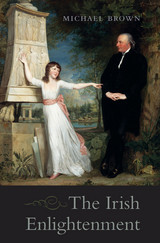 The Irish Enlightenment
Michael Brown
Harvard University Press, 2016 During the eighteenth-century Enlightenment, Scotland and England produced such well-known figures as David Hume, Adam Smith, and John Locke. Ireland’s contribution to this revolution in Western thought has received much less attention. Offering a corrective to the view that Ireland was intellectually stagnant during this period, The Irish Enlightenment considers a range of artists, writers, and philosophers who were full participants in the pan-European experiment that forged the modern world.
Michael Brown explores the ideas and innovations percolating in political pamphlets, economic and religious tracts, and literary works. John Toland, Francis Hutcheson, Jonathan Swift, George Berkeley, Edmund Burke, Maria Edgeworth, and other luminaries, he shows, participated in a lively debate about the capacity of humans to create a just society. In a nation recovering from confessional warfare, religious questions loomed large. How should the state be organized to allow contending Christian communities to worship freely? Was the public confession of faith compatible with civil society? In a society shaped by opposing religious beliefs, who is enlightened and who is intolerant?
The Irish Enlightenment opened up the possibility of a tolerant society, but it was short-lived. Divisions concerning methodological commitments to empiricism and rationalism resulted in an increasingly antagonistic conflict over questions of religious inclusion. This fracturing of the Irish Enlightenment eventually destroyed the possibility of civilized, rational discussion of confessional differences. By the end of the eighteenth century, Ireland again entered a dark period of civil unrest whose effects were still evident in the late twentieth century.
 Irish Families and Globalization: Conversations about Belonging and Identity across Space and Time: Groves Monographs on Marriage and Family (Volume 3)
Christine A. Readdick
Michigan Publishing Irish Families and Globalization: Conversations about Belonging and Identity across Space and Time offers family scholars and practitioners an opportunity to focus on the social, economic, and environmental factors facing families in Ireland and the global Irish diaspora. Chapters in this volume follow the path of the 2008 Groves Conference in Ireland—from Galway to Belfast to Dublin. Groves Monographs on Marriage and Family is an edited book series based on the annual meetings of the Groves Conference on Marriage and Family, an interdisciplinary, interprofessional organization of limited invited membership founded in 1934. Groves Monographs publishes work on the leading edges of theory development and empirical research in the field of family studies. Individual volumes are edited by the chairs of the annual Groves Conferences and include peer-reviewed chapters by the conference presenters and invited authors. Topics are timely and provocative with diverse themes.
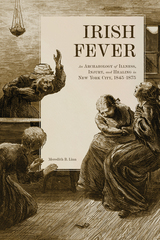 Irish Fever: An Archaeology of Illness, Injury, and Healing in New York City, 1845–1875
Meredith Linn
University of Tennessee Press, 2024 NAMED AN OUTSTANDING ACADEMIC TITLE OF 2024 BY CHOICE REVIEWS
During the Potato Famine of the nineteenth century, about one million Irish people perished from starvation and disease, while more than two million fled the country in fear and desperation, with some 850,000 landing in New York City. After a difficult journey, many found themselves impoverished, taking dangerous jobs, and battling miserable living conditions in an unfamiliar urban landscape. These circumstances resulted in high rates of illness, injury, and death compared with other immigrant groups and native-born Americans.
In this profound study, Meredith B. Linn explores three kinds of afflictions—typhus fever, tuberculosis, and work-related injuries—that disproportionately affected Irish immigrants, tracing how existing medical ideas and technologies intersected with American prejudices to further conspire against this once culturally distinct group. Linn makes a compelling case for how Americans’ interpretations of the visible bodily changes wrought by typhus fever and injuries contributed to essentializing and dehumanizing biases against these new immigrants, while tuberculosis—with its symptoms of fatigue, pallor, and emaciation—enabled Americans to see individuals beyond stereotypes and to recognize the equal humanity of the Irish.
Drawing upon extensive archaeological records, folkloric sources, and historical documents, Linn presents what she terms a “visceral historical archaeology”—a perspective rooted in historical archaeology and medical anthropology—to illuminate the experiences of these immigrants. She investigates their health-related ideas and practices and reveals their efforts to heal themselves using popular remedies from Ireland and several new American commodities. Laden with heartrending stories from real working-class Irish and their American doctors, this richly illustrated book provides new perspectives about urban experience in the context of the Irish diaspora and invites contemplation about how illness, injury, and healing have affected the lives and reception of newcomers to the US.
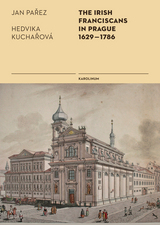 The Irish Franciscans in Prague 1629-1786
Jan Parez and Hedvika Kucharová
Karolinum Press, 2015 At the end of the sixteenth century, Queen Elizabeth I forced the Irish Franciscans into exile. Of the four continental provinces to which the Irish Franciscans fled, the Prague Franciscan College of the Immaculate Conception of the Virgin Mary was the largest in its time. This monograph documents this intense point of contact between two small European lands, Ireland and Bohemia. The Irish exiles changed the course of Bohemian history in significant ways, both positive—the Irish students and teachers of medicine who contributed to Bohemia’s culture and sciences—and negative—the Irish officers who participated in the murder of Albrecht of Valdštejn and their successors who served in the Imperial forces.
Dealing with a hitherto largely neglected theme, Parez and Kucharová attempt to place the Franciscan College within Bohemian history and to document the activities of its members. This wealth of historical material from the Czech archives, presented in English for the first time, will be of great aid for international researchers, particularly those interested in Bohemia or the Irish diaspora.
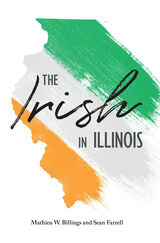 The Irish in Illinois
Mathieu W. Billings and Sean Farrell
Southern Illinois University Press, 2021 The first statewide history of the Irish in the Prairie State
Today over a million people in Illinois claim Irish ancestry and celebrate their love for Ireland. In this concise narrative history, authors Mathieu W. Billings and Sean Farrell bring together both familiar and unheralded stories of the Irish in Illinois, highlighting the critical roles these immigrants and their descendants played in the settlement and the making of the Prairie State. Short biographies and twenty-eight photographs vividly illustrate the significance and diversity of Irish contributions to Illinois.
Billings and Farrell remind us of the countless ways Irish men and women have shaped the history and culture of the state. They fought in the French and Indian War, the American Revolution, the Civil War, and two world wars; built the state’s infrastructure and worked in its factories; taught Illinois children and served the poor. Irish political leaders helped to draw up the state’s first constitution, served in city, county, and state offices, and created a machine that dominated twentieth-century politics in Chicago and the state.
This lively history adds to our understanding of the history of the Irish in the state over the past two hundred fifty years. Illinoisans and Midwesterners celebrating their connections to Ireland will treasure this rich and important account of the state’s history.
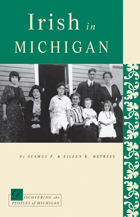 Irish in Michigan
Seamus P. Metress
Michigan State University Press, 2006 Irish immigration to the United States can be divided into five general periods, from 1640 to the present: the colonial, prestarvation, great starvation, post-starvation, and post- independence periods. Immigration to the Great Lakes region and, more specifically, to Michigan was differentially influenced during each of these times. The oppressive historical roots of the Irish in both Ireland and nineteenth century America are important to understand in gaining an appreciation for their concern with socioeconomic status.
The Irish first entered the Great Lakes by way of the Ohio River and Appalachian passes, spreading north along the expanding frontier. After the War of 1812, the Irish were heavily represented in frontier military garrisons. Many Irish moved into the Detroit metropolitan area as well as to farming areas throughout Michigan. In the 1840s, a number of Irish began fishing in the waters off Beaver Island, Mackinac Island, Bay City, Saginaw, and Alpena. From 1853 to 1854, Irish emigrants from the Great Starvation dug the Ste. Marie Canal while others dug canals in Grand Rapids and Saginaw.
Irish nationalism in both Michigan and the United States has been closely linked with the labor movement in which Irish Americans were among the earliest organizers and leaders. Irish American nationalism forced the Irish regardless of their local Irish origins to assume a larger Irish identity. Irish Americans have a long history of involvement in the struggle for Irish Freedom dating from the 1840s.
As Patrick Ford, editor of Irish World has said, America led the Irish from the "littleness of countyism into a broad feeling of nationalism."
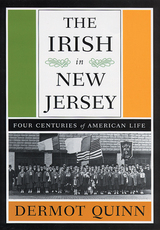 The Irish in New Jersey: Four Centuries of American Life, First Paperback Edition
Dermot Quinn
Rutgers University Press, 2004 Since Irish immigrants began settling in New Jersey during the seventeenth century, they have made a sizable impact on the state's history and development. As the budding colony established an identity in the New World, the Irish grappled with issues of their own: What did it mean to be Irish American, and what role would "Irishness" play in the creation of an American identity?
In this richly illustrated history, Dermot Quinn uncovers the story of how the Irish in New Jersey maintained their cultural roots while also laying the foundations for the social, economic, political, and religious landscapes of their adopted country. Quinn chronicles the emigration of families from a conflict-torn and famine-stricken Ireland to the unfamiliar land whose unwelcoming streets often fell far short of being paved with gold.
Using case histories from Paterson, Jersey City, and Newark, Quinn examines the transition of the Irish from a rejected minority to a middle-class, secular, and suburban identity. The Irish in New Jersey will appeal to everyone with an interest in the cultural heritage of a proud and accomplished people.
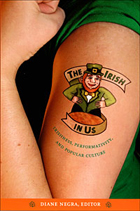 The Irish in Us: Irishness, Performativity, and Popular Culture
Diane Negra, ed.
Duke University Press, 2006 Over the past decade or so, Irishness has emerged as an idealized ethnicity, one with which large numbers of people around the world, and particularly in the United States, choose to identify. Seeking to explain the widespread appeal of all things Irish, the contributors to this collection show that for Americans, Irishness is rapidly becoming the white ethnicity of choice, a means of claiming an ethnic identity while maintaining the benefits of whiteness. At the same time, the essayists challenge essentialized representations of Irishness, bringing attention to the complexities of Irish history and culture that are glossed over in Irish-themed weddings and shamrock tattoos. Examining how Irishness is performed and commodified in the contemporary transnational environment, the contributors explore topics including Van Morrison’s music, Frank McCourt’s writing, the explosion of Irish-themed merchandising, the practices of heritage seekers, the movie The Crying Game, and the significance of red hair. Whether considering the implications of Garth Brooks’s claim of Irishness and his enormous popularity in Ireland, representations of Irish masculinity in the TV series Buffy the Vampire Slayer and Angel, or Americans’ recourse to a consoling Irishness amid the racial and nationalist tensions triggered by the events of September 11, the contributors delve into complex questions of ethnicity, consumerism, and globalization. Ultimately, they call for an increased awareness of the exclusionary effects of claims of Irishness and for the cultivation of flexible, inclusive ways of affiliating with Ireland and the Irish. Contributors. Natasha Casey, Maeve Connolly, Catherine M. Eagan, Sean Griffin, Michael Malouf, Mary McGlynn, Gerardine Meaney, Diane Negra, Lauren Onkey, Maria Pramaggiore, Stephanie Rains, Amanda Third
Irish in Wisconsin
David G. Holmes
Wisconsin Historical Society Press, 2004 We know theirs to have been the hands that helped build the nation’s canals and railroads, the transport for so many immigrant groups making their way to the newly formed state of Wisconsin in the mid–nineteenth century. Yet the stories of Irish people in Wisconsin and their role in our state’s history became almost invisible as time passed. Irish in Wisconsin recounts the nature of the Irish immigrant experience in Wisconsin both in relation to other ethnic groups and to the larger story of Irish immigration into this country. David Holmes shows the impact of the Irish on the state’s early development and politics. He explores the Irish cultural contribution to the state and the current resurgence in Irish pride and identity. Irish in Wisconsin tells this story with solid historical analysis, first-hand accounts, and rare photographs.
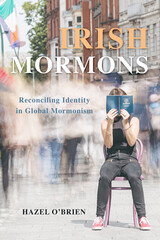 Irish Mormons: Reconciling Identity in Global Mormonism
Hazel O'Brien
University of Illinois Press, 2023 The Church of Jesus Christ of Latter-day Saints is one of the international religions that have arrived from abroad to find adherents in Ireland. Drawing on fieldwork in two LDS communities, Hazel O’Brien explores how these adherents experience the Church in Ireland against the backdrop of the country’s increasingly complex religious identity. Irish Latter-day Saints live on the margins of the nation’s religious life and the worldwide LDS movement. Nonetheless, they create a sense of belonging for themselves by drawing on collective memories of both their Irishness and their faith. As O’Brien shows, Irish Latter-day Saints work to shift the understanding of Ireland’s religious landscape away from a predominant focus on Roman Catholicism. They also challenge Utah-based constructions of Mormonism in order to ensure their place in the Church’s powerful religious and cultural lineage. Examining the Latter-day Saint experience against one nation’s rapid social and religious changes, Irish Mormons blends participant observation and interviews with analysis to offer a rare view of the Latter-day Saints in contemporary Ireland.
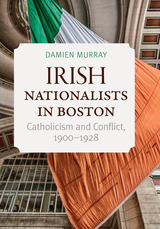 Irish Nationalists in Boston: Catholicism and Conflict, 1900-1928
Damien Murray
Catholic University of America Press, 2018 During the first quarter of the twentieth century, the intersection of support for Irish freedom and the principles of Catholic social justice transformed Irish ethnicity in Boston. Prior to World War I, Boston’s middle-class Irish nationalist leaders sought a rapprochement with local Yankees. However, the combined impact of the Easter 1916 Rising and the postwar campaign to free Ireland from British rule drove a wedge between leaders of the city’s two main groups. Irish-American nationalists, emboldened by the visits of Irish leader Eamon de Valera, rejected both Yankees’ support of a postwar Anglo-American alliance and the latter groups’ portrayal of Irish nationalism as a form of Bolshevism. Instead, ably assisted by Catholic Church leaders such as Cardinal William O’Connell, Boston’s Irish nationalists portrayed an independent Ireland as the greatest bulwark against the spread of socialism. As the movement’s popularity spread locally, it attracted the support not only of Irish immigrants, but also that of native-born Americans of Irish descent, including businessman, left-leaning progressives, and veterans of the women’s suffrage movement.
For a brief period after World War I, Irish-American nationalism in Boston became a vehicle for the promotion of wider democratic reform. Though the movement was unable to survive the disagreements surrounding the Anglo-Irish Treaty of 1921, it had been a source of ethnic unity that enabled Boston’s Irish community to negotiate the challenges of the postwar years including the anti-socialist Red Scare and the divisions caused by the Boston Police Strike in the fall of 1919. Furthermore, Boston’s Irish nationalists drew heavily on Catholic Church teachings such that Irish ethnicity came to be more clearly identified with the advocacy of both cultural pluralism and the rights of immigrant and working families in Boston and America.
Irish on the Move: Performing Mobility in American Variety Theatre
Michelle Granshaw
University of Iowa Press, 2019 A little over a century ago, the Irish in America were the targets of intense xenophobic anxiety. Much of that anxiety centered on their mobility, whether that was traveling across the ocean to the U.S., searching for employment in urban centers, mixing with other ethnic groups, or forming communities of their own. Granshaw argues that American variety theatre, a precursor to vaudeville, was a crucial battleground for these anxieties, as it appealed to both the fears and the fantasies that accompanied the rapid economic and social changes of the Gilded Age.
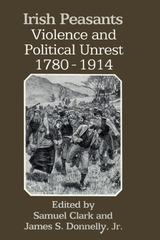 Irish Peasants: Violence and Political Unrest, 1780–1914
Samuel Clark
University of Wisconsin Press, 1983 "The strength of this volume cannot be conveyed by an itemisation of its contents; for what it provides is an incisive commentary on the newly-recognised landmarks of Irish agrarian history in the modern period. . . . The importance, even indispensability, of this achievement is compounded by exemplary editing."—Roy Foster, London Times Literary Supplement
"As a whole, the volume demonstrates the wealth, complexity, and sophistication of Irish rural studies. The book is essential reading for anyone involved in modern Irish history. It will also serve as an excellent introduction to this rich field for scholars of other peasant communities and all interested in problems of economic and political developments."—American Historical Review
"A milestone in the evolution of Irish social history. There is a remarkable consistency of style and standard in the essays. . . . This is truly history from the grassroots."—Timothy P. O'Neill, Studia Hibernica
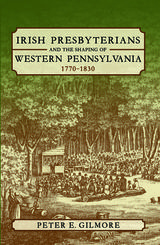 Irish Presbyterians and the Shaping of Western Pennsylvania, 1770-1830
Peter Gilmore
University of Pittsburgh Press, 2021 Irish Presbyterians and the Shaping of Western Pennsylvania, 1770–1830 is a historical study examining the religious culture of Irish immigrants in the early years of America. Despite fractious relations among competing sects, many immigrants shared a vision of a renewed Ireland in which their versions of Presbyterianism could flourish free from the domination of landlords and established church. In the process, they created the institutional foundations for western Pennsylvanian Presbyterian churches.
Rural Presbyterian Irish church elders emphasized community and ethnoreligious group solidarity in supervising congregants’ morality. Improved transportation and the greater reach of the market eliminated near-subsistence local economies and hastened the demise of religious traditions brought from Ireland. Gilmore contends that ritual and daily religious practice, as understood and carried out by migrant generations, were abandoned or altered by American-born generations in the context of major economic change.
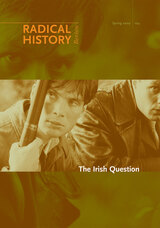 The Irish Question, Volume 2009
Conor McGrady, Donal Ó Drisceoil and Van Gosse, eds.
Duke University Press This special issue of Radical History Review focuses on the “Irish question”—the historical role of British imperialism in Ireland and its legacies in the modern Republic of Ireland and in Northern Ireland. This collection of essays places Ireland in a comparative context, addressing the broader relevance of the Irish experience to questions of empire and colonialism worldwide. Examining how the Irish nationalist movement functioned for more than two centuries within the context of various forms of British imperialism, the issue analyzes the evolution of contemporary Ireland’s politics of race, immigration, and armed resistance. One contributor addresses the issue of constitutional nationalism in late-nineteenth- and early-twentieth-century Ireland, while another looks at the recent history of Irish republicanism in relation to the peace process. Other essays examine Protestant society and Unionist hegemony in nineteenth-century Ulster, immigration and racism as the Irish experienced them in postwar Britain, and the historiography of race and racialization in Ireland. The historical adviser for the award-winning film The Wind That Shakes the Barley reflects on its portrayal of the period of the Irish War of Independence and Civil War and a photographic essay focuses on supporters of the modern Irish republican movement in the United States and Ireland. Contributors. Kevin Bean, Pauline Collombier-Lakeman, Mary Conley, John Corbally, Steve Garner, Diane George, Van Gosse, Martin Hayes, Bill Kissane, Conor McGrady, Kerby Miller, Kevin Noble, Donal Ó Drisceoil
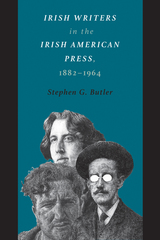 Irish Writers in the Irish American Press, 1882-1964
Stephen G. Butler
University of Massachusetts Press, 2018 Literary anthologies feature many of Ireland's most well-known authors, Oscar Wilde, W. B. Yeats, J. M. Synge, George Bernard Shaw, Seán O'Casey, James Joyce, and Brendan Behan among them. While a number of notable scholars have contended that middle-class Irish Americans rejected or ignored this rebellious group of poets, playwrights, and novelists in favor of a conservative Catholic subculture brought over with the mass migration of the mid-nineteenth century, Stephen G. Butler demonstrates that the transatlantic relationship between these figures and a segment of Irish American journalists and citizens is more complicated—and sometimes more collaborative—than previously acknowledged.
Irish Writers in the Irish American Press spans the period from Oscar Wilde's 1882 American lecture tour to the months following JFK's assassination and covers the century in which Irish American identity was shaped by immigration, religion, politics, and economic advancement. Through a close engagement with Irish American periodicals, Butler offers a more nuanced understanding of the connections between Irish literary studies and Irish American culture during this period.
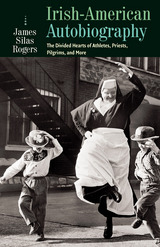 Irish-American Autobiography
James Silas Rogers
Catholic University of America Press, 2016 Irish-American Autobiography opens a new window on the shifting meanings of Irishness over the twentieth century, by looking at a range of works that have never before been considered as a distinct body of literature. Opening with celebrity memoirs from athletes like boxer John L. Sullivan and ballplayer Connie Mack - written when the Irish were eager to put their raffish origins behind them - later chapters trace the many tensions, often unspoken, registered by Irish Americans who've told their life stories. New York saloonkeepers and South Boston step dancers set themselves against the larger culture, setting a pattern of being on the outside looking in. Even the classic 1950s TV comedy The Honeymooners speaks to the urban Irish origins, and the poignant sense of exclusion felt by its creator Jackie Gleason. Catholicism, so key to the identity of earlier generations of Irish Americans, has also evolved. One chapter looks at the painful diffidence of priest autobiographers, and others reveal how traditional Irish Catholic ideas of the guardian angel and pilgrimage have evolved and stayed potent down to our own time. Irish-American Autobiography becomes, in the end, a story of a continued search for connection - documenting an "ethnic fade" that never quite happened.
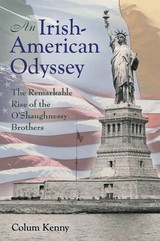 An Irish-American Odyssey: The Remarkable Rise of the O'Shaughnessy Brothers
Colum Kenny
University of Missouri Press, 2014 The O’Shaughnessy brothers’ story takes place between 1860 and 1950 in Illinois, Missouri, New York, and Ireland. They were the children of an impoverished immigrant who fled the famine in Ireland and his Irish-American wife. An Irish-American Odysseyis the tale of this first-generation immigrant family’s struggle to assimilate into American society, highlighting their perseverance and determination to seize opportunities and surmount obstacles, all the while establishing a legacy for their own descendants in American art, advertising, journalism, and public service. TIME magazine called James O’Shaughnessy “the best in the business” of advertising, and he became the first chief executive of the American Association of Advertising Agencies. Earlier, he was a “star” reporter at the Chicago Tribune, and James and Francis were centrally involved in founding and maintaining the Irish Fellowship Club. Francis was also the first graduate of the University of Notre Dame to be invited to deliver its annual commencement address, while Martin was the first captain of Notre Dame’s official basketball team. An attorney, John represented the alleged victim in a notorious “white slavery” case. Thomas (“Gus”) became the leading Gaelic Revival artist in America as well as a promoter of Italian-American heritage, campaigning successfully to have Columbus Day enacted a public holiday. The remarkable rise of the O’Shaughnessy brothers proves the American dream is attainable.
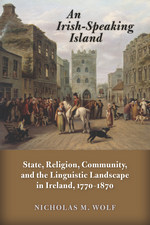 An Irish-Speaking Island: State, Religion, Community, and the Linguistic Landscape in Ireland, 1770–1870
Nicholas M. Wolf
University of Wisconsin Press, 2014 After 1770, Ireland experienced the establishment of modern forms of Irish Catholicism, new engagement by the public with the political process, and the growth of the modern state, represented by new legal and educational systems. An Irish-Speaking Island investigates the role in these developments of the population who spoke Irish in their daily lives—whether as a first or second language—and links the history of language contact and bilingualism with the broader history of Ireland in the eighteenth and nineteenth centuries.
As late as 1840, Ireland had as many as four million Irish speakers—a significant proportion of the total population—who could be found in every county of the island and in all social classes and religious persuasions. Their impact on the modern history of Ireland and the United Kingdom cannot be captured by a simple conclusion that they became anglicized. Rather, Nicholas M. Wolf explores the complex ways in which the transition from Irish to English placed a premium on adaptive bilingualism and shaped beliefs and behavior in the domestic sphere, religious life, and oral culture within the community. An Irish-Speaking Island will interest not only historians but also scholars of linguistics, folklore, politics, literature, and religion.
Winner, Michael J. Durkan Prize for Books on Language and Culture, American Conference for Irish Studies
Winner, Donald Murphy Prize for Distinguished First Books, American Conference for Irish Studies
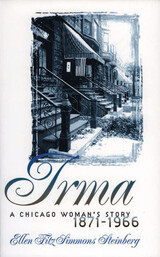 Irma: A Chicago Woman's Story, 1871-1966
Ellen Fitzsimmons Steinberg
University of Iowa Press, 2004 Ellen Steinberg’s Irma, painstakingly crafted out of Irma Rosenthal Frankenstein’s voluminous writings, gives us an inspiring and richly rewarding account of the life and times of an active, socially engaged woman who devoted herself to her family and her community over the course of a long and full life. Irma (1871-1966) was born in Chicago—just before the Chicago Fire—of German Jewish parents who had come to the U.S. shortly after the Civil War. Irma attended public schools and the University of Chicago, participated energetically in Jewish women’s and social-welfare activities, raised her family, and published one poem and a small book.
Irma’s journals and diaries were private accounts in which she chronicled the rhythm of her days and the shape of her life. She recorded her thoughts and short quotations from her reading, jotted down her own poems and short stories, constructed dinner-party menus, and wrote biographical sketches of her family. Interspersed among the records of what she did when and with whom are a number of lengthy reflections on Chicago history, her early life, religious beliefs, education, her aspirations, disappointments, sorrows, and successes. She documented her family’s activities during the Chicago Fire, the city’s rebuilding, early educational curricula in the city’s schools, what it was like to participate in the suffrage movement and vote for the first time, the effect of the Great Depression on the middle class, and World War II as seen from her perspective.
In each chapter, Ellen Steinberg has set Irma’s contemporary entries and later memoirs against the context of the Chicago history that Irma knew so well. Irma’s story will fascinate those interested in diaries and autobiography, women’s history, and Chicago history. From a plethora of rich source materials—including over half a million words of Irma’s writings alone—Steinberg has created a seamless, fascinating narrative about a Chicago woman who, although “nobody famous” (in her words), lived a vital life in a vibrant city.
Iron Age Hieroglyphic Luwian Inscriptions
Annick Payne
SBL Press, 2012 Hieroglyphic Luwian belongs to the Anatolian group of ancient languages and was inscribed primarily on stone, using an indigenous Anatolian pictorial writing system. These Hieroglyphic Luwian inscriptions were written over a period of centuries in the region of Anatolia and northern Syria. Their authors were primarily the rulers of the so-called Neo-Hittite states, contemporaries and neighbors of early Israel. This volume collects some of the most important and representative of the inscriptions in transliteration and translation, organized by genre. Each text is accompanied by relevant information on provenance, dating, and other points of interest that will engage specialist and nonspecialist alike.
 Iron and Blood: A Military History of the German-Speaking Peoples since 1500
Peter H. Wilson
Harvard University Press, 2023 “The scholarship of this book is breathtaking…No one interested in the history of Europe, and of the Germans in particular, can afford not to read this stupendous book.” —Simon Heffer, The Telegraph
“[Iron and Blood’s] long view of Germany’s military history, magisterial detail and acute analysis provide a new understanding of what was once Europe’s warring heart.” —The Economist
“Astonishingly ambitious and detailed…An absorbing overview of how slowly changing societal forces… have transformed the use of military force across modern times.” —Foreign Affairs
German military history is typically viewed as an inexorable march to the rise of Prussia and the two world wars, the road paved by militarism and the result a specifically German way of war. Looking beyond Prussia to German-speaking Europe across the last five centuries, Peter Wilson challenges this narrative. In fact, he finds little unique or preordained in German militarism or warfighting.
Starting with the consolidation of the Holy Roman Empire, which was largely defensive in orientation, Iron and Blood shows that German participation in foreign wars was most often in partnership with allies. The primary aggressor in Central Europe was not Prussia but the Austrian Habsburg monarchy, which owed much of its strength to its ability to secure alliances. Prussia, meanwhile, invested in militarization but maintained a part-time army well into the nineteenth century. Both states, Wilson shows, exemplify the longstanding civilian element within German military power. Only after Prussia’s unexpected victory over France in 1871 did Germans and outsiders come to believe in a German gift for warfare—a special capacity for high-speed, high-intensity combat that could overcome numerical disadvantage.
It took two world wars to expose the fallacy of German military genius. Yet even today, Wilson argues, Germany’s strategic position is misunderstood. The country now seen as a bastion of peace spends heavily on defense in comparison to its peers and is deeply invested in less kinetic contemporary forms of coercive power.
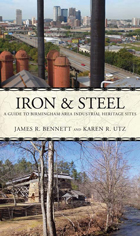 Iron and Steel: A Driving Guide to the Birmingham Area Industrial Heritage
James R. Bennett and Karen R. Utz
University of Alabama Press, 2010 This guidebook of historic iron-production sites is designed to give the reader a factual and illuminating look at the people and events that shaped Birmingham into one of America’s leading steel centers. Iron & Steel is heavily illustrated with both color and historical black-and-white photographs. It can be used while visiting parks or read as a coherent volume before or after a visit. The book contains chapters devoted to the larger preserved sites open to the public, such as Sloss Furnaces National Historic Landmark and Tannehill Ironworks Historical State Park. It also highlights lesser-known, yet still accessible, sites such as Blocton Coke Ovens Park. The work provides easy-to-follow maps for every site as well as driving directions to the more remote locations, giving visitors easy access to all the notable iron and steel sites in Jefferson, Shelby, Tuscaloosa, and Bibb counties. Each chapter also includes a variety of historical information, with accompanying photographs, in order to present the reader with a detailed and comprehensive account of the Birmingham Iron and Steel District. Featured sites include: Tannehill Ironworks Historical State Park; Shelby Ironworks Park; Billy Gould Coke Ovens Park; Brierfield Ironworks Historical State Park; Oxmoor Furnace Site; Irondale Furnace Park; Helena Rolling Mill Site; Red Mountain Park, Iron Ore Mines; Lewisburg Coke Ovens Park; Sloss Furnaces National Historic Landmark; Ruffner Mountain Nature Center; Blocton Coke Ovens Park; and Vulcan Park and Museum.
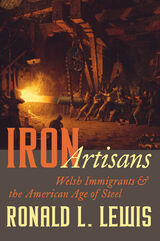 Iron Artisans: Welsh Immigrants and the American Age of Steel
Ronald L. Lewis
University of Pittsburgh Press, 2023 America’s emergence as a global industrial superpower was built on iron and steel, and despite their comparatively small numbers, no immigrant group played a more strategic role per capita in advancing basic industry than Welsh workers and managers. They immigrated in surges synchronized with the stage of America’s industrial development, concentrating in the coal and iron centers of Pennsylvania and Ohio. This book explores the formative influence of the Welsh on the American iron and steel industry and the transnational cultural spaces they created in mill communities in the tristate area—the greater upper Ohio Valley, eastern Ohio, northern West Virginia, and western Pennsylvania—including boroughs of Allegheny County, such as Homestead and Braddock. Focusing on the intersection of transnational immigration history, ethnic history, and labor history, Ronald Lewis analyzes continuity and change, and how Americanization worked within a small, relatively privileged, working-class ethnic group.
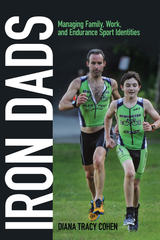 Iron Dads: Managing Family, Work, and Endurance Sport Identities
Diana Tracy Cohen
Rutgers University Press, 2016 Among the most difficult athletic events a person can attempt, the iron-distance triathlon—a 140.6 mile competition—requires an intense prerace training program. This preparation can be as much as twenty hours per week for a full year leading up to a race. In Iron Dads, Diana Tracy Cohen focuses on the pressures this extensive preparation can place on families, exploring the ways in which men with full-time jobs, one or more children, and other responsibilities fit this level of training into their lives. An accomplished triathlete as well as a trained social scientist, Cohen offers much insight into the effects of endurance-sport training on family, parenting, and the sense of self. She conducted in-depth interviews with forty-seven iron-distance competitors and three prominent men in the race industry, and analyzed triathlon blog postings made by Iron Dads. What sacrifices, Cohen asks, are required—both at home and at work—to cross the iron-distance finish line? What happens when work, family, and sport collide? Is it possible for fathers to meet their own parenting expectations while pursuing such a time-consuming regimen? With the tensions of family economics, how do you justify spending $5,000 on a racing bike? At what point does sport become work? Cohen discovered that, by fostering family involvement in this all-consuming effort, Iron Dads are able to maintain a sense of themselves not only as strong, masculine competitors, but also as engaged fathers. Engagingly written and well researched, Iron Dads provides a penetrating, firsthand look at extreme endurance sports, including practical advice for aspiring racers and suggestions for making triathlons more family-friendly.
 The Iron Grasshopper: A Childhood Autobiography; The Incomplete Biography of a Child Who Saw Nothing but a Fugitive Land, So He Shouted: These Are My Traps, O Sandgrouse!
Salim Barakat
Seagull Books, 2025 Through vivid vignettes and lyrical prose, The Iron Grasshopper transcends memoir, immersing readers in the poignant and turbulent realities of a Kurdish childhood in mid-twentieth-century Syria. Kurdish-Syrian poet and novelist Salim Barakat, one of the most distinctive writers in contemporary Arabic literature, has mesmerized the Arab literary scene since his first volume of poetry appeared in 1972. Now, his unique memoir—first published in 1980—is finally available in English translation. In The Iron Grasshopper, Barakat offers a poignant and evocative portrayal of his childhood. Set against the backdrop of the mid-twentieth century, Barakat’s memoir recounts his formative years in a small town near the Taurus Mountains. Through a series of vivid and often unsettling vignettes, he captures the turbulence and wonder of growing up in a landscape marked by political upheaval, cultural conflicts, and personal discovery. Barakat’s story intertwines childhood innocence with the harsh realities of violence and discrimination against Kurds, shaping his relationship with his homeland, the Arabic language, and his identity as a writer. The memoir’s rich prose and lyrical reflections invite readers into Barakat’s inner world, where the boundaries between past and present blur, and the simplicity of childhood is juxtaposed with profound existential musings.
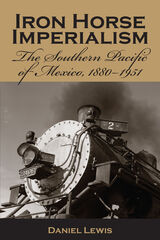 Iron Horse Imperialism: The Southern Pacific of Mexico, 1880-1951
Daniel Lewis
University of Arizona Press, 2008 The Southern Pacific of Mexico was a U.S.–owned railroad that operated between 1898 and 1951, running from the Sonoran town of Nogales, just across the border from Arizona, to the city of Guadalajara, stopping at several northwestern cities and port towns along the way. Owned by the Southern Pacific Company, which operated a highly profitable railroad system north of the border, the SP de Mex transported millions of passengers as well as millions of tons of freight over the years, both within Mexico and across its northern border. However, as Daniel Lewis discloses in this thoroughly researched investigation of the railroad, it rarely turned a profit. So why, Lewis wonders, did a savvy, money-minded U.S. corporation continue to operate the railroad until it was nationalized by the Mexican government more than a half-century after it was constructed? Iron Horse Imperialism reveals that the relationship between the Mexican government and the Southern Pacific Company was a complex one, complicated by Mexico’s defeat by U.S. forces in the mid-nineteenth century and by SP’s failure to understand that it was conducting business in a country whose leaders were ambivalent about its presence. Lewis contends that SP executives, urged on by the media of the day, operated with a reflexive imperialism that kept the company committed to the railroad long after it ceased to make business sense. Incorporating information discovered in both Mexican and American archives, some of which was previously unavailable to researchers, this comprehensive book deftly describes the complicated, decades-long dance between oblivious U.S. entrepreneurs and wary Mexican officials. It is a fascinating story.
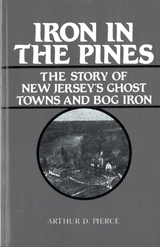 Iron in the Pines: The Story of New Jersey's Ghost Towns and Bog Iron
Pierce, Arthur
Rutgers University Press, 1966 Deep in the heart of southern New Jersey lies an area of some 96,000 acres of sprawling wilderness. It is the famous Wharton Tract which the state of New Jersey purchased in 1954 for a watershed, game preserve, and park. Many people know and love these wooded acres. Each year, people by the thousands visit Batsto Village, once the center of the iron industry that thrived on the tract more than a century ago. With warmth and accuracy, Arthur D. Pierce tells the story of the years when iron was king, and around it rose a rustic feudal economy. There were glass factories, paper mills, cotton mills, and brickmaking establishments. Here, too, were men who made those years exciting: Benedict Arnold and his first step toward treason; Charles Read, who dreamed of an empire and died in exile; Revolutionary heroes and heroines, privateers, and rogues. The author's vivid pictures of day-to-day life in the old iron communities are based upon careful research. This book proves that the human drama of documented history belies any notion that fiction is stranger than truth.
 Iron Kingdom: The Rise and Downfall of Prussia, 1600–1947
Christopher Clark
Harvard University Press, 2006 In the aftermath of World War II, Prussia—a centuries-old state pivotal to Europe’s development—ceased to exist. In their eagerness to erase all traces of the Third Reich from the earth, the Allies believed that Prussia, the very embodiment of German militarism, had to be abolished. But as Christopher Clark reveals in this pioneering history, Prussia’s legacy is far more complex. Though now a fading memory in Europe’s heartland, the true story of Prussia offers a remarkable glimpse into the dynamic rise of modern Europe.
What we find is a kingdom that existed nearly half a millennium ago as a patchwork of territorial fragments, with neither significant resources nor a coherent culture. With its capital in Berlin, Prussia grew from being a small, poor, disregarded medieval state into one of the most vigorous and powerful nations in Europe. Iron Kingdom traces Prussia’s involvement in the continent’s foundational religious and political conflagrations: from the devastations of the Thirty Years War through centuries of political machinations to the dissolution of the Holy Roman Empire, from the enlightenment of Frederick the Great to the destructive conquests of Napoleon, and from the “iron and blood” policies of Bismarck to the creation of the German Empire in 1871, and all that implied for the tumultuous twentieth century.
By 1947, Prussia was deemed an intolerable threat to the safety of Europe; what is often forgotten, Clark argues, is that it had also been an exemplar of the European humanistic tradition, boasting a formidable government administration, an incorruptible civil service, and religious tolerance. Clark demonstrates how a state deemed the bane of twentieth-century Europe has played an incalculable role in Western civilization’s fortunes. Iron Kingdom is a definitive, gripping account of Prussia’s fascinating, influential, and critical role in modern times.
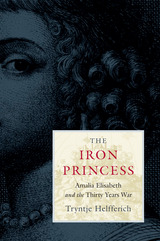 The Iron Princess: Amalia Elisabeth and the Thirty Years War
Tryntje Helfferich
Harvard University Press, 2013 Thrust into power in the midst of the bloodiest conflict Europe had ever experienced, Amalia Elisabeth fought to save her country, her Calvinist church, and her children’s inheritance. Tryntje Helfferich’s vivid portrait reveals how this unique and embattled ruler used her diplomatic gifts to play the great powers of Europe against one another during the Thirty Years War, while raising one of the most powerful and effective fighting forces on the continent.
Stranded in exile after the death of her husband, Amalia Elisabeth stymied the maneuvers of male relatives and advisors who hoped to seize control of the affairs of her tiny German state of Hesse-Cassel. Unshakable in her religious faith and confident in her own capacity to rule, the princess crafted a cunning strategy to protect her interests. Despite great personal tragedy, challenges to her rule, and devastating losses to her people and lands, Amalia Elisabeth wielded her hard-won influence to help shape the new Europe that arose in the war’s wake. She ended her reign in triumph, having secured the birthright of her children and the legalization of her church. The Iron Princess restores to view one of the most compelling political figures of her time, a woman once widely considered the heroine of the seventeenth century.
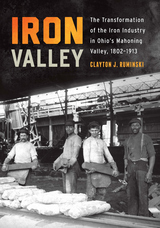 Iron Valley: The Transformation of the Iron Industry in Ohio's Mahoning Valley, 1802–1913
Clayton J. Ruminski
Ohio State University Press, 2017 Youngstown, Ohio, and the surrounding Mahoning Valley supplied the iron that helped transform the United States into an industrial powerhouse in the nineteenth century. The story of the Mahoning Valley’s unorthodox rise from mid-scale iron producer to twentieth-century “Steel Valley” is a tale of innovation, stagnation, and, above all, extreme change. Located halfway between Pittsburgh and Cleveland, the Mahoning Valley became a major supplier of pig iron to America’s biggest industrial regions. For much of the nineteenth century, outside consumers relied on the Valley’s pig iron, but this reliance nurtured a reluctance on the part of Youngstown iron companies to diversify or expand their production. In Iron Valley: The Transformation of the Iron Industry in Ohio’s Mahoning Valley, 1802–1913, Clayton J. Ruminski argues that Youngstown-area iron manufacturers were content to let others in the industry innovate, and only modernized when market conditions forced them to do so. Desperate to find new markets, some Youngstown iron manufacturers eventually looked toward steel and endured a rapid, but successful, industrial transformation that temporarily kept their old enterprises afloat in a rapidly evolving industry. Richly illustrated with rare photographs of Mahoning Valley ironmasters, mills, furnaces, and workers, Iron Valley sheds light on a previously underrepresented and vital region that built industrial America.
Iron Wheel
Greg Miller
University of Chicago Press, 1998 The poems in Iron Wheel are hard won, the product of the clash of cultures: Southern, religious, gay. Miller achieves an intense, disturbing, and singular poetic voice, capable of tenderness, but undaunted when forced to confront the harsh, often violent realities of contemporary life in the South.
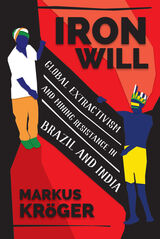 Iron Will: Global Extractivism and Mining Resistance in Brazil and India
Markus Kröger
University of Michigan Press, 2020 Iron Will lays bare the role of extractivist policies and efforts to resist these policies through a deep ethnographic exploration of globally important iron ore mining in Brazil and India. Markus Kröger addresses resistance strategies to extractivism and tracks their success, or lack thereof, through a comparison of peaceful and armed resource conflicts, explaining how different means of resistance arise. Using the distinctly different contexts and political systems of Brazil and India highlights the importance of local context for resistance. For example, if there is an armed conflict at a planned mining site, how does this influence the possibility to use peaceful resistance strategies? To answer such questions, Kröger assesses the inter-relations of contentious, electoral, institutional, judicial, and private politics that surround conflicts and interactions, offering a new theoretical framework of “investment politics” that can be applied generally by scholars and students of social movements, environmental studies, and political economy, and even more broadly in Social Scientific and Environmental Policy research.
By drawing on a detailed field research and other sources, this book explains precisely which resistance strategies are able to influence both political and economic outcomes. Kröger expands the focus of traditionally Latin American extractivism research to other contexts such as India and the growing extractivist movement in the Global North. In addition, as the book is a multi-sited political ethnography, it will appeal to sociologists, political scientists, anthropologists, geographers, and others using field research among other methods to understand globalization and global political interactions. It is the most comprehensive book on the political economy and ecology of iron ore and steel. This is astonishing, given the fact that iron ore is the second-most important commodity in the world after oil.
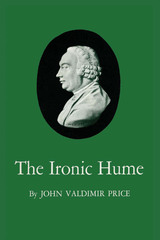 The Ironic Hume
By John Valdimir Price
University of Texas Press, 1965 Many of the seemingly bland assertions and bald statements of the eighteenth-century philosopher David Hume contain more than the mind immediately perceives. Author John Valdimir Price contends that an understanding of Hume's writings cannot be separated from an understanding of his life. By examining the works of Hume, Price shows the way in which an ironic way of seeing events and an ironic mode of expression permeated Hume's life and writings. Price examines Hume's irony as it is exhibited in letters to his friends and in his writings concerned with morality, people, philosophy, politics, history, and above all religion. Hume's opinions on life in general are stated in works ranging from the Treatise of Human Nature and the Essays, Moral and Political, through the Enquiry concerning Human Understanding and the Enquiry concerning Principles of Morals, to the Dialogue and Four Dissertations of his maturity. Price feels that Hume's recognition of the ironic in life came about from his perception of the disproportion between human hopes and human accomplishments. The rhetorical consequences of applying reason to a duality in human nature creates the ironic mode. Hume conceived man's opposing tendencies as his willingness to commit himself orally to a concept, a dogma, an idea, or an ideology, and his unwillingness to involve himself in the logical and rhetorical implications of articulating those principles. Hume's use of the ironic mode in his writings provides him with a means of challenging certain dogmatic assumptions common to thought, particularly to traditional religious thought; it acts as a mask for his sceptical intentions, and it is an implied criticism of many ideas. In his political writing, Hume frequently implied that the question under argument was almost too ridiculous to deserve serious treatment. This tactic was effectively employed in the Account of Stewart, in which Hume came to the defense of a friend. In his most profitable venture, the History of England, Hume not only used irony to advantage, but developed a new approach to the writing of history—the use of narrative. He presented history as a series of more or less connected events, not as a series of "right" or "wrong" attitudes. The author believes that Hume's initial religious scepticism, combined with the predominant satiric-ironic mode in the literature of his time, led him to seek irony as a method of self expression. This scepticism, which permeated all of Hume's attitudes toward life, reached its most complete expression in the Dialogues concerning Natural Religion, which accepted reason as its guide, but also accepted experience as its master.
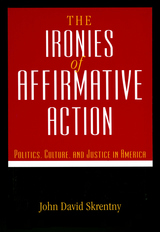 The Ironies of Affirmative Action: Politics, Culture, and Justice in America
John David Skrentny
University of Chicago Press, 1996 Affirmative action has been fiercely debated for more than a quarter of a century, producing much partisan literature, but little serious scholarship and almost nothing on its cultural and political origins. The Ironies of Affirmative Action is the first book-length, comprehensive, historical account of the development of affirmative action.
Analyzing both the resistance from the Right and the support from the Left, Skrentny brings to light the unique moral culture that has shaped the affirmative action debate, allowing for starkly different policies for different citizens. He also shows, through an analysis of historical documents and court rulings, the complex and intriguing political circumstances which gave rise to these controversial policies.
By exploring the mystery of how it took less than five years for a color-blind policy to give way to one that explicitly took race into account, Skrentny uncovers and explains surprising ironies: that affirmative action was largely created by white males and initially championed during the Nixon administration; that many civil rights leaders at first avoided advocacy of racial preferences; and that though originally a political taboo, almost no one resisted affirmative action.
With its focus on the historical and cultural context of policy elites, The Ironies of Affirmative Action challenges dominant views of policymaking and politics.
 Ironies of Faith: The Laughter at the Heart of Christian Literature
Anthony Esolen
Intercollegiate Studies Institute, 2007 In Ironies of Faith, celebrated Dante scholar and translator Anthony Esolen provides a profound meditation upon the use and place of irony in Christian art and in the Christian life. Beginning with an extended analysis of irony as an essentially dramatic device, Esolen explores those manifestations of irony that appear prominently in Christian thinking and art: ironies of time (for Christians believe in divine Providence, but live in a world whose moments pass away); ironies of power (for Christians believe in an almighty God who took on human flesh, and whose “weakness” is stronger than our greatest enemy, death); ironies of love (for man seldom knows whom to love, or how, or even whom it is that in the depths of his heart he loves best); and the figure of the Child (for Christians ever hear the warning voice of their Savior, who says that unless we become like unto one of these little ones, we shall not enter the Kingdom of God).
Esolen’s finely wrought study draws from Augustine (Confessions), Dante (The Divine Comedy), Shakespeare (The Tempest), and Tolkien (“Leaf, By Niggle”); Francois Mauriac (A Kiss for the Leper), Milton (Paradise Lost), and Alessandro Manzoni (The Betrothed); the poems of George Herbert and Gerard Manley Hopkins, and Edmund Spenser (Amoretti); Charles Dickens (A Christmas Carol), Dostoyevsky (The Brothers Karamazov), and the anonymous author of the medieval poem Pearl, among other works. Readers who treasure the Christian literary tradition should not miss this illuminating book.
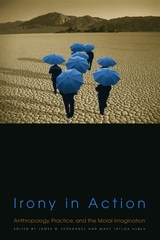 Irony in Action: Anthropology, Practice, and the Moral Imagination
Edited by James Fernandez and Mary Taylor Huber
University of Chicago Press, 2001 Irony today extends beyond its classification as a figure of speech and is increasingly recognized as one of the major modes of human experience. This idea of irony as an integral force in social life is at the center of this provocative book. The result of a meeting where anthropologists were invited to explore the politics of irony and the moral responsibilities that accompany its recognition, this book is one of the first to lend an anthropological perspective to this contemporary phenomenon.
The first group of essays explores the limits to irony's liberating qualities from the constrained use of irony in congressional hearings to its reactive presence amid widening disparities of wealth despite decades of world development. The second section presents irony's more positive dimensions through an array of examples such as the use of irony by Chinese writers and Irish humorists. Framed by the editors' theoretical introduction to the issues posed by irony and responses to the essays by two literary scholars, Irony in Action is a timely contribution in the contemporary reinvention of anthropology.
 The Irony of American History
Reinhold Niebuhr
University of Chicago Press, 2008 “[Niebuhr] is one of my favorite philosophers. I take away [from his works] the compelling idea that there’s serious evil in the world, and hardship and pain. And we should be humble and modest in our belief we can eliminate those things. But we shouldn’t use that as an excuse for cynicism and inaction. I take away . . . the sense we have to make these efforts knowing they are hard.”—President Barack Obama Forged during the tumultuous but triumphant postwar years when America came of age as a world power, The Irony of American History is more relevant now than ever before. Cited by politicians as diverse as Hillary Clinton and John McCain, Niebuhr’s masterpiece on the incongruity between personal ideals and political reality is both an indictment of American moral complacency and a warning against the arrogance of virtue. Impassioned, eloquent, and deeply perceptive, Niebuhr’s wisdom will cause readers to rethink their assumptions about right and wrong, war and peace.
“The supreme American theologian of the twentieth century.”—Arthur Schlesinger Jr., New York Times
“Niebuhr is important for the left today precisely because he warned about America’s tendency—including the left’s tendency—to do bad things in the name of idealism. His thought offers a much better understanding of where the Bush administration went wrong in Iraq.”—Kevin Mattson, The Good Society
“Irony provides the master key to understanding the myths and delusions that underpin American statecraft. . . . The most important book ever written on US foreign policy.”—Andrew J. Bacevich, from the Introduction
 The Irony of Free Speech
Owen Fiss
Harvard University Press, 1996 How free is the speech of someone who can't be heard? Not very--and this, Owen Fiss suggests, is where the First Amendment comes in. In this book, a marvel of conciseness and eloquence, Fiss reframes the debate over free speech to reflect the First Amendment's role in ensuring public debate that is, in Justice William Brennan's words, truly "uninhibited, robust, and wide-open."
Hate speech, pornography, campaign spending, funding for the arts: the heated, often overheated, struggle over these issues generally pits liberty, as embodied in the First Amendment, against equality, as in the Fourteenth. Fiss presents a democratic view of the First Amendment that transcends this opposition. If equal participation is a precondition of free and open public debate, then the First Amendment encompasses the values of both equality and liberty.
By examining the silencing effects of speech--its power to overwhelm and intimidate the underfunded, underrepresented, or disadvantaged voice--Fiss shows how restrictions on political expenditures, hate speech, and pornography can be defended in terms of the First Amendment, not despite it. Similarly, when the state requires the media to air voices of opposition, or funds art that presents controversial or challenging points of view, it is doing its constitutional part to protect democratic self-rule from the aggregations of private power that threaten it.
Where most liberal accounts cast the state as the enemy of freedom and the First Amendment as a restraint, this one reminds us that the state can also be the friend of freedom, protecting and fostering speech that might otherwise die unheard, depriving our democracy of the full range and richness of its expression.
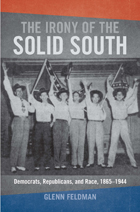 The Irony of the Solid South: Democrats, Republicans, and Race, 1865–1944
Glenn Feldman
University of Alabama Press, 2013 The Irony of the Solid South examines how the south became the “Solid South” for the Democratic Party and how that solidarity began to crack with the advent of American involvement in World War II. Relying on a sophisticated analysis of secondary research—as well as a wealth of deep research in primary sources such as letters, diaries, interviews, court cases, newspapers, and other archival materials—Glenn Feldman argues in The Irony of the Solid South that the history of the solid Democratic south is actually marked by several ironies that involve a concern with the fundamental nature of southern society and culture and the central place that race and allied types of cultural conservatism have played in ensuring regional distinctiveness and continuity across time and various partisan labels. Along the way, this account has much to say about the quality and nature of the New Deal in Dixie, southern liberalism, and its fatal shortcomings. Feldman focuses primarily on Alabama and race but also considers at length circumstances in the other southern states as well as insights into the uses of emotional issues other than race that have been used time and again to distract whites from their economic and material interests. Feldman explains how conservative political forces (Bourbon Democrats, Dixiecrats, Wallace, independents, and eventually the modern GOP) ingeniously fused white supremacy with economic conservatism based on the common glue of animus to the federal government. A second great melding is exposed, one that joined economic fundamentalism to the religious kind along the shared axis of antidemocratic impulses. Feldman’s study has much to say about southern and American conservatism, the enduring power of cultural and emotional issues, and the modern south’s path to becoming solidly Republican.
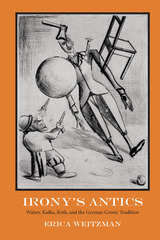 Irony's Antics: Walser, Kafka, Roth, and the German Comic Tradition
Erica Weitzman
Northwestern University Press, 2014 Irony’s Antics marks a major intervention into the underexplored role of the comic and its relationship to irony in German letters.
Combining theoretical breadth with close textual analysis, Erica Weitzman shows how irony, a key term for the German romantics, reemerged in the early twentieth century from a postromantic relegation to the nonsensical and the nihilistic in a way that both rethought romantic irony and dramatically extended its reach.
Through readings of works by Robert Walser, Franz Kafka, and Joseph Roth against the rich history of comic theory (particularly Hegel and Freud), Weitzman traces the development of a specifically comic irony in modern German-language literature and philosophy, a play with the irony that is itself the condition for all play. She thus provides a crucial reevaluation of German literary history and offers new insights into the significance of irony and the comic from the Enlightenment to the present day.
Iroquois Culture History in the Niagara Frontier Area of New York State
Marian E. White
University of Michigan Press, 1961 Marian E. White describes seven Iroquois sites in detail and reports on the archaeological data, including pottery, pipes, and projectile points. She also writes about the ethnohistory and culture history of the Niagara Frontier Region of New York. She concludes with comparisons to sites and cultures surrounding the region.
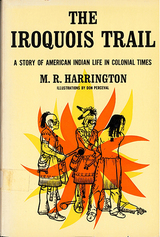 The Iroquois Trail: Dickon among the Onondagas and Senecas
M. R. Harrington
Rutgers University Press, 1965 Thousands of schoolchildren have read the adventures of Dickon, the English boy who was rescued from a shipwreck by the Lenape Indians, told in The Indians of New Jersey by M. R. Harrington. Now they and others can follow Dickon's further adventures in The Iroquois Trail.
As Dickon and his companions travel the Iroquois Trail in search of his Lenape brother, Little-Bear, they learn the ways of the Onondagas, Senecas, Mohawks, Oneidas, and Cayugas. Dickon tells his own story, describing the day-to-day activities in the villages along the trail—their ways of making clothing, weapons, household articles, and ornaments, and how they hunt, cook, travel, and worship. He meets Hiawatha, Deganawide, Jigonsasay, and other Indian leaders. His tale is accompanied by line drawings that vividly portray the art of making baskets, moccasins, bows and arrows, clothing, and other everday articles. These illustrations are done by Don Perceval, a renowned artist and specialist on Indians.
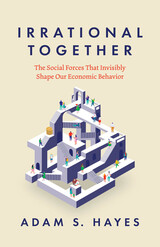 Irrational Together: The Social Forces That Invisibly Shape Our Economic Behavior
Adam S. Hayes
University of Chicago Press, 2025 A must-read that reshapes how we think about the social underpinnings of our financial choices.
In Irrational Together, economic sociologist Adam S. Hayes takes readers on a fascinating journey to uncover the often-unseen social forces that shape our financial behavior. Drawing on original research and engaging real-world examples, Hayes challenges not only the notion that economic decisions are purely rational but also the prevailing behavioral economics view that irrational choices stem primarily from individual beliefs. Instead, he argues that our economic choices and actions are deeply embedded in our social and cultural contexts and that understanding these influences is crucial to fully grasp the complexities of financial decision-making.
From the impact of social class and cultural capital on risk-taking and the role of social networks and group identities in shaping consumer choices to the gendered dimensions of financial advice and literacy, this book weaves together insights from sociology, behavioral economics, and cultural studies to paint a nuanced picture of how we navigate the economic landscape as inherently social beings. Why, for example, would someone choose to continue paying 20% interest on a large credit card debt rather than taking out a low-interest mortgage on their home to pay off the card? As Hayes makes clear through rigorous analysis, cultural values—like those related to home ownership—hold as much or more sway over us than financial best practices.
Bridging the gap between behavioral economics and sociology, this groundbreaking work paves the way for a more holistic understanding of the social and cultural influences on economic behavior. Hayes also looks to the future and argues that to correct major disparities in our social understanding of wealth and money, we need to construct financial systems that consider a diversity of social backgrounds.
With its accessible language and thought-provoking insights, Irrational Together is an essential guide for anyone seeking to understand the intersection of money, society, and human behavior.
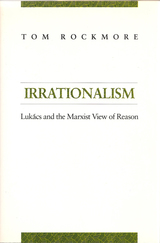 Irrationalism: Lukacs and the Marxist View of Reason
Tom Rockmore
Temple University Press, 1991 This is the first detailed study, following the recent collapse of political Marxism in Eastern Europe, of twentieth-century Hungarian philosopher Georg Lukács and his position as the leading proponent of the Marxist theory of reason. Lukács's History and Class Consciousness has been called one of the three most influential philosophical works of this century, and he, the outstanding Marxist philosopher. Marxism has long suffered relative neglect in philosophical discussion as a result of its own invidious distinction between itself and the supposed irrationality of what it regards as bourgeois philosophy. Tom Rockmore offers a uniquely detailed philosophical analysis of Lukács's entire position as a theory of reason, based on the distinction between reason and unreason, or irrationalism. The author gives special emphasis to Lukács's connection to German neo-Kantianism, particularly Lask, and on his last, unfinished work. Rockmore begins with an account of the roots of Lukács's Marxism, followed by an in-depth analysis of his often mentioned, but still incompletely understood, seminal essay "Reification and the Class Consciousness of the Proletariat." He then traces the evolution and later demise of the distinction between reason and irrationalism in Lukács's final thought. The author thus makes available for the first time in English a strictly philosophical discussion of Georg Lukács's Marxist phase and brings consideration of his thought into the wider philosophical discussion.
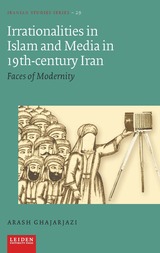 Irrationalities in Islam and Media in Nineteenth-Century Iran: Faces of Modernity
Arash Ghajarjazi
Amsterdam University Press, 2022 This book deals for the first time with the cultural history of media in nineteenth-century Iran, a history that deals with how modern techniques of representation and communication were received in the Iranian Shi.a society. This reception history is examined in religious photography, military reforms, Persian passion plays, Shi.a medicine, and the burgeoning telegraphic culture. The problematic relationship between Sh..a Islam and 19th-century media is conceptualised and contextualised, especially through the lens of the first Polytechnique college (D.r al-Fonun, 1851) in Iran. This college is conceptualised as a media laboratory, where the technological sphere in Iran was fundamentally transforming. It is also contextualised in the age of reform, a period in which the Middle East was undergoing widespread social, political, and military changes. Islamic (art) history, Iranian Studies, and cultural analysis form an interdisciplinary analytic framework to create new knowledge about the historical complexity of 19th-century Iran.
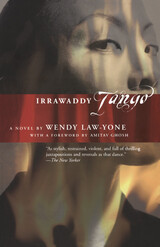 Irrawaddy Tango
Wendy Law-Yone
Northwestern University Press, 2003 A novel of love, vengeance and political unrest in South East Asia
Irrawaddy Tango, a pepper-tongued, tango-dancing Asian beauty rises from a village girlhood to become the wife of her country's dictator and then a leader of the rebel forces arrayed against him. Tango captures the attention of an ambitious colonel --the self-proclaimed Supremo--while dancing at a talent contest. Once married, she is forced to endure the cruelties of a ruthless and foolish husband, is kidnapped by rebel forces, recaptured and brutally punished by her husband's military clique, and eventually exiled to America. Her return to the fictional Republic of Daya (clearly Burma) brings about the destruction of her husband and his dictatorship. Irrawaddy Tango tells the unsettling tale of powerful men and powerless women. It evokes as well the harshness of exile, revealing the misunderstandings between East and West and by doing so captures the intensity of living between the two.
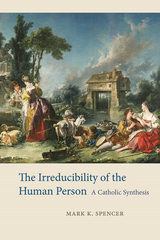 The Irreducibility of the Human Person: A Catholic Synthesis
Mark K. Spencer
Catholic University of America Press, 2022 Catholic philosophical anthropologists have defended views of the human person on which we are irreducible to anything non-personal. For example, it is not the case that we are nothing but matter, souls, or parts of society. But many Catholic anthropologies have overlooked ways in which we are irreducible and so have not given an adequate account of the uniqueness of each human person. This book presents a philosophical portrait of human persons that depicts each way in which we are irreducible, with the goal of guiding the reader to perceive, wonder at, and love all the unique features of human persons. It builds this portrait by showing how claims from many strands of the Catholic tradition can be synthesized. These strands include Thomism, Scotism, phenomenology, personalism, nouvelle théologie, analytic philosophy, and Greek and Russian thought. The book focuses on how these traditions’ claims are grounded in experience and on how they help us to perceive irreducible features of persons. While many metaphysical claims about persons are defended, the picture of persons that ultimately emerges is one on which persons are best grasped not through abstract concepts but through aesthetic perception and love, as unique kinds of beauty.
This book also explores irreducible features of our subjectivity, senses, intellect, freedom, and affections, and of our souls, bodies, and activities. It includes discussions of divine simplicity and causality, and of the nature of angels, matter, organisms, and artifacts, all of which must be understood to fully grasp our irreducibility. In showing how to synthesize various traditions’ claims, the book also offers new solutions to a number of debates in Catholic philosophy. These include debates over natural law, the natural desire to see God, the separated soul, integralism and personalism, idealist and realist phenomenology, and scholastic accounts of the act of existence.
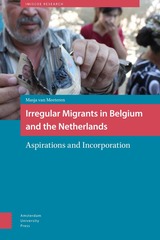 Irregular Migrants in Belgium and the Netherlands: Aspirations and Incorporation
Masja van Meeteren
Amsterdam University Press, 2014 In Irregular Migrants in Belgium and the Netherlands, Masja van Meeteren studies the different ways in which irregular migrants live in Belgium and the Netherlands. The book offers an empirically grounded theoretical critique of the dominant research practice that focuses on 'survival strategies', relies on comparisons of migrant communities and overemphasizes structural explanations. Instead, Irregular Migrants takes irregular migrants´ aspirations as a starting point of analysis.
Based on this innovative research approach, key questions are answered regarding the lives of irregular migrants. How can we understand their patterns of economic and social incorporation, the transnational activities they engage in, and the significance of different forms of capital? Drawing on intensive participant observation, as well as more than two hundred in-depth interviews with irregular migrants and representatives of organizations that are involved with them, Irregular Migrants develops much-needed contextualized insights. As such, it sheds new light on previous research findings and various deadlocked scholarly debates on irregular migrants in Western societies.
 Irresistible Empire: America’s Advance through Twentieth-Century Europe
Victoria de Grazia
Harvard University Press, 2005 The most significant conquest of the twentieth century may well have been the triumph of American consumer society over Europe’s bourgeois civilization. It is this little-understood but world-shaking campaign that unfolds in Irresistible Empire, Victoria de Grazia’s brilliant account of how the American standard of living defeated the European way of life and achieved the global cultural hegemony that is both its great strength and its key weakness today.
De Grazia describes how, as America’s market empire advanced with confidence through Europe, spreading consumer-oriented capitalism, all alternative strategies fell before it—first the bourgeois lifestyle, then the Third Reich’s command consumption, and finally the grand experiment of Soviet-style socialist planning. Tracing the peculiar alliance that arrayed New World salesmanship, statecraft, and standardized goods against the Old World’s values of status, craft, and good taste, Victoria de Grazia follows the United States’ market-driven imperialism through a vivid series of cross-Atlantic incursions by the great inventions of American consumer society. We see Rotarians from Duluth in the company of the high bourgeoisie of Dresden; working-class spectators in ramshackle French theaters conversing with Garbo and Bogart; Stetson-hatted entrepreneurs from Kansas in the midst of fussy Milanese shoppers; and, against the backdrop of Rome’s Spanish Steps and Paris’s Opera Comique, Fast Food in a showdown with advocates for Slow Food. Demonstrating the intricacies of America’s advance, de Grazia offers an intimate and historical dimension to debates over America’s exercise of soft power and the process known as Americanization. She raises provocative questions about the quality of the good life, democracy, and peace that issue from the vaunted victory of mass consumer culture.
Irreverent Persia: Invective, Satirical and Burlesque Poetry from the Origins to the Timurid Period (10th to 15th Century)
Edited by Riccardo Zipoli
Leiden University Press, 2015 Poetry that uses satire, invective, and burlesque to criticize social, political, and cultural life has been a vital part of Persian literature for centuries. This anthology brings together some of the most impressive, important, and, crucially, irreverent poetry from major and minor poets from the earliest days of Persian poetry through the death of Jami in 1492, the moment when the classical era of Persian poetry ended.
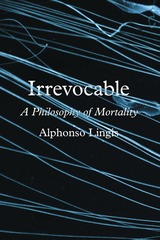 Irrevocable: A Philosophy of Mortality
Alphonso Lingis
University of Chicago Press, 2018 In his latest book, the prolific writer and thinker Alphonso Lingis brings interdisciplinarity and lyrical philosophizing to the weight of reality, the weight of things, and the weight of life itself. Drawing from philosophy, anthropology, psychology, religion, and science, Lingis seeks to uncover what in our reality escapes our attempts at measuring and categorizing. Writing as much from his own experiences and those of others as from his longstanding engagement with phenomenology and existentialism, Irrevocable studies the world in which shadows, reflections, halos, and reverberations count as much as the carpentry of things.
Whether describing religious art and ritual, suffering, war and disease, the pleasures of love, the wonders of nature, archaeological findings, surfing, volcanoes, or jellyfish, Lingis writes with equal measures of rigor and abandon about the vicissitudes of our practices and beliefs. Knowing that birth, the essential encounters in our lives, crippling diseases and accidents, and even death are all determined by chance, how do we recognize and understand such chance? After facing tragedies, what makes it possible to live on while recognizing our irrevocable losses?
Lingis’s investigations are accompanied by his own vivid photographs from around the world. Balancing the local and the global, and ranging across vast expanses of culture and time, Irrevocable sounds the depths of both our passions and our impassioned bodies and minds.
 Irrigation and Society in Medieval Valencia
Thomas F. Glick
Harvard University Press, 1970 Of the communal institutions elaborated by medieval Spaniards, the most significant and longest-lived were the irrigation communities which the Muslims had established centuries earlier in the Valencian region.
The objective of these remarkably democratic communities was justice and equity in water distribution; and the irrigators succeeded in combining traditional rules with consensual authority to maintain their systems with a minimum of conflict. Above the community level, however, regional powers including king, nobles, church, and town all sought to derive, at each other's expense, the maximum benefit from the available water supply. The resultant interplay of power politics was a sharp contrast to the democracy of the communities.
Thomas F. Glick has drawn on original documents of the fourteenth and fifteenth centuries to present in this volume a thorough and lively study of Valencian irrigation and society. In Part One Glick describes medieval Valencian irrigation in the epoch of its fullest documentation (1238-4500), focusing on the institutional dynamics of both the local irrigation communities--those irrigating from a single main canal--and the larger regional units, the huertas. He examines the huerta environment and the administration of the irrigation communities and then discusses intracommunity conflict, the city's role in irrigation development, the search for new sources of water, and regional arrangements for irrigation.
Part Two is concerned generally with the spread of Islamic irrigation technology and, more specifically, with cultural diffusion and the persistence of cultural forms during the transition in Spain from Islamic to Christian rule. Here the author examines the antecedents of medieval Valencian irrigation on the basis of Islamic survivals in medieval Christian institutions and of comparative data from other Islamic irrigation systems. He also touches on aspects of acculturation and cultural transition that extend beyond the geographical and temporal bounds of this study, explaining that "the history of Spanish irrigation is but one example of the administrative creativity and genius for cultural synthesis which characterized Iberian culture at the dawn of themodern age."
Irrigation and the Cuicatec Ecosystem: A Study of Agriculture and Civilization in North Central Oaxaca
Joseph W. Hopkins III
University of Michigan Press, 1984 In this volume, Joseph W. Hopkins III reconstructs the history of the Cuicatec region in Oaxaca, Mexico, from the Aztec empire through the Spanish conquest and into the twentieth century. Hopkins also discusses the archaeology of the region with a particular focus on irrigation systems and agriculture. From 1968 to 1970, Hopkins conducted an archaeological survey and limited excavation in this region, and he presents the results of that fieldwork here.
Irrigation's Impact on Society
Edited by Theodore E. Downing and McGuire Gibson
University of Arizona Press, 1974 The Anthropological Papers of the University of Arizona is a peer-reviewed monograph series sponsored by the School of Anthropology. Established in 1959, the series publishes archaeological and ethnographic papers that use contemporary method and theory to investigate problems of anthropological importance in the southwestern United States, Mexico, and related areas.
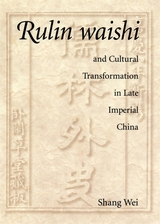 Rulin waishi and Cultural Transformation in Late Imperial China
Wei Shang
Harvard University Press, 2003 Rulin waishi (The Unofficial History of the Scholars) is more than a landmark in the history of the Chinese novel. This eighteenth-century work, which was deeply embedded in the intellectual and literary discourses of its time, challenges the reader to come to grips with the mid-Qing debates over ritual and ritualism, and the construction of history, narrative, and lyricism. Wu Jingzi's (1701–54) ironic portrait of literati life was unprecedented in its comprehensive treatment of the degeneration of mores, the predicaments of official institutions, and the Confucian elite's futile struggle to reassert moral and cultural authority. Like many of his fellow literati, Wu found the vernacular novel an expressive and malleable medium for discussing elite concerns.
Through a close reading of Rulin waishi, Shang Wei seeks to answer such questions as What accounts for the literati's enthusiasm for writing and reading novels? Does this enthusiasm bespeak a conscious effort to develop a community of critical discourse outside the official world? Why did literati authors eschew publication? What are the bases for their social and cultural criticisms? How far do their criticisms go, given the authors' alleged Confucianism? And if literati authors were interested solely in recovering moral and cultural hegemony for their class, how can we explain the irony found in their works?
Irvin S. Cobb
Anita Lawson
University of Wisconsin Press The story of Irvin S. Cobb is a fascinating one for many reasons. His life was not unusual at the time: a Horatio Alger rise from poor boy to world authority through hard work. Associate of celebrities of all kinds for two decades, he died in Hollywood virtually forgotten, having outlived the world he grew up in and which appreciated him.
Irving Wallace: A Writer's Profile
John Leverence
University of Wisconsin Press, 1974 This profile of the man and the writer is an introduction to the personality behind The Chapman Report and The Fan Club. Through correspondence, diaries, manuscript annotations, interviews and other private sources, the profile reveals the man who began as a sports stringer for a Wisconsin newspaper and is now one of the world's most popular novelists.
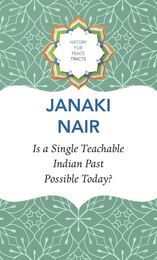 Is a Single Teachable Indian Past Possible Today?
Janaki Nair
Seagull Books, 2024 An accessible contribution to the ongoing discussion about the quality and politics of social science textbooks in India.
More than ever before, the school history textbook in India has become an embattled object and the subject of many contestations from both above and below. It is vulnerable not only to the political vagaries of governments but also to the exclusive claims of myriad communities and groups to their sense of the past. What is the future of India’s textbook, arguably the most important repository of the country’s national past? Is a single teachable past even possible any longer?
In this essay, Janaki Nair uses the Indian predicament to discuss the possibility of building up a “historical temper” in the Indian classroom. Sharing examples from her unique position as a professional historian with sustained experience in the field of pedagogy, Nair invites reflections on the prospect of cultivating a historical temper that can help the teacher equip students to grapple with history.
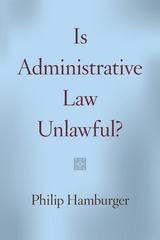 Is Administrative Law Unlawful?
Philip Hamburger
University of Chicago Press, 2014 Is administrative law unlawful? This provocative question has become all the more significant with the expansion of the modern administrative state. While the federal government traditionally could constrain liberty only through acts of Congress and the courts, the executive branch has increasingly come to control Americans through its own administrative rules and adjudication, thus raising disturbing questions about the effect of this sort of state power on American government and society.
With Is Administrative Law Unlawful?, Philip Hamburger answers this question in the affirmative, offering a revisionist account of administrative law. Rather than accepting it as a novel power necessitated by modern society, he locates its origins in the medieval and early modern English tradition of royal prerogative. Then he traces resistance to administrative law from the Middle Ages to the present. Medieval parliaments periodically tried to confine the Crown to governing through regular law, but the most effective response was the seventeenth-century development of English constitutional law, which concluded that the government could rule only through the law of the land and the courts, not through administrative edicts. Although the US Constitution pursued this conclusion even more vigorously, administrative power reemerged in the Progressive and New Deal Eras. Since then, Hamburger argues, administrative law has returned American government and society to precisely the sort of consolidated or absolute power that the US Constitution—and constitutions in general—were designed to prevent.
With a clear yet many-layered argument that draws on history, law, and legal thought, Is Administrative Law Unlawful? reveals administrative law to be not a benign, natural outgrowth of contemporary government but a pernicious—and profoundly unlawful—return to dangerous pre-constitutional absolutism.
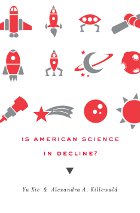 Is American Science in Decline?
Yu Xie and Alexandra A. Killewald
Harvard University Press, 2012 Alarmists argue that the United States urgently needs more and better-trained scientists to compete with the rest of the world. Their critics counter that, far from facing a shortage, we are producing a glut of young scientists with poor employment prospects. Both camps have issued reports in recent years that predict the looming decline of American science. Drawing on their extensive analysis of national data sets, Yu Xie and Alexandra Killewald have welcome news to share: American science is in good health.
Is American Science in Decline? does reveal areas of concern, namely scientists’ low earnings, the increasing competition they face from Asia, and the declining number of doctorates who secure academic positions. But the authors argue that the values inherent in American culture make the country highly conducive to science for the foreseeable future. They do not see globalization as a threat but rather a potential benefit, since it promotes efficiency in science through knowledge-sharing. In an age when other countries are catching up, American science will inevitably become less dominant, even though it is not in decline relative to its own past. As technology continues to change the American economy, better-educated workers with a range of skills will be in demand. So as a matter of policy, the authors urge that science education not be detached from general education.
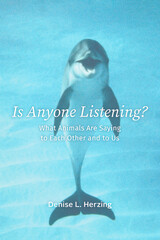 Is Anyone Listening?: What Animals Are Saying to Each Other and to Us
Denise L. Herzing
University of Chicago Press, 2024 From a leading researcher on dolphin communication, a deep dive into the many ways animal species communicate with their kin, their neighboring species, and us.
If you could pose one question to a dolphin, what would it be? And what might a dolphin ask you? For forty years, researcher and author Denise L. Herzing has investigated these and related questions of marine mammal communication. With the assistance of a friendly community of Atlantic spotted dolphins in the Bahamas, Herzing studies two-way communication between different dolphin species and between humans and dolphins using a variety of cutting-edge experiments. But the dolphins are not the only ones talking, and in this wide-ranging and accessible book, Herzing explores the astonishing realities of interspecies communication, a skill that humans currently lack.
Is Anyone Listening? connects research on dolphin communication to findings from Jane Goodall on chimpanzees, Dian Fossey on mountain gorillas, Cynthia Moss on African elephants, and others driving today’s exploration of possible animal languages. Although humans have long attempted to crack animal communication codes, only now do we have the advanced machine-learning tools to help. As Herzing reveals, researchers are finding fascinating hints of language in nonhuman species, including linguistic structures, vowel equivalents, and complex repeated sequences. By looking at the many ways animals use and manipulate signals, we see that we’ve only just begun to appreciate the diversity of animal intelligence and the complicated and subtle aspects of animal communication.
Considering dolphins and other nonhuman animals as colleagues instead of research subjects, Herzing asks us to meet animals as both speakers and listeners, as mutually curious beings, and to listen to what they are saying.
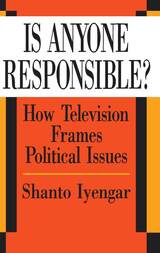 Is Anyone Responsible?: How Television Frames Political Issues
Shanto Iyengar
University of Chicago Press, 1991 A disturbingly cautionary tale, Is Anyone Responsible? anchors with powerful evidence suspicions about the way in which television has impoverished political discourse in the United States and at the same time molds American political consciousness. It is essential reading for media critics, psychologists, political analysts, and all the citizens who want to be sure that their political opinions are their own.
"Not only does it provide convincing evidence for particular effects of media fragmentation, but it also explores some of the specific mechanisms by which television works its damage. . . . Here is powerful additional evidence for those of us who like to flay television for its contributions to the trivialization of public discourse and the erosion of democratic accountability."—William A. Gamson, Contemporary Sociology
"Iyengar's book has substantial merit. . . . [His] experimental methods offer a precision of measurement that media effects research seldom attains. I believe, moreover, that Iyengar's notion of framing effects is one of the truly important theoretical concepts to appear in recent years."—Thomas E. Patterson, American Political Science Review
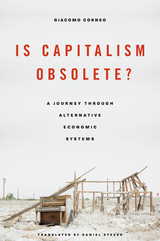 Is Capitalism Obsolete?: A Journey through Alternative Economic Systems
Giacomo Corneo
Harvard University Press, 2017 After communism collapsed in the former Soviet Union, capitalism seemed to many observers like the only game in town, and questioning it became taboo for academic economists. But the financial crisis, chronic unemployment, and the inexorable rise of inequality have resurrected the question of whether there is a feasible and desirable alternative to capitalism. Against this backdrop of growing disenchantment, Giacomo Corneo presents a refreshingly antidogmatic review of economic systems, taking as his launching point a fictional argument between a daughter indignant about economic injustice and her father, a professor of economics.
Is Capitalism Obsolete? begins when the daughter’s angry complaints prompt her father to reply that capitalism cannot responsibly be abolished without an alternative in mind. He invites her on a tour of tried and proposed economic systems in which production and consumption obey noncapitalistic rules. These range from Plato’s Republic to diverse modern models, including anarchic communism, central planning, and a stakeholder society. Some of these alternatives have considerable strengths. But daunting problems arise when the basic institutions of capitalism—markets and private property—are suppressed. Ultimately, the father argues, all serious counterproposals to capitalism fail to pass the test of economic feasibility. Then the story takes an unexpected turn. Father and daughter jointly come up with a proposal to gradually transform the current economic system so as to share prosperity and foster democratic participation.
An exceptional combination of creativity and rigor, Is Capitalism Obsolete? is a sorely needed work about one of the core questions of our times.
Is Feminist Philosophy Philosophy?
Emanuela Bianchi
Northwestern University Press, 1999 Drawing attention to the vexed relationship between feminist theory and philosophy, Is Feminist Philosophy Philosophy? demonstrates the spectrum of significant work being done at this contested boundary. The volume offers clear statements by seventeen distinguished scholars as well as a full range of philosophical approaches; it also presents feminist philosophers in conversation both as feminists and as philosophers, making the book accessible to a wide audience.
Is God The Only Reality: Science Points Deeper Meaning Of Universe
John Marks Templeton
Templeton Press, 2012 The great paradox of science in the twentieth century is that the more we learn, the less we seem to know. In this volume, John Templeton and scientist Robert Herrmann address this paradox. Reviewing the latest findings in fields from particle physics to archaeology, from molecular biology to cosmology, the book leads the reader to see how mysterious the universe is, even to the very science that seeks to reduce it to a few simple principles. Far from concluding that religion and science are in opposition, the book shows how these two fields of inquiry are intimately linked, and how much they can offer to one another. Formerly published by Continuum in 1994.
 Is He Out There?: Debating "The God Delusion"
Paul Laffan
Sussex Academic Press, 2023 An examination of Christian arguments against Richard Dawkins.
Is He Out There? is an interdisciplinary examination of the Christian reaction to Richard Dawkins’s The God Delusion. The book considers a wide range of Christian counter-arguments—that Dawkins’s demonstration that God “almost certainly doesn’t exist” addresses an outdated conception of God; that science and religion do not conflict as Dawkins contends, but rather may converge on a shared understanding of how God acts in the universe; that Dawkins’ denigration of the Bible depends on an overly literal reading; and that Dawkins assumes a narrative of progress in which human beings take the place of God in controlling the course of history—and responds to these counter-arguments by drawing on current scientific understanding, biblical criticism, and philosophy. The author suggests the desire to meet the challenge posed by Dawkins has led Dawkins’s opponents to pervert scientific theories and accepted positions in other important fields of inquiry while also considering the extent to which apparently secular moral values like tolerance and freedom of opinion are Christian in source and require God to underwrite them. Is He Out There? not only provides a review of the state of contemporary Christian apology, but also a measured address of Dawkins’s arguments in The God Delusion and a substantive commentary on Dawkins’s thesis.
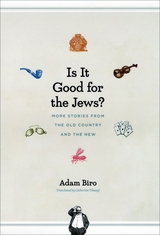 Is It Good for the Jews?: More Stories from the Old Country and the New
Adam Biro
University of Chicago Press, 2009 “Jewish stories,” writes Adam Biro, “resemble every people’s stories.” Yet at the same time there is no better way to understand the soul, history, millennial suffering, or, crucially, the joys of the Jewish people than through such tales—“There’s nothing,” writes Biro, “more revelatory of the Jewish being.” With Is It Good for the Jews? Biro offers a sequel to his acclaimed collection of stories Two Jews on a Train. Through twenty-nine tales—some new, some old, but all finely wrought and rich in humor—Biro spins stories of characters coping with the vicissitudes and reverses of daily life, while simultaneously painting a poignant portrait of a world of unassimilated Jewish life that has largely been lost to the years. From rabbis competing to see who is the most humble, to the father who uses suicide threats to pressure his children into visiting, to three men berated by the Almighty himself for playing poker, Biro populates his stories with memorable characters and absurd—yet familiar—situations, all related with a dry wit and spry prose style redolent of the long tradition of Jewish storytelling. A collection simultaneously of foibles and fables, adversity and affection, Is It Good for the Jews? reminds us that if in the beginning was the word, then we can surely be forgiven for expecting a punch line to follow one of these days.
 Is It Me or My Meds?: Living with Antidepressants
David A. Karp
Harvard University Press, 2007 By the millennium Americans were spending more than 12 billion dollars yearly on antidepressant medications. Currently, millions of people in the U.S. routinely use these pills. Are these miracle drugs, quickly curing depression? Or is their popularity a sign that we now inappropriately redefine normal life problems as diseases? Are they prescribed too often or too seldom? How do they affect self-images?
David Karp approaches these questions from the inside, having suffered from clinical depression for most of his adult life. In this book he explores the relationship between pills and personhood by listening to a group of experts who rarely get the chance to speak on the matter--those who are taking the medications. Their voices, extracted from interviews Karp conducted, color the pages with their experiences and reactions--humor, gratitude, frustration, hope, and puzzlement. Here, the patients themselves articulate their impressions of what drugs do to them and for them. They reflect on difficult issues, such as the process of becoming committed to medication, quandaries about personal authenticity, and relations with family and friends.
The stories are honest and vivid, from a distraught teenager who shuns antidepressants while regularly using street drugs to a woman who still yearns for a spiritual solution to depression even after telling intimates "I'm on Prozac and it's saving me." The book provides unflinching portraits of people attempting to make sense of a process far more complex and mysterious than doctors or pharmaceutical companies generally admit.
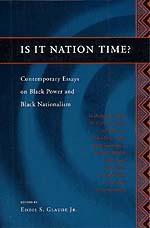 Is It Nation Time?: Contemporary Essays on Black Power and Black Nationalism
Edited by Eddie S. Glaude Jr.
University of Chicago Press, 2002 During the late 1960s and early 1970s, the Black Power movement provided the dominant ideological framework through which many young, poor, and middle-class blacks made sense of their lives and articulated a political vision for their futures. The legacy of the movement is still very much with us today in the various strands of black nationalism that originated from it; we witnessed its power in the 1995 Million Man March, and we see its more ambiguous effects in the persistent antagonisms among former participants in the civil rights coalition. Yet despite the importance of the Black Power movement, very few in-depth, balanced treatments of it exist.
Is It Nation Time? gathers new and classic essays on the Black Power movement and its legacy by renowned thinkers who deal rigorously and unsentimentally with such issues as the commodification of blackness, the piety of cultural recovery, and class tensions within the movement. For anyone who wants to understand the roots of the complex political and cultural desires of contemporary black America, this will be an essential collection.
Contributors:
Eddie S. Glaude Jr.
Farah Jasmine Griffin
Phillip Brian Harper
Gerald Horne
Robin D. G. Kelley
Wahneema Lubiano
Adolph Reed Jr.
Jeffrey Stout
Will Walker
S. Craig Watkins
Cornel West
E. Francis White
Is It Sexual Harassment Yet?
Cris Mazza
University of Alabama Press, 1991 Back in print with a preface by Allan Kornblum and a new introduction by Pamela Caughe.
These stories convey a powerful, convincing sense of the bewilderment and excitement of sexual desires. Mazza describes a world that resembles a shopping mall gone mad, populated by ordinary, normal people behaving in ways that mock the very concept of normality. By describing these lives with an acute sense of the absurd, Mazza produces a dark, sometimes hilarious comedy that undercuts the shaky compromise of the consensus we call reality.
Is It Still Good to Ya?: Fifty Years of Rock Criticism, 1967-2017
Robert Christgau
Duke University Press, 2018 Is It Still Good to Ya? sums up the career of longtime Village Voice stalwart Robert Christgau, who for half a century has been America's most widely respected rock critic, honoring a music he argues is only more enduring because it's sometimes simple or silly. While compiling historical overviews going back to Dionysus and the gramophone along with artist analyses that range from Louis Armstrong to M.I.A., this definitive collection also explores pop's African roots, response to 9/11, and evolution from the teen music of the '50s to an art form compelled to confront mortality as its heroes pass on. A final section combines searching obituaries of David Bowie, Prince, and Leonard Cohen with awed farewells to Bob Marley and Ornette Coleman.
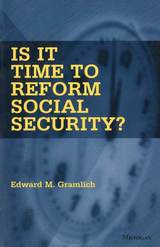 Is It Time to Reform Social Security?
Edward M. Gramlich
University of Michigan Press, 2000 Social Security is now the federal government's largest, and probably its most popular, program. It has performed well and grown hugely over the twentieth century, with the trust fund that pays benefits generally being kept financially solvent and paying people a decent return on their contributions.
But all of that could change, with the slowdown in fertility, longer life expectancies, and slower economic growth expected for the twenty-first century. Now it looks as though a continuation of the present system will entail progressively higher payroll tax rates and progressively lower rates of return on people's contributions, especially for younger Americans.
Edward M. Gramlich, who chaired the Social Security Advisory Council that concluded its two-and-a- half-year investigation in January 1997, believes there is just one way to preserve the main social protections of Social Security while still restoring its financial affordability. This approach involves moving to more advanced funding of future benefit costs.Gramlich argues for a sensible way to bring about such a change, by combining modest curbs on the future growth of benefits with mandatory saving accounts on top of Social Security. The combination cuts the future growth in pension spending, restores the finances of the trust fund, and makes Social Security benefits affordable to the nation as a whole.
The book also reviews some prominent Social Security-type program reform efforts also underway in other parts of the world. It shows how the type of Social Security reform suggested above compares favorably to the reforms now being undertaken in countries such as the United Kingdom, Australia, and Chile.
Written in an accessible and engaging style, the book is a must-read for all people who wish to be well informed about Social Security reform, the outcome of which will affect all U.S. citizens, how we view and save for our future, and how we will live once we retire.
"Social security is one of the most talked about economic and social policy issues of the decade. Almost everybody knows something about it, but few of us know what should be done to keep it solvent and sufficient. In plain language, Gramlich lays out the issues and explains the options. Is It Time to Reform Social Security? will be an informative guide for the concerned public and a valued reference for responsible policy makers." --Lana Pollack, President of the Michigan Environmental Council and former Michigan State Representative
". . . a clear, concise, nontechnical overview of Social Security and its future funding problems by a very knowledgeable and well-respected analyst. Gramlich discusses a wide range of reform options, drawn from both home and abroad. His own proposal, to 'mend it rather than end it,' is an attractive compromise between those who prefer as little reform as possible, and thos who want to change fundamentally a system that has worked well for sixty years." --Joseph Quinn, Boston College
Edward M. Gramlich is Professor of Economics and Dean of the School of Public Policy, University of Michigan.
 Is Milton Better than Shakespeare?
Nigel Smith
Harvard University Press, 2008 With literature waning in the interest of so many, is Shakespeare the only poet the public can still appreciate? John Milton, as this book makes clear, speaks more powerfully to the eternal questions and to the important concerns of our time. The Milton of this volume is an author for all Americans—conservative, liberal, radical—not only because he was a favorite of the founding fathers, his voice echoing through their texts and our very foundation, but also because his visionary writing embodies the aspirations that have guided Americans seeking ideals of ethical and spiritual perfection.
Nigel Smith makes a compelling case for Milton’s relevance to our present situation. In direct and accessible terms, he shows how the seventeenth-century poet, while working to write the greatest heroic poem in the English language, also managed to theorize about religious, political, and civil liberty in ways that matter as much today as they did in Puritanical times. Through concise chapters that chart Milton’s life at the center of the English and European literary and political scenes—as well as his key themes of free will, freedom and slavery, love and sexual liberty, the meaning of creation, and the nature of knowledge—Smith’s work brings Milton, his poetry, and his prose home to readers of our day. A provocative and enlightening introduction, for newcomers and informed readers alike, this book rediscovers and redefines Milton for a new generation, one that especially needs and deserves to know him.
 Is NAFTA Constitutional?
Bruce Ackerman and David Golove
Harvard University Press, 1995 By a vote of 61 to 38, the Senate joined the House in declaring that "Congress approves...the North American Free Trade Agreement." The vote was virtually unnoticed, since the real battle over NAFTA was in the House. But there is a puzzle here. The President, the Framers assure us, "shall have Power, by and with the Advice and Consent of the Senate, to make Treaties, provided two thirds of the Senators present concur." Whatever happened to the Treaty Clause?
Bruce Ackerman and David Golove tell the story of the Treaty Clause's being displaced in the twentieth century by a modern procedure in which the House of Representatives joins the Senate in the process of consideration, but simple majorities in both Houses suffice to commit the nation. This is called the Congressional-Executive Agreement, and is a response to a sea change in public opinion during and after World War II.
This agreement substituted for a failed constitutional amendment that would have required all treaties to be approved by majorities in both Houses rather than by two-thirds of the Senate. The modern Congressional-Executive Agreement was self-consciously developed in order to make formal constitutional amendment unnecessary. So, is NAFTA constitutional?
This book is reprinted from the Harvard Law Review.
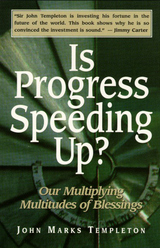 Is Progress Speeding Up: Multiplying Multitudes Of Blessings
John Marks Templeton
Templeton Press, 1998 This book is a thought-provoking view of the progress of humankind in the last century. In spite of the pessimism that prevails in the media, people are better fed, better clothed, better housed, and better educated than at any previous time. The facts within the book provide documentation for a positive outlook toward our nutrition and health, living standards and working conditions, political and economic freedoms, educational facilities, ability to communicate, ease of movement, increasing leisure, and, most important, our ability to get along with one another and with our Creator. The statistics, charts, and photographs that illustrate this book enhance the reassuring and uplifting view of the state of the world and where it is going. “His analysis gives us a refreshing balance to the negative, sometimes cynical, views in the media that tend to portray the worst rather than the best in human civilization.” —Jimmy Carter “After reading Sir John Templeton's latest book, I believe more than ever that we are living in the most exciting time in history. Despite the challenges we face, his demonstration of mankind's progress gives all of us great hopes and high expectations for our next century and the new millennium.” —Jack Kemp, former HUD secretary, director of Empower America
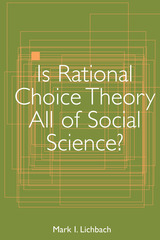 Is Rational Choice Theory All of Social Science?
Mark I. Lichbach
University of Michigan Press, 2003 Advocates of rational choice theory in political science have been perceived by their critics as attempting to establish an intellectual hegemony in contemporary social science, to the detriment of alternative methods of research. The debate has gained a nonacademic audience, hitting the pages of the New York Times and the New Republic. In the academy, the antagonists have expressed their views in books, journal articles, and at professional conferences.
Mark I. Lichbach addresses the question of the place of rational choice theory in the social sciences in general and in political science in particular. He presents a typology of the antagonists as either rationalist, culturalist, or structuralist and offers an insightful examination of the debate. He reveals that the rationalist bid for hegemony and synthesis is rooted in the weaknesses, not the strengths, of rationalist thought. He concludes that the various theoretical camps are unlikely to accept the claimed superiority of the rationalist approach but that this opposition is of value in itself to the social sciences, which requires multiple perspectives to remain healthy.
With its penetrating examination of the assumptions and basic arguments of each of the sides to this debate, this book cuts through the partisan rhetoric and provides an essential roadmap for the future of the discipline.
Mark I. Lichbach is Professor of Government and Politics, University of Maryland.
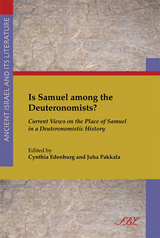 Is Samuel Among the Deuteronomists: Current Views on the Place of Samuel in a Deuteronomistic History
Cynthia Edenburg
SBL Press, 2013 The book of Samuel tells the story of the origins of kingship in Israel in what seems to be an artistically structured, flowing narrative. Yet it is also marked by an inconsistent outlook, divergent styles, and breaks in the narrative. According to Noth’s Deuteronomistic History hypothesis, the Deuteronomistic historian constructed the narrative by piecing together early sources and generally refrained from commenting in his own voice. Recent studies have called into question the extent of Samuel’s sources and their redaction history, as well as the textual growth of the book as a whole. The essays in this book, representing the latest scholarship on this subject, reexamine whether the book of Samuel was ever part of a Deuteronomistic History. The contributors are A. Graeme Auld, Hannes Bezzel, Philip R. Davies, Walter Dietrich, Cynthia Edenburg, Jeremy M. Hutton, Jürg Hutzli, Ernst Axel Knauf, Reinhard Müller, Richard D. Nelson, Christophe Nihan, K. L. Noll, Juha Pakkala, and Jacques Vermeylen.
Is Social Security Broke?: A Cartoon Guide to the Issues
Barbara R. Bergmann and Jim Bush
University of Michigan Press, 2000 A funny, smart, and engaging book on Social Security? You bet! Let Bill and Betty Boomer, their parents Ed and Ethel Elderly, and the young married Steve and Sue Sprout take you through the thickets of this thorny issue. You will come to understand why people are so worried about Social Security, how it operates, how we can keep it going, the problems we would face under a privatized system, and why Americans have always chosen to shore up this important program. You will learn about the system and the current debates surrounding it--and find yourself enjoying it at the same time.
Barbara R. Bergmann is Professor Emerita, University of Maryland and The American University. Jim Bush is the editorial cartoonist for the Providence Journal.
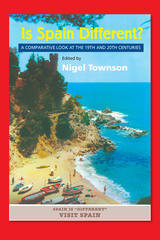 Is Spain Different?: A Comparative Look at the 19th and 20th Centuries
Edited by Nigel Townson
Sussex Academic Press, 2022 For the country of Spain, the slogan that launched the tourist industry in the 1960s, "Spain is different," has come to haunt historians. Since then, much effort and energy have been expended in endeavoring to show that Spain has not been 'different,' but is actually 'normal.' Still, many of the defining features of the Spain's past - the civil wars, the weak liberalism, the Franco dictatorship - are taken as evidence of its distinctiveness. A related problem is that few historians have actually placed Spain's trajectory over the last two centuries within a truly comparative context. This book does so by tackling a number of key themes in modern Spanish history: liberalism, nationalism, anti-clericalism, the Second Republic, the Franco dictatorship, and the transition to democracy. Is Spain Different? thereby offers a fresh and stimulating perspective on Spain's recent past and also sheds new light on the current political debates regarding Spain's place in the world. (Series: Sussex Studies in Spanish History)
Is St. Thomas’s Aristotelian Philosophy of Nature Obsolete?
C. Robert Koons
St. Augustine's Press, 2022 “The Analytic Thomist,” Rob Koons, delivered the 2021 Aquinas Lecture at the University of Dallas. Here he engages the possibility of a bridge between philosophy and metaphysics proper. Koons boldly lays out his position: without Aristotelian metaphysics, there is no Aristotelian philosophy of nature, and there is no philosophy of nature in Aristotle without acknowledging his natural science. His lecture thus challenges Thomists and their respective approaches to hylomorphism and their all too frequent quickness to discard it. (Koons lays down the gauntlet. if one denies hylomorphism there can be no transubstantiation!)
A bonus addition to this volume in the Dallas lecture series is Koon's “Aristotle, god and the Quantum.”
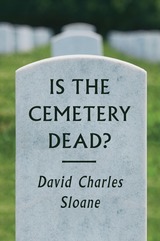 Is the Cemetery Dead?
David Charles Sloane
University of Chicago Press, 2018 In modern society, we have professionalized our care for the dying and deceased in hospitals and hospices, churches and funeral homes, cemeteries and mausoleums to aid dazed and disoriented mourners. But these formal institutions can be alienating and cold, leaving people craving a more humane mourning and burial process. The burial treatment itself has come to be seen as wasteful and harmful—marked by chemicals, plush caskets, and manicured greens. Today’s bereaved are therefore increasingly turning away from the old ways of death and searching for a more personalized, environmentally responsible, and ethical means of grief.
Is the Cemetery Dead? gets to the heart of the tragedy of death, chronicling how Americans are inventing new or adapting old traditions, burial places, and memorials. In illustrative prose, David Charles Sloane shows how people are taking control of their grief by bringing their relatives home to die, interring them in natural burial grounds, mourning them online, or memorializing them streetside with a shrine, ghost bike, or RIP mural. Today’s mourners are increasingly breaking free of conventions to better embrace the person they want to remember. As Sloane shows, these changes threaten the future of the cemetery, causing cemeteries to seek to become more responsive institutions.
A trained historian, Sloane is also descendent from multiple generations of cemetery managers and he grew up in Syracuse’s Oakwood Cemetery. Enriched by these experiences, as well as his personal struggles with overwhelming grief, Sloane presents a remarkable and accessible tour of our new American way of death.
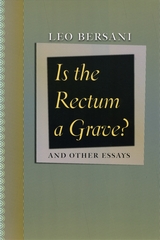 Is the Rectum a Grave?: and Other Essays
Leo Bersani
University of Chicago Press, 2009 Over the course of a distinguished career, critic Leo Bersani has tackled a range of issues in his writing, and this collection gathers together some of his finest work. Beginning with one of the foundations of queer theory—his famous meditation on how sex leads to a shattering of the self, “Is the Rectum a Grave?”—this volume charts the inspired connections Bersani has made between sexuality, psychoanalysis, and aesthetics. Over the course of these essays, Bersani grapples with thinkers ranging from Plato to Descartes to Georg Simmel. Foucault and Freud recur as key figures, and although Foucault rejected psychoanalysis, Bersani contends that by considering his ideas alongside Freud’s, one gains a clearer understanding of human identity and how we relate to one another. For Bersani, art represents a crucial guide for conceiving new ways of connecting to the world, and so, in many of these essays, he stresses the importance of aesthetics, analyzing works by Genet, Caravaggio, Proust, Almodóvar, and Godard. Documenting over two decades in the life of one of the best minds working in the humanities today, Is the Rectum a Grave? and Other Essays is a unique opportunity to explore the fruitful career of a formidable intellect.
 Is There a Measure on Earth?: Foundations for a Nonmetaphysical Ethics
Werner Marx
University of Chicago Press, 1987 The search for an ethics rooted in human experience is the crux of this deeply compassionate work, here translated from the 1983 German edition. Distinguished philosopher Werner Marx provides a close reading, critique, and Weiterdenken, or "further thinking," of Martin Heidegger's later work on death, language, and poetry, which has often been dismissed as both obscure and obscurantist. In it Marx seeks, and perhaps finds, both a measure for distinguishing between good and evil and a motive for preferring the former.
The poet Hölderlin posed the question, "Is there a measure on earth?" His own answer was emphatic, "There is none," for he was convinced that the measure for man was to be found only in the domain of the heavenly beings. Such metaphysical assumptions, as well as the attempt to found ethical conduct in the nature of man as a rational being, have been rejected by many contemporary thinkers, particularly Heidegger. Yet these thinkers have not been able to provide a satisfactory alternative to metaphysical foundations of the standards for responsible human conduct.
Marx, therefore, goes beyond Heidegger in demonstrating how several of his most basic notions could be relevant to a secular morality in our age. It is death, Marx claims, that unsettles man and transforms his conduct toward his fellow man. the common experience of mortality nourishes ethical life—and leads to the measures of compassion, love, and recognition of one's fellow human beings.
"It is only on the basis of these 'traditional virtues,'" Marx writes, "that we can find a motive for averting the impending dangers which have often enough been described so vividly and convincingly."
 Is There a Text in This Class?: The Authority of Interpretive Communities
Stanley Fish
Harvard University Press, 1982 Stanley Fish is one of America’s most stimulating literary theorists. In this book, he undertakes a profound reexamination of some of criticism’s most basic assumptions. He penetrates to the core of the modern debate about interpretation, explodes numerous misleading formulations, and offers a stunning proposal for a new way of thinking about the way we read.
Fish begins by examining the relation between a reader and a text, arguing against the formalist belief that the text alone is the basic, knowable, neutral, and unchanging component of literary experience. But in arguing for the right of the reader to interpret and in effect create the literary work, he skillfully avoids the old trap of subjectivity. To claim that each reader essentially participates in the making of a poem or novel is not, he shows, an invitation to unchecked subjectivity and to the endless proliferation of competing interpretations. For each reader approaches a literary work not as an isolated individual but as part of a community of readers. “Indeed,” he writes, “it is interpretive communities, rather than either the text or reader, that produce meanings.”
The book is developmental, not static. Fish at all times reveals the evolutionary aspect of his work—the manner in which he has assumed new positions, altered them, and then moved on. Previously published essays are introduced by headnotes which relate them to the central notion of interpretive communities as it emerges in the final chapters. In the course of refining his theory, Fish includes rather than excludes the thinking of other critics and shows how often they agree with him, even when he and they may appear to be most dramatically at odds. Engaging, lucid, provocative, this book will immediately find its place among the seminal works of modern literary criticism.
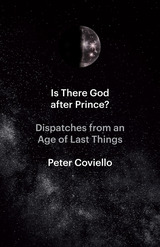 Is There God after Prince?: Dispatches from an Age of Last Things
Peter Coviello
University of Chicago Press, 2023 Essays considering what it means to love art, culture, and people in an age of accelerating disaster.
This is a book about loving things—books, songs, people—in the shadow of a felt, looming disaster. Through lyrical, funny, heart-wrenching essays, Peter Coviello considers pieces of culture across a fantastic range, setting them inside the vivid scenes of friendship, dispute, romance, talk, and loss, where they enter our lives. Alongside him, we reencounter movies like The Shining, shows like The Sopranos; videos; poems; novels by Sam Lipsyte, Sally Rooney, and Paula Fox; as well as songs by Joni Mitchell, Gladys Knight, Steely Dan, Pavement, and the much-mourned saint of Minneapolis, Prince.
Navigating an overwhelming feeling that Coviello calls “endstrickenness,” he asks what it means to love things in calamitous times, when so much seems to be shambling toward collapse. Balancing comedy and anger, exhilaration and sorrow, Coviello illuminates the strange ways the things we cherish help us to hold on to life and to its turbulent joys. Is There God after Prince? shows us what twenty-first-century criticism can be, and how it might speak to us, in a time of ruin, in an age of “Last Things.”
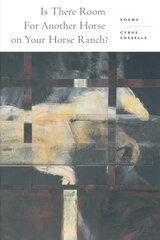 Is There Room for Another Horse on Your Horse Ranch?
Cyrus Cassells
Four Way Books, 2024 Cyrus Cassells has perfected a poetics of merciful vitality and tenderness, celebrating eros — in his daring and prolific representation of lust, yes, but more broadly in his understanding of the erotic as an affirmation and preservation of life — through time and space. Beginning his latest collection with the piece “You Be the Dancer,” he bids us return to sacred sites of nostalgia, insisting on it “whether we’re feeling frisky, / Empty-handed, / Or still beguiled by inchoate dreams—.” Is There Room for Another Horse on Your Horse Ranch? is the apotheosis of Cassells’s work to elevate the mundane and the bodily to the exalted, his vigorous lyrics a routine ecstasy. Though our senses lay us bare to suffering, they also create the possibilities for pleasure and connection, the basis of — and rewards for — humanity. “My Only Bible,” Cassells pledges, “is this blood-red joy / Of breathing beside you,” “The gospel of bougainvillea / At your boyhood gate” which perfumes “the soul’s endless, luxuriant / Coming and becoming…” Gorgeous and wry in its portrayal of transformational romance and queer selfhood, Cassells’s ninth book of poetry reads as an anthology of love letters to people and places across the world. Cassells revises an old premise: is it better to have loved than lost, or is that love, once bestowed, is never lost? A champion of the flight real intimacy requires of us, Cassells addresses a beloved, “You’ve just died in my arms / But suddenly it seems we’re eternal,” the joie de vivre and bravery of his perseverance made immortal through the poem’s titular declaration — “I Believe Icarus Was not Failing as He Fell.” If in these pages you see the crash, the poet seems to say, remember the flying, too, “the giddy Argonauts we were.”
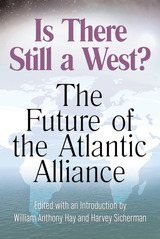 Is There Still a West?: The Future of the Atlantic Alliance
Edited & Intro by William Anthony Hay & Harvey Sicherman
University of Missouri Press, 2007
The international response to the attacks of 9/11 promised a new sense of unity between the United States and its European allies, but subsequent disagreements over Iraq have made the Western alliance seem tentative at best. Is There Still a West? looks beyond recent events to put disagreements within NATO into historical perspective, exploring how cultural, demographic, economic, and military factors since the 1940s have affected future prospects for security cooperation.
As questions underlying the current rift persist, distinguished scholars—Stephen A. Schuker, Michael Radu, Jeremy Black, and others—consider whether that gathering of nations long known as “the West” remains a valid construct. Claiming that differences over Iraq are no greater than past conflicts over Suez, China, or other issues, they adopt a “realist” stance in international relations to offer an alternative to neoconservative and liberal viewpoints. They show what the major issues—and nonissues—really are, and which among them are the true time bombs.
These essays consider a range of relevant topics, from the impact of globalization to emerging differences in the political cultures of North Americans and Europeans to an analysis of headscarf issues among Muslim immigrants. They particularly address the consequences of demographic shifts as Western countries try to deal with growing Muslim communities that present a security and cultural challenge. In proposing possible counterterrorism strategies to define a shared Western security policy, this book considers whether a distinctive Western way of war in fact exists and what it might mean for the alliance.
These insightful essays look beyond transatlantic complaints to probe underlying difficulties, explore sources of conflict, assess prospects for economic divergence, and advocate a workable security policy. Together, they ask readers to consider whether “the West” is still a major force in international affairs or whether we face a new world of competing states and shifting alliances. By addressing these challenges, Is There Still a West? points toward the development of effective policies to ensure the ongoing unity of the West.
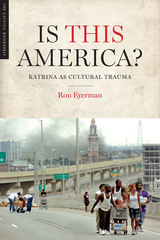 Is This America?: Katrina as Cultural Trauma
By Ron Eyerman
University of Texas Press, 2015 From police on the street, to the mayor of New Orleans and FEMA administrators, government officials monumentally failed to protect the most vulnerable residents of New Orleans and the Gulf Coast during the Katrina disaster. This violation of the social contract undermined the foundational narratives and myths of the American nation and spawned a profound, often contentious public debate over the meaning of Katrina’s devastation. A wide range of voices and images attempted to clarify what happened, name those responsible, identify the victims, and decide what should be done. This debate took place in forums ranging from mass media and the political arena to the arts and popular culture, as various narratives emerged and competed to tell the story of Katrina. Is This America? explores how Katrina has been constructed as a cultural trauma in print media, the arts and popular culture, and television coverage. Using stories told by the New York Times, New Orleans Times-Picayune, Time, Newsweek, NBC, and CNN, as well as the works of artists, writers, musicians, filmmakers, and graphic designers, Ron Eyerman analyzes how these narratives publicly articulated collective pain and loss. He demonstrates that, by exposing a foundational racial cleavage in American society, these expressions of cultural trauma turned individual experiences of suffering during Katrina into a national debate about the failure of the white majority in the United States to care about the black minority.
 Is This Any Way to Run a Democratic Government?
Stephen J. Wayne, Editor
Georgetown University Press, 2004 Has our system of checks and balances between the three branches of our federal government undergone changes for good or ill over the years since the Constitution was set as the cornerstone of our nation? How stand our political traditions, our personal freedoms, our purported equality, our sense of governance "of, by, and for the people"? Are we the democratic nation we set out to be, or do we have a distance to go to achieve this ideal? Alternatively, is approaching a democratic ideal desirable today in the light of the smaller, more integrated, and dangerous world in which we live? Is This Any Way to Run a Democratic Government? examines the theory and practice of American democracy and the dichotomy that currently exists between them. The contributors assess both the reasons—and the consequences—of this division between the theory of democracy and how it is played out in actuality. Focusing on the here and now, this book is about the institutions, process, and politics of government: how well they work; whether they meet the criteria for a viable democratic system; and the extent to which they contribute to good public policy. As we begin the 21st century, with rancorous political partisanship and threats to domestic security and tranquility at an all-time high, Is This Any Way to Run a Democratic Government? asks us to think seriously about the state of our much-heralded democracy, and whether or not our political system can respond to the pressing needs of a new era without jeopardizing the basic values and beliefs that underlie its very foundation.
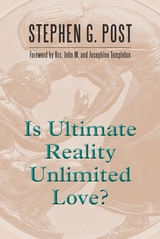 Is Ultimate Reality Unlimited Love?
Stephen G. Post
Templeton Press, 2014 This book draws from previously unpublished letters and interviews with physicists, theologians, and Sir John’s close associates and family to present Sir John’s ideas on pure unlimited love. Post, who was in dialogue with Sir John for fifteen years on this topic and who had founded the Institute for Research on Unlimited Love ( www.unlimitedloveinstitute.com), addresses how John Templeton arrived at his philosophy as a youth growing up in Tennessee. Post also shares how classical Presbyterian ideas came to synergize in his mind with the more Eastern influences of American transcendentalism and the Unity School of Christianity and ponders if Sir John truly believed that science and spirituality might fully converge on the same view of Ultimate Reality with their very different ways of knowing. Is Ultimate Reality Unlimited Love? presents Sir John’s hope for spiritual progress with the eventual convergence of ultimate reality and unlimited love.
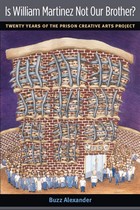 Is William Martinez Not Our Brother?: Twenty Years of the Prison Creative Arts Project
Buzz Alexander
University of Michigan Press, 2010 Praise for the Prison Creative Arts Project: "I cannot overstate how profoundly my experience with the Prison Creative Arts Project has shaped my life. It began my engagement with prison issues, developed both my passion and my understanding of them, and I continue to draw on both as I seek to contribute to a more rational, humane and just criminal justice system. PCAP prepared me to adapt to any situation, to take risks, to collaborate with people very different from myself in a manner infused with total respect."
---Jesse Jannetta, researcher, Justice Policy Center, the Urban Institute "PCAP provided me with an emotional education that I would not have received otherwise. PCAP continually opens the doors to the stark reality of our criminal justice system as well as our society's ability to right the wrongs of that system and provide justice to millions of men, women, and children . . . PCAP showed me the power I, and the individuals around me, have to make a difference."
---Anne Bowles, Policy and Outreach Associate, Institute for Higher Education Policy "PCAP looks beyond past mistakes and personal shortcomings to find the beauty and creative energies that help to heal the hurts we've done to others. They have not forgotten that we are human too! . . . Their program has given me a way to reach people that I would otherwise never reach. For that, I owe PCAP everything. They are my lifeline that I cling to."
---Bryan Picken, incarcerated artist Prisons are an invisible, but dominant, part of American society: the United States incarcerates more people than any other nation in the world. In Michigan, the number of prisoners rose from 3,000 in 1970 to more than 50,000 by 2008, a shift that Buzz Alexander witnessed firsthand when he came to teach at the University of Michigan. Is William Martinez Not Our Brother? describes the University of Michigan's Prison Creative Arts Project (PCAP), a pioneering program founded in 1990 that provides university courses, a nonprofit organization, and a national network for incarcerated youth and adults in Michigan juvenile facilities and prisons. By giving incarcerated individuals an opportunity to participate in the arts, PCAP enables them to withstand and often overcome the conditions and culture of prison, the policies of an incarcerating state, and the consequences of mass incarceration. Buzz Alexander is Arthur F. Thurnau Professor of English Language and Literature, College of Literature, Science, and the Arts, at the University of Michigan and was Carnegie National Professor of the Year in 2005. Cover image: Overcrowded by Ronald Rohn
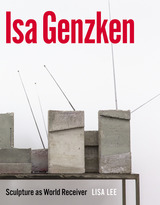 Isa Genzken: Sculpture as World Receiver
Lisa Lee
University of Chicago Press, 2017 The work of German sculptor Isa Genzken is brilliantly receptive to the ever-shifting conditions of modern life. In this first book devoted to the artist, Lisa Lee reflects on Genzken’s tendency to think across media, attending to sculptures, photographs, drawings, and films from the entire span of her four-decade career, from student projects in the mid-1970s to recent works seen in Genzken’s studio.
Through penetrating analyses of individual works as well as archival and interview material from the artist herself, Lee establishes four major themes in Genzken’s oeuvre: embodied perception, architecture and built space, the commodity, and the body. Contextualizing the sculptor’s engagement with fellow artists, such as Joseph Beuys and Bruce Nauman, Lee situates Genzken within a critical and historical framework that begins in politically fraught 1960s West Germany and extends to the globalized present. Here we see how Genzken tests the relevance of the utopian aspirations and formal innovations of the early twentieth century by submitting them to homage and travesty. Sure to set the standard for future studies of Genzken’s work, Isa Genzken is essential for anyone interested in contemporary art.
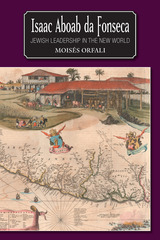 Isaac Aboab da Fonseca: Jewish Leadership in the New World
Moisés Orfali
Sussex Academic Press, 2022 From 1642 to 1654 Isaac Aboab da Fonseca was the hakham (Torah scholar) and spiritual leader of the oldest Jewish community in the New World. As a Hebrew grammarian, poet, and mystic, as well as an excellent and very popular preacher, Aboab da Fonseca (16051693) was not only one of the most interesting Jewish personalities of the seventeenth century, but his writings are an invaluable historical resource with regard to many aspects of Jewish life in Dutch colonial Brazil, the local attitudes toward Jews, and corroboration of events outlined in contemporary literary sources. His forebears were so-called New Christians, having undergone compulsory conversion to Catholicism in Portugal. In order to be able to live freely as professing Jews, in about 1612 the family moved to Amsterdam. In 1638 he was confirmed as one of the four hakhamim of the new congregation Talmud Torah of Amsterdam. In 1641/42 he accepted the nomination for hakham of the growing Jewish community in Recife, Brazil, where he was in charge of all rabbinical functions and gave lectures in Talmud and Hebrew. In the interim he wrote the Hebrew grammar Melekhet ha-Dikduk, published here in translation for the first time. In 1646 he wrote Zekher asiti leniflaot El;, in which he described events in Dutch Brazil during the war. Aboab da Fonseca enjoyed a few prosperous years until the Portuguese rebellion caused the economic ruin of the Jews of Dutch Brazil. His salary much reduced, he nevertheless remained to lead and help his people until the occupation of Recife by Brazilian-Portuguese troops on January 26, 1654. Upon returning to Amsterdam, his inclination toward mysticism made him one of the leading believers in the false messiah Sabbatai Zevi. But his writing and scholarship remained undiminished: he wrote sermons, responsa, judgments, obituaries, songs for inauguration of a synagogue, lamentations for Tisha be-Av, and more. He also published a Hebrew translation of the Spanish kabbalistic works of Abraham Cohen Herrera, Casa de Dios y Puerta del Cielo, under the title Sha'ar ha-Shamayim (The Gate of Heaven).; This first scholarly monograph on Isaac Aboab da Fonseca and his intellectual and spiritual contributions includes discussion of his commentary on the Pentateuch entitled Parafrasis Comentada sobre el Pentateuco;, as well as a consideration of Aboabs involvement in the ban of Spinoza.
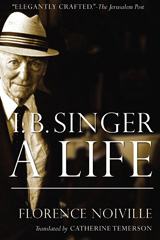 Isaac B. Singer: A Life
Florence Noiville
Northwestern University Press, 2008 In this vivid biography, Florence Noiville offers a glimpse into the world of this much-loved but persistently elusive writer: Isaac Bashevis Singer. Singer (1904–91) is generally recognized as the most popular Yiddish writer of the twentieth century. His widely translated body of work, for which he received the Nobel Prize in Literature in 1978, is beloved around the world. But although Singer was a very public and outgoing figure, much about his personal life remains unknown. Singer was greatly influenced by his early years in Poland, with his rabbi father and rationalist, secular mother. His interest in themes of faith and dilemma stem directly from this set of conflicts; he bounced back and forth between revering and fighting orthodoxy. This was not the only paradox in his life, however: this man, who wrote many successful children’s books, had abandoned his first wife and only son in Poland as the Nazis began to sweep across Europe. His novels and stories are recognized for their mystical, folkloric tone and his public image was that of a grandfather or uncle; but he was wracked with self-doubt, a womanizer, and, as Noiville writes, a “modern virtuoso of anguish, inhibition, and fiasco.” Noiville speaks to these and other paradoxes surrounding her subject, drawing on letters, personal stories, Singer’s own autobiographies, and interviews with friends, family, and publishing contemporaries. She travels as he did, from Poland to New York to Florida, tracing his journey from penniless immigrant to Nobel laureate. By pursuing Singer’s public and private past, she rebuilds his story and the story of the world he wrote from: a Yiddish world, a Poland removed from history by Nazi Germany.
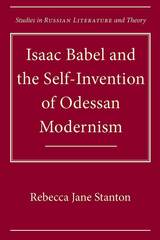 Isaac Babel and the Self-Invention of Odessan Modernism
Rebecca Jane Stanton
Northwestern University Press, 2012 In what marks an exciting new critical direction, Rebecca Stanton contends that the city of Odessa—as a canonical literary image and as a kaleidoscopic cultural milieu—shaped the narrative strategies developed by Isaac Babel and his contemporaries of the Revolutionary generation. Modeling themselves on the tricksters and rogues of Odessa lore, Babel and his fellow Odessans Valentin Kataev and Yury Olesha manipulated their literary personae through complex, playful, and often subversive negotiations of the boundary between autobiography and fiction. In so doing, they cannily took up a place prepared for them in the Russian canon and fostered modes of storytelling that both reflected and resisted the aesthetics of Socialist Realism. Stanton concludes with a rereading of Babel’s “autobiographical” stories and examines their legacy in post-Thaw works by Kataev, Olesha, and Konstantin Paustovsky.
 Isaac Backus on Church, State, and Calvinism: Pamphlets, 1754–1789
Isaac Backus
Harvard University Press Isaac Backus, whose career spanned the sixty years from the First to the Second Great Awakening, was the most forceful and effective spokesman for the evangelical theory of the separation of church and state that America has produced. In this respect, as William McLoughlin points out in his detailed and perceptive Introduction, Backus deserves to rank with Roger Williams and Thomas Jefferson. His ambition, not finally achieved until a generation after his death, was to obtain religious liberty and equality for all sects through the disestablishment of the Congregational churches in New England.
Born in Connecticut in 1724, Backus began his ministerial life as a lay exhorter for the Separate Baptists; eventually, in 1766, he helped found the antipedobaptist church. In the course of his long career he contributed significantly to the rationale of the Baptist movement and to the reconciliation of Calvin's beliefs in human depravity and predestination with the Enlightenment's faith in free will and self-determination. This collection of his writings, made available here for the first time in more than a century, emphasizes his contribution to the movement for the separation of church and state—an effort for which he is historically most notable.
Isaac Bashevis Singer: A Life
Janet Hadda
University of Wisconsin Press, 2003 Isaac Bashevis Singer brought the vibrant milieu of pre-Holocaust Polish Jewry to the English-speaking world through his subtle psychological insight, deep sympathy for the eccentricities of Jewish folk custom, and unerring feel for the heroism of everyday life. His novels, including The Family Moskat and Enemies: A Love Story, and his short stories, such as "Yentl" and "Gimpel the Fool," prove him a consummate storyteller and probably the greatest Yiddish writer of the twentieth century.
 Isaac, Iphigeneia, and Ignatius: Martyrdom and Human Sacrifice
Monika Pesthy-Simon
Central European University Press, 2017 What is the meaning of the martyr’s sacrifice? Is it true that the martyr imitates Christ? After the “one and eternal” sacrifice of Jesus why are from time to time new (and often quite numerous) sacrifices necessary? What is the underlying concept concerning the divinity? How do these ideas survive in present times? These are the kind of questions behind the inquiries in this monograph. The author investigates martyrdom as a (voluntary) human sacrifice and wishes to demonstrate how human sacrifice has been turned into martyrdom. The two emblematic figures of this transformation are Iphigeneia and Isaac. Pesthy argues that all the peoples in the environment in which Christianity came into being are characterized by a very ambiguous and hypocritical attitude toward human sacrifice: while in theory they condemn it as barbarian and belonging to bygone times, in concrete cases they accept, admire and practice it. The same attitude survives in Christianity in which martyrs replace the human sacrifice of olden days: they are real sacrifices, not symbolical ones. Our feelings about martyrs can be very different: we may admire their unbending courage and heroism or be irritated by their stubbornness, or even feel disgusted at the fanaticism with which they strove for death. But whatever our feelings may be, we must admit that a very strong motivation is needed to accept voluntarily or even seek death (and, in the majority of cases, a very painful death at that).
Isaac Israeli: A Neoplatonic Philosopher of the Early Tenth Century
Isaac Israeli
University of Chicago Press, 2009 Recognized as one of the earliest Jewish neo-Platonist writers, Isaac ben Solomon Israeli (ca. 855–955) influenced Muslim, Jewish, and Christian scholars through the Middle Ages. A native of Egypt who wrote in Arabic, Israeli explored definitions of such terms as imagination, sense-perception, desire, love, creation, and “coming-to-be” in his writings. This classic volume contains English translations of Israeli’s philosophical writings, including the Book of Definitions, the Book of Substances, and the Book on Spirit and Soul. Additionally, Isaac Israeli features a biographical sketch of the philosopher and extensive notes and comments on the texts, as well as a survey and appraisal of his philosophy. Restored to print for the first time in decades, Isaac Israeli will be essential reading for students and scholars of medieval philosophy and Jewish studies.
Isaac Murphy: I Dedicate This Ride
Frank X Walker
Ohio University Press, 2010 The captivating story of a record-setting nineteenth-century black jockey told in poetry. In this creative foray into persona poems, Walker immerses himself in the life of African American jockey Isaac Burns Murphy (1861–1896). The son of a slave, Murphy’s legendary career riveted the attention of the nation and established him as one of the greatest jockeys of all time. Walker’s poetry breathes life into the voices of Murphy and his family, the neglected history of African Americans in thoroughbred racing, and racial tensions in the post-Civil War South. Published in 2010 by Old Cove Press
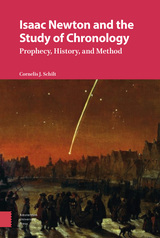 Isaac Newton and the Study of Chronology: Prophecy, History, and Method
Cornelis Schilt
Amsterdam University Press, 2021 Isaac Newton (1642-1727) is best known for his natural philosophical and mathematical works. Yet he devoted ample time to the study of ancient chronology, resulting in the posthumously published The Chronology of Ancient Kingdoms Amended (1728). Here, Newton attempted to show how the antiquity of Greece, Egypt, Assyria, Persia, and other Mediterranean nations could be reinterpreted to fit the timespan allowed for by Scripture. As the hundreds of books from his library and the thousands of manuscript pages devoted to the topic show, the Chronology was long in the making. This volume provides the first comprehensive analysis of the genesis and evolution of Newton’s studies of ancient history and demonstrates how these emerged from that other major scholarly project of his, the interpretation of the apocalyptic prophecies in Scripture. A careful study of Newton's reading, note-taking, writing, and ordering practices provides the key to unravelling and reconstructing the chronology of Newton’s chronological studies, bringing to light writings hitherto hidden in the archives.
|
|
